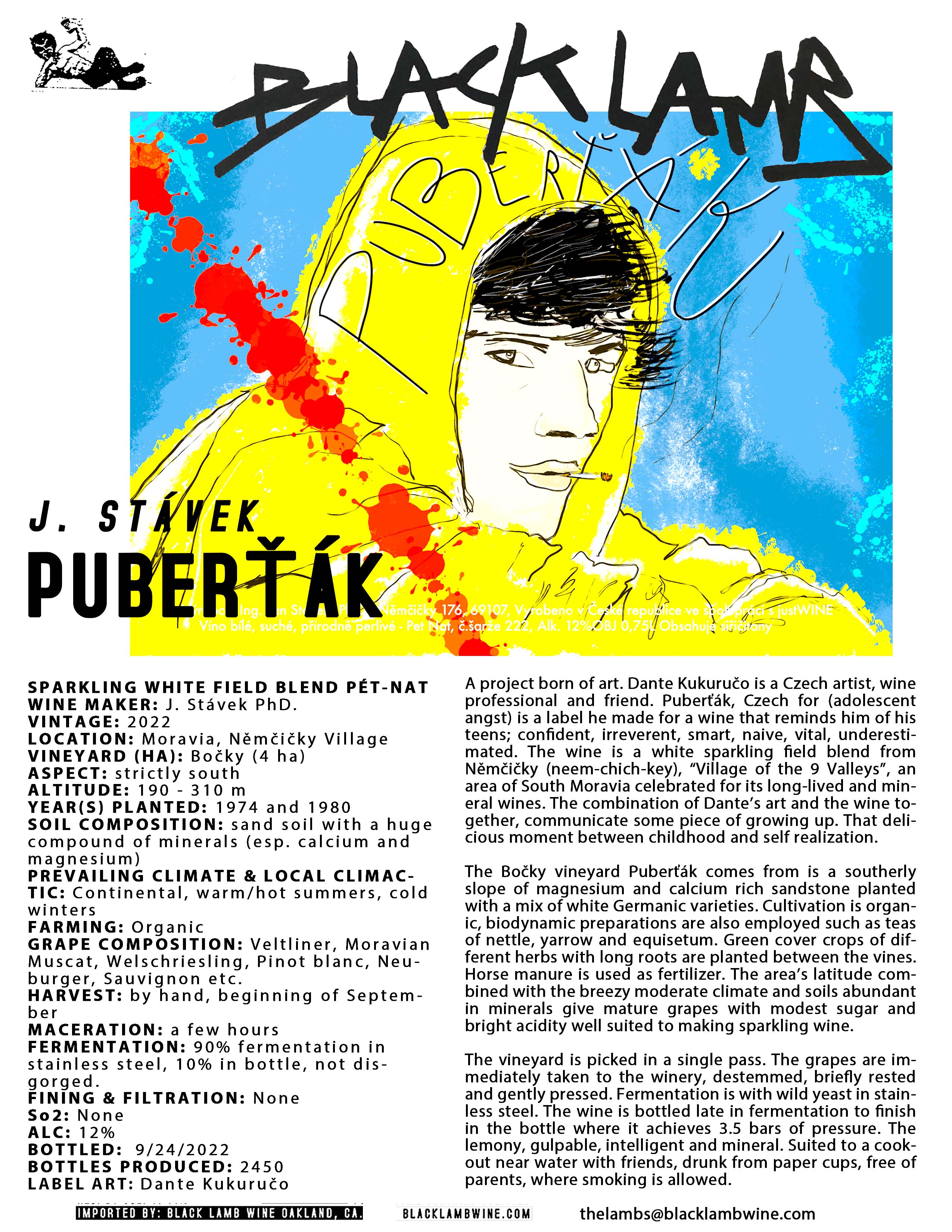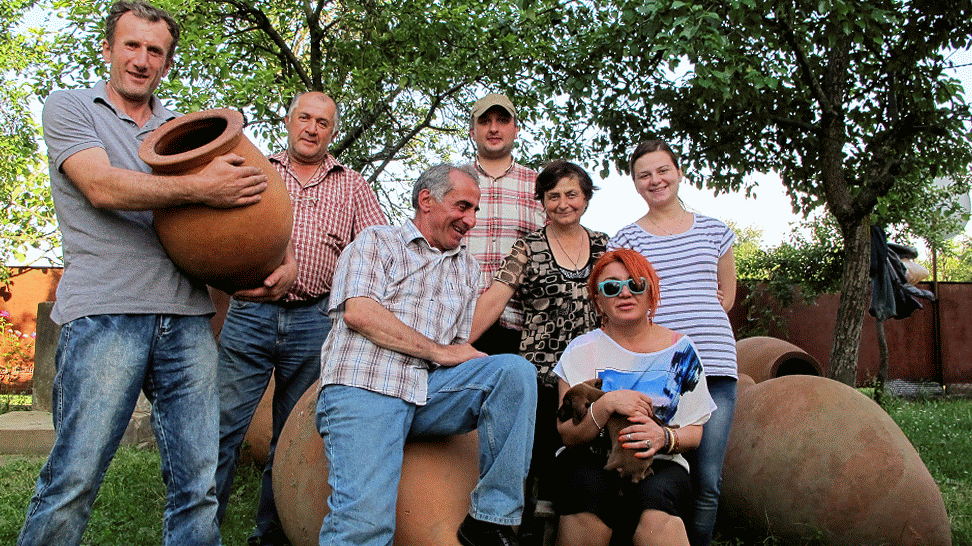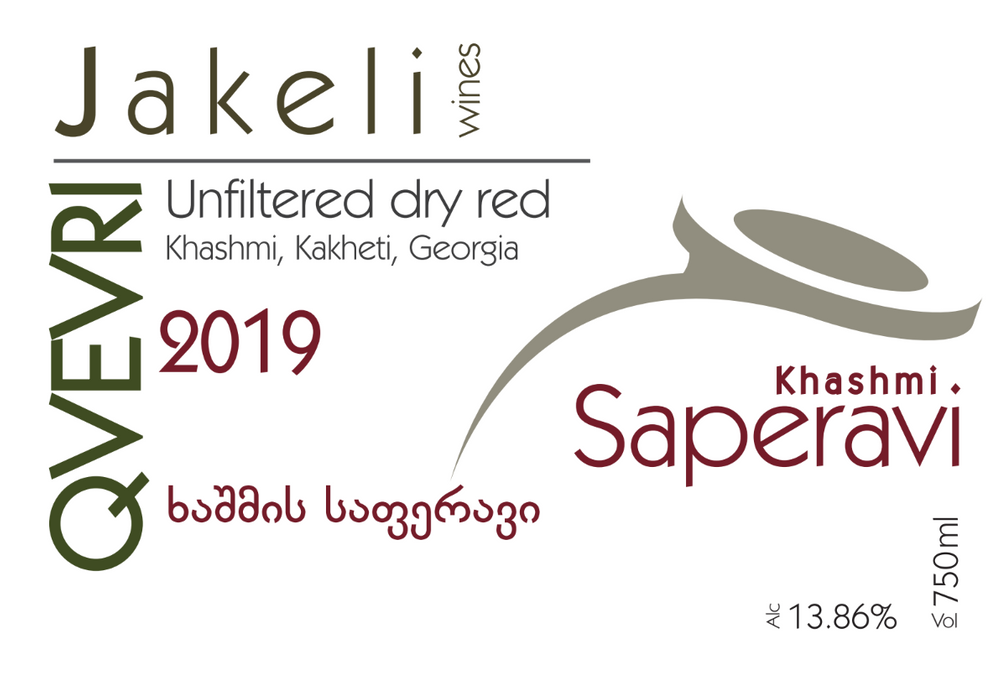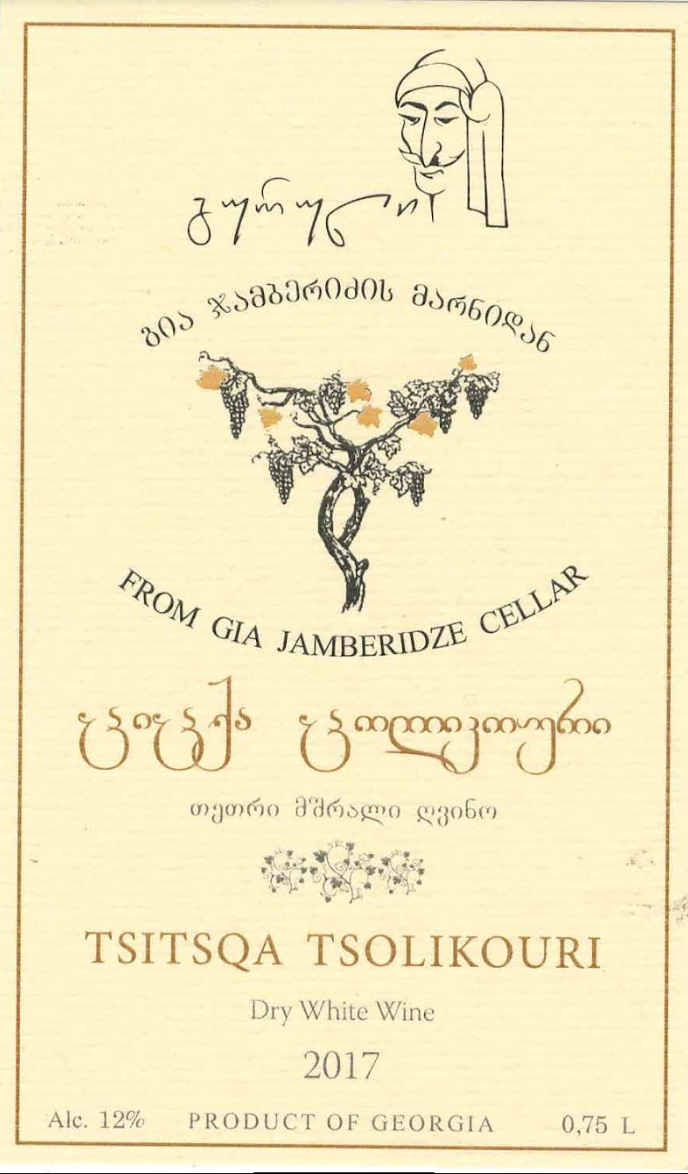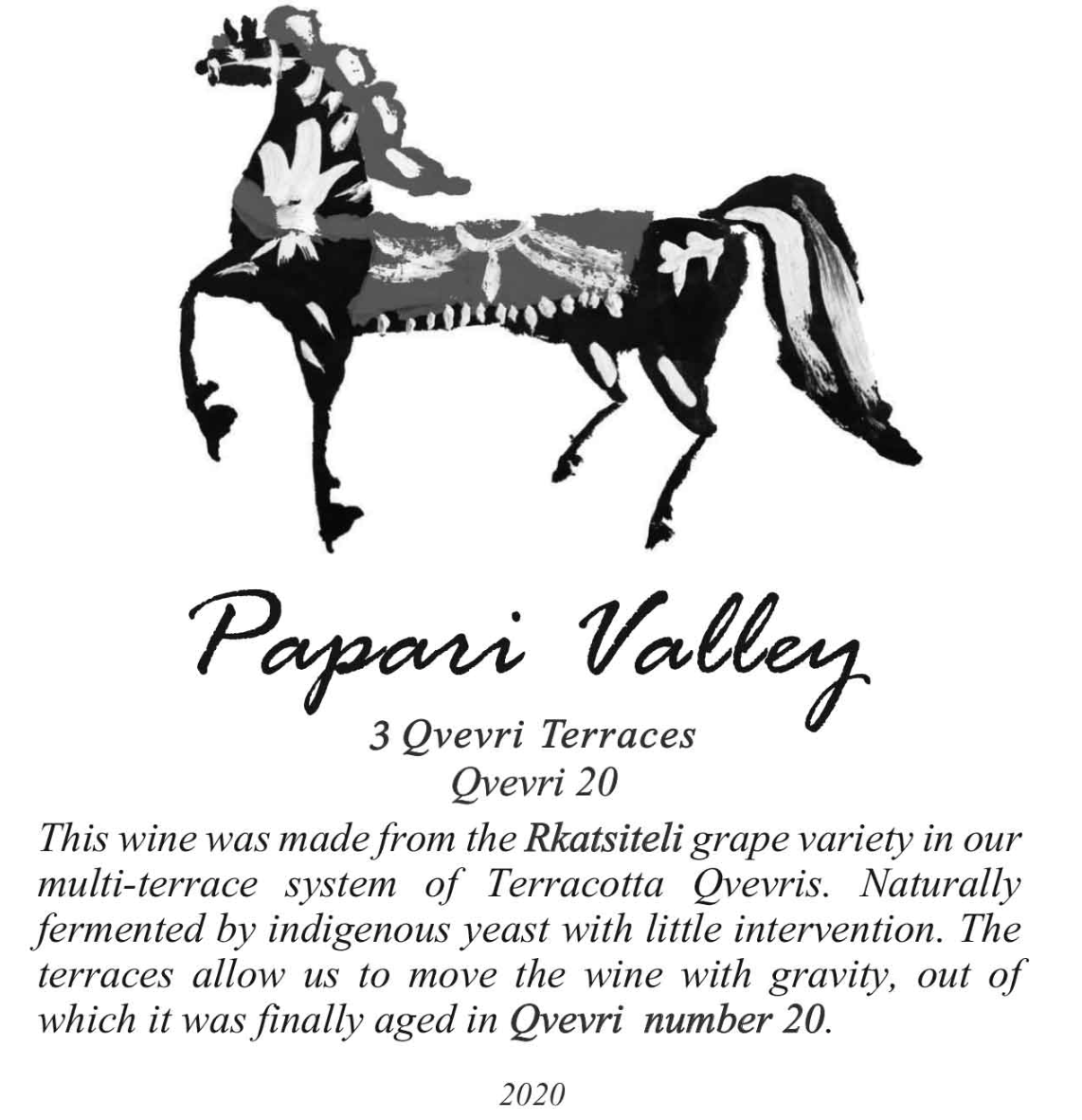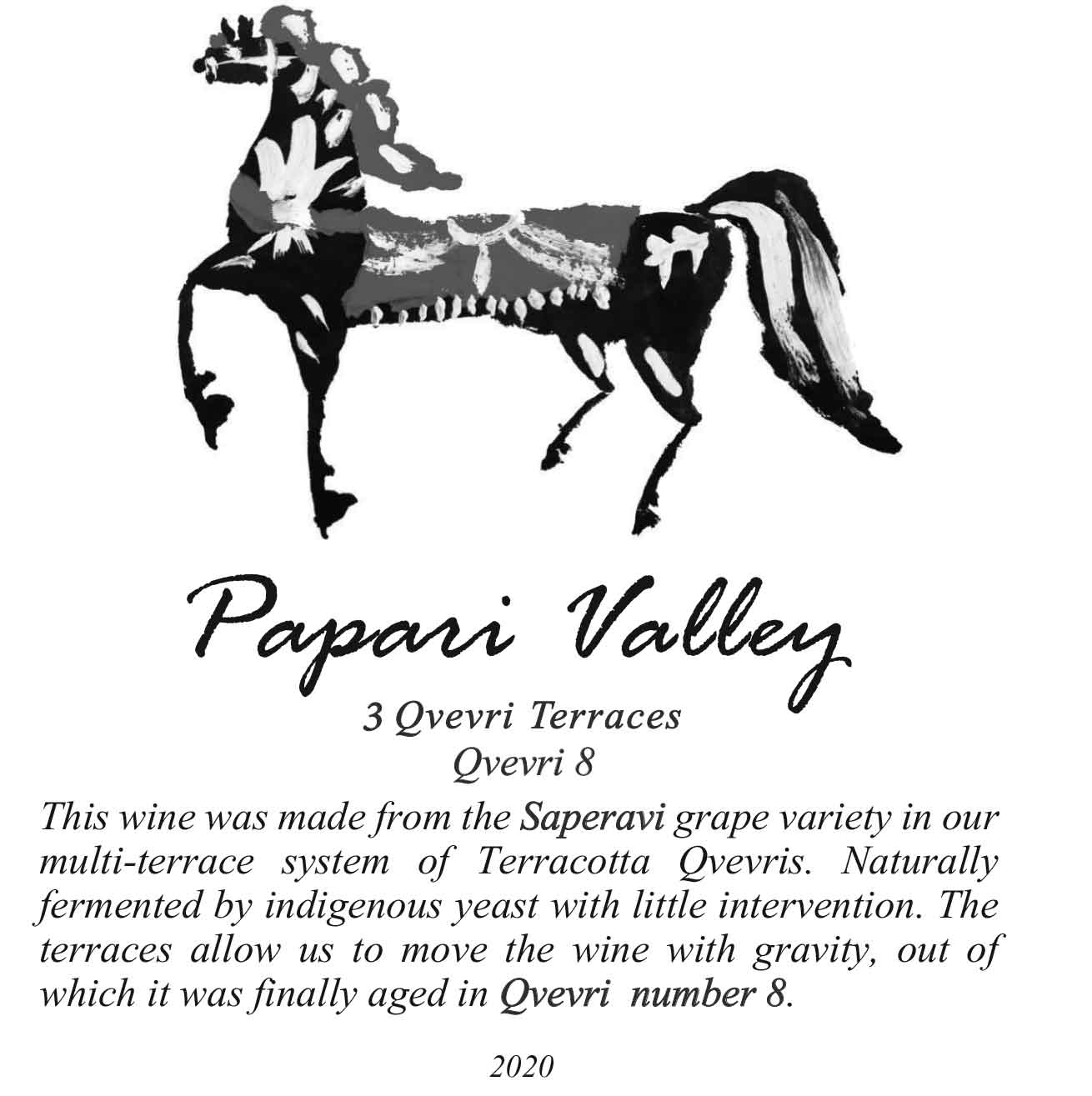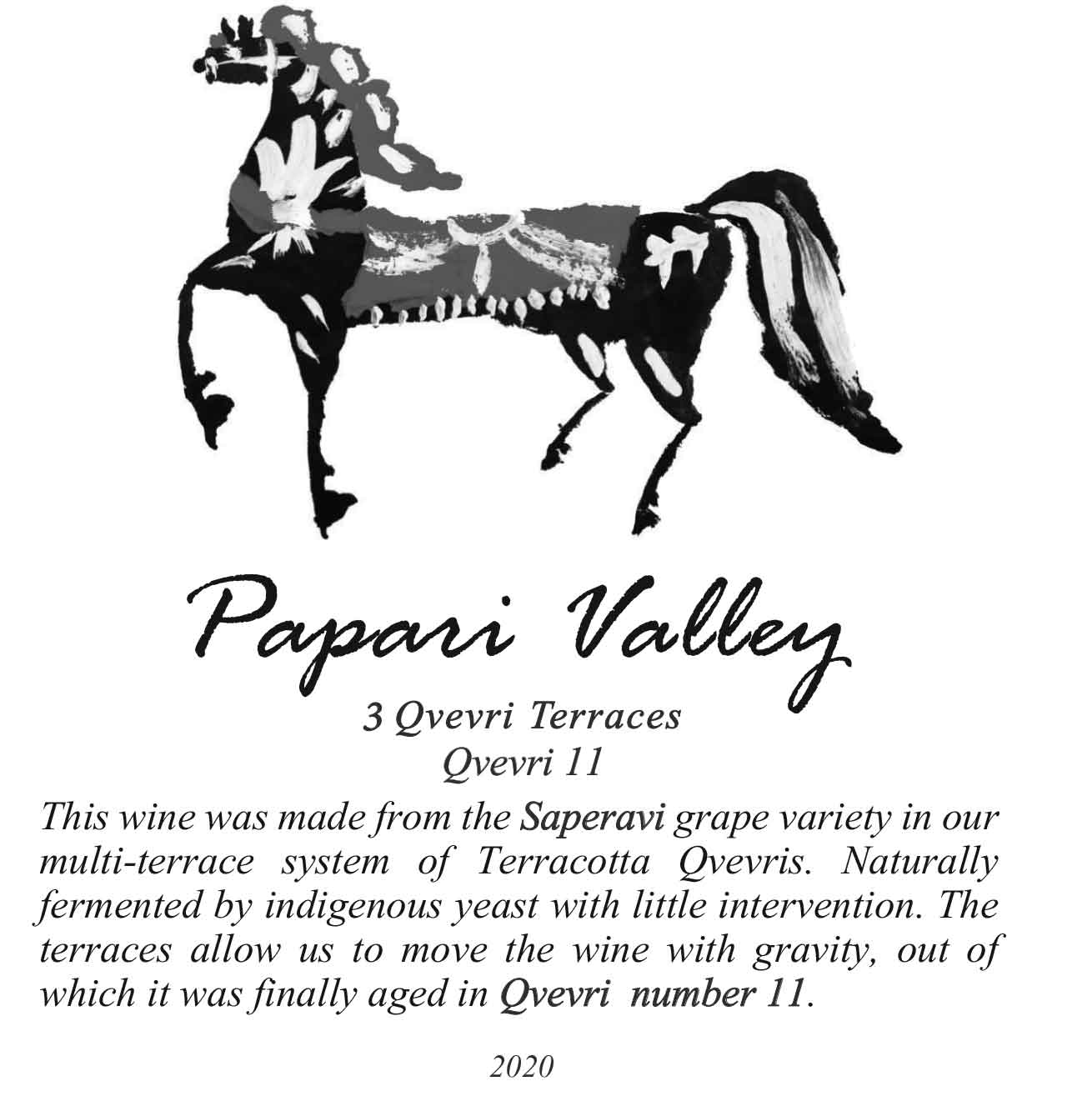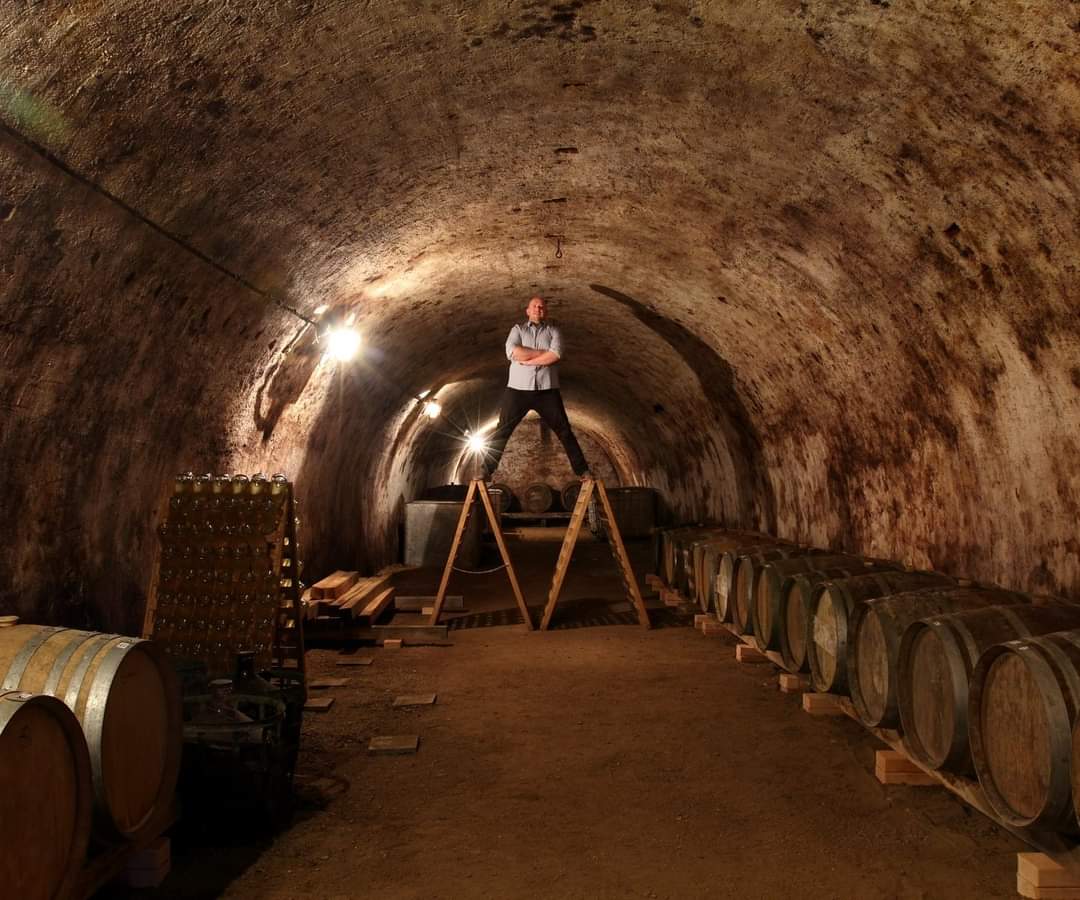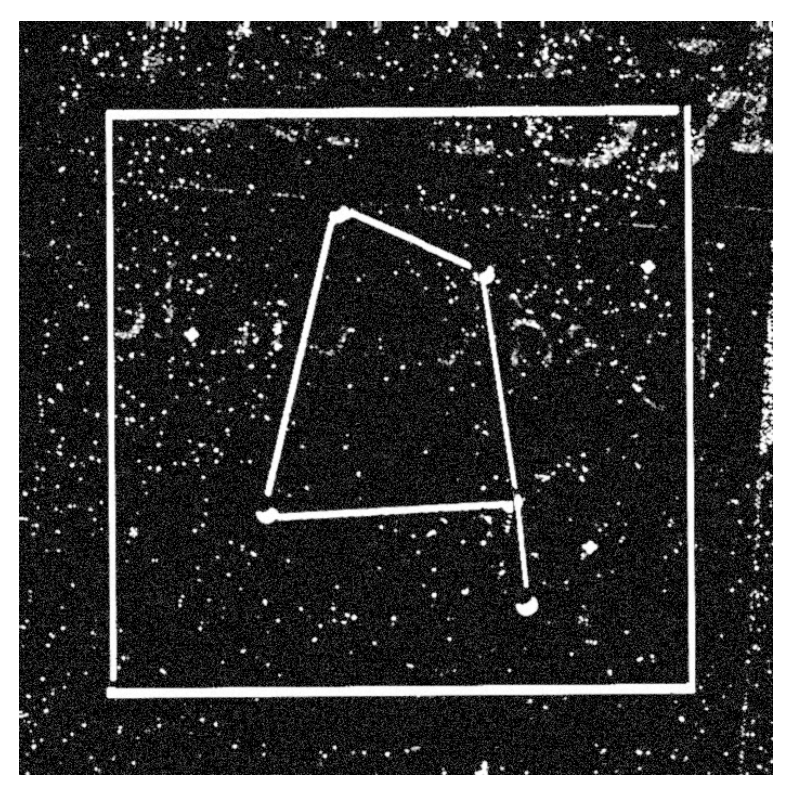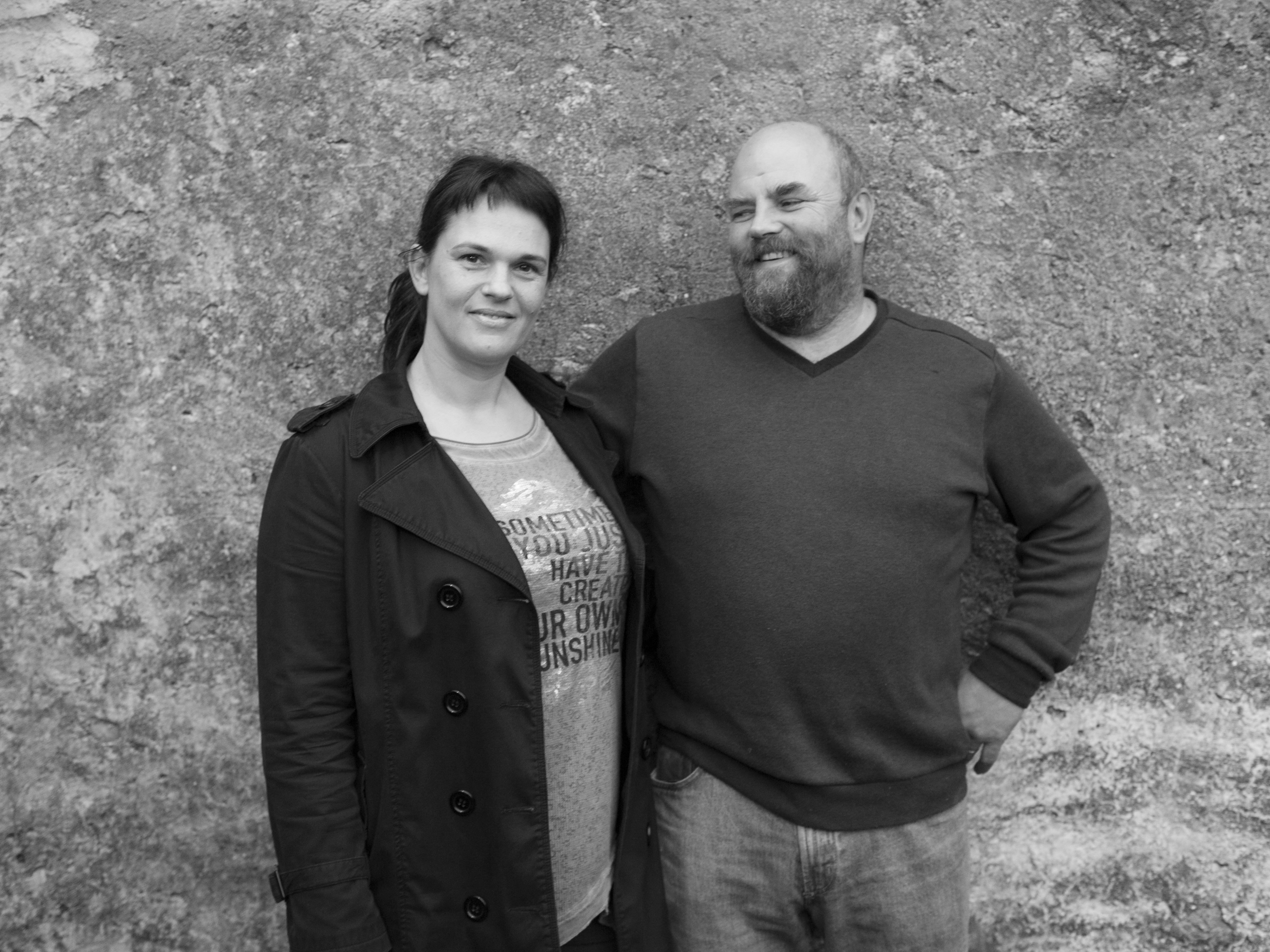NY - Babysips
Black Lamb NYC Portfolio tasting
Wednesday 11/5
trade:11-4
drinkers: 3-empty
Thursday 11/6 6pm
176 Rivington LES NYC
We will open all of the new arrivals; foreign and domestic, at the most adorable new addition to the NYC wine bar scene. Consumers will have the chance to try all the same wines that will be poured for the trade for $25.
--
LA - Open Market
Friday, 11/7
SPECIAL EVENING POP-UP WITH Alejandro of Chateanuef-du-Fargosonini!
3339 Wilshire Blvd. Los Angeles, CA
Chef Kara Vorabutr of @bistroblue.la blends Thai-American heritage with Mediterranean ease and French technique, turning humble ingredients into soulful, sun-lit plates that feel like home.Winemaker Alejandro Fargosonini of @chateauneuf_du_fargosonini transforms fruit destined for waste into wild, off-grid wines that speak of soil, risk and regeneration.
Tone set by the sonically driven @barmemento , upcoming vinyl wine bar in K-town.
--
GLASSERIE
BTG take over w/Jean-Michel Morel of KABAJ
Saturday 11/8 6:45pm
340 Bedford
Brooklyn, NY
Jean-Michel will play sommelier at Glasserie one night only! Glasserie is a forever favorite. The food and wine program is as timeless as the space iteself. We have collaberated with Glasserie since the early days and don’t intend to stop. One of Brooklyn’s seminal spots.
--
With Others
Sunday School with KABAJ’s Jean-Michel Morel
Sunday 11/9 2pm
340 Bedford
Brooklyn, NY
sold out
A specially curated winemaker led (Jean-Michel Morel)class focused on the specifics and diversity within the category of skin contact / oxidative wines. This will be a stimulating, lively conversation with one of the foremost makers of traditionally styled Slovenian
wines.
--
CELLAR 36
SAT. 10/25
8:30 - late
36 Market St, New York, NY
DRINK WITH THE WINEMAKER
Jean Michel Morel of KABAJ will be pouring flights and drinking old magnus
Cellar 36 is one of the most fun places to drink wine in NY. It is big, moody and loud, people are there to enjoy themselves and share. The food is simple and makes you want to drink more. The wine list reads like a personal wine collection that someone decided to print up. It is endless and only has about half of what partners Fernando Martinez and Nodar Toronjadze have collected. For years they were the faces behind the bar at The Ten Bells and know what is important and what is not. This is going to be THE Karaktarre after party!
--
STARR WINE
Sat. 10/25
KABAJ SHOP TAKE OVER hosted by Jean Michel Morel
6-8pm
321 Starr St G2, Brooklyn, NY
Fabrizio Pirolo is a seasoned wine pro with many years in the industry and a deep knowledge of Italy and adjacent wines. Starr Wine is his tight little bottle shop in Bushwick that has a curated collection that reflects his tastes and that of the neighbrohood. He has worked with just about every KABAJ wine we have imported. Exactly what is offered ebbs with the season. This night only Jean Michel will pour a particularly broad selection on account of his visit.
--
KAFANA
Fri. 10/24
9:30PM
MOVIA/KABAJ
Feat. LIVE MUSIC
Wine Pairing + Kafana Prix Fix Dinner $120pp
116 Loisaida Ave, New York, NY
KAFANA has been an Alphabet City institution since Vladimir Ocokoljic opened in 2008. The list of Central European wines has long been the deepest in the city. Recently it has been getting more attention for the range of vintages and special bottles that Vlad has collected. Movia and Kabaj are literally family and practically neighbors so to have both legendary producers together for one night at Kafana is the perfect Karaktarre launch party.
--
ATLAS WINE MERCHANTS
MEET THE WINEMAKER: Jean Michel Morel of KABAJ
Fri. 10/24
6-8pm
1069 Bedford Ave, Brooklyn, NY 11216
Karl Wurst of ATLAS WINE has worked with the KABAJ wines for more than 10 years. He was one of the first retailers to present the wines of Central Europe on par with those of West Europe. KABAJ has remained a staple of his selection over the years but this is the first time winemaker Jean-Michel will pour in the shop.
--
THIRST MERCHANTS
MEET THE WINEMAKER: Alejandro Fargosonini of Châteauneuf-du-Fargosonini
Fri. 10/24
5:30 - 7:30
11 Greene Ave, Brooklyn, NY
Thirst is a staple shop that has forever heralded personal soulful and unexpected natural wines. Often long before they are recognized. Rather than buying by wine, Nick Politan selects by producer, often carrying numerous bottles from each. Nick encountered Alejandro Fargosonini's Plum Noumena late after a biiiiig tasting event and exclaimed, "that's the most interesting thing I tried all day!". He was really excited when we shared the wines especially since he loved them all. He was one of the first to purchase the Châteauneuf-du-Fargosonini and bought all three of the wines we currently carry.
--
JUNE WINE BAR
Meet the Winemakers(s) - Double Flight
Thurs. 10/23
5 - 8 pm
231 Court St, Brooklyn, NY
Meet two of the most eccentric and talented winemakers at JUNE one of Brooklyn's OG natural wine bars. Jean Michel Morel of KABAJ (Slovenia) and Alejandro Fargosonini Châteauneuf-du-Fargosonini (Central California). Each will pour a three wine flight selected by wine director Jen Abbot. Jen worked with the KABAJ wines in a previous life and was one of the first to introduce the visionary wines of Châteauneuf-du-Fargosonini to her program.
--
RUFFIAN WINE BAR
Winemaker dinner with Jean Michel Morel of KABAJ
Wed. 10/22
5 courses, 5 wines
2 seating (6 and 8:30pm)
reservations on resy
125 E 7th St, New York, NYRuffian Wine Bar has long been one of the best places to drink Central European wines in NY. KABAJ has been a fixture of owner Patrick Cournot's wine lists even before he established Ruffian. He and Jean Michel have been friends for years and they have hosted many events together. The exceptional 5 course paired meal will be enhanced by many stories and warm emotions.
acquire regenerative sorcery
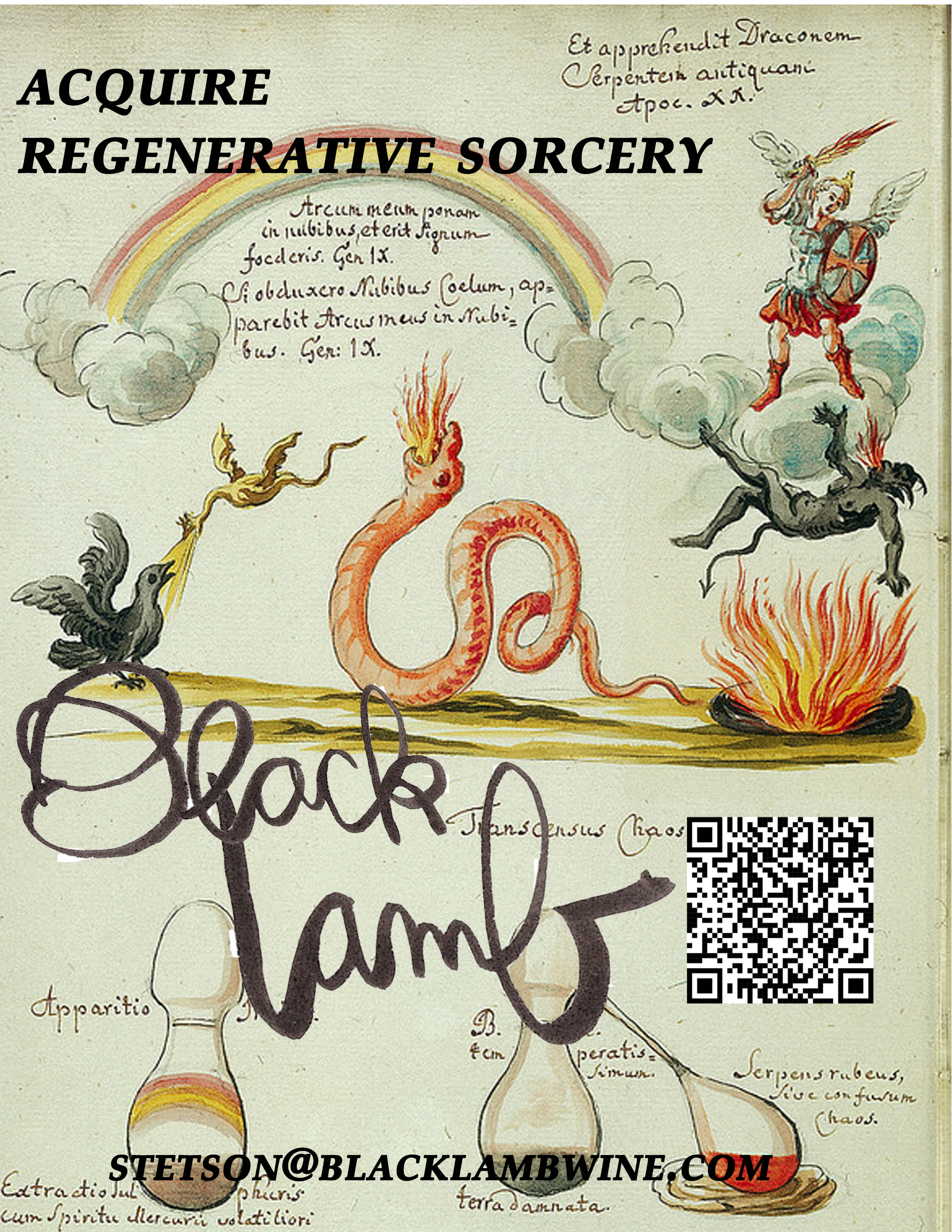
Gain deep insights into your land, measure and enhance the benefits of your regenerative efforts. Share your impact directly with your customers without the burden of the Organic bureaucracy. DEEP PLANET can help...
for more information...
for a human demo...
EAZY FROM IZOLA!
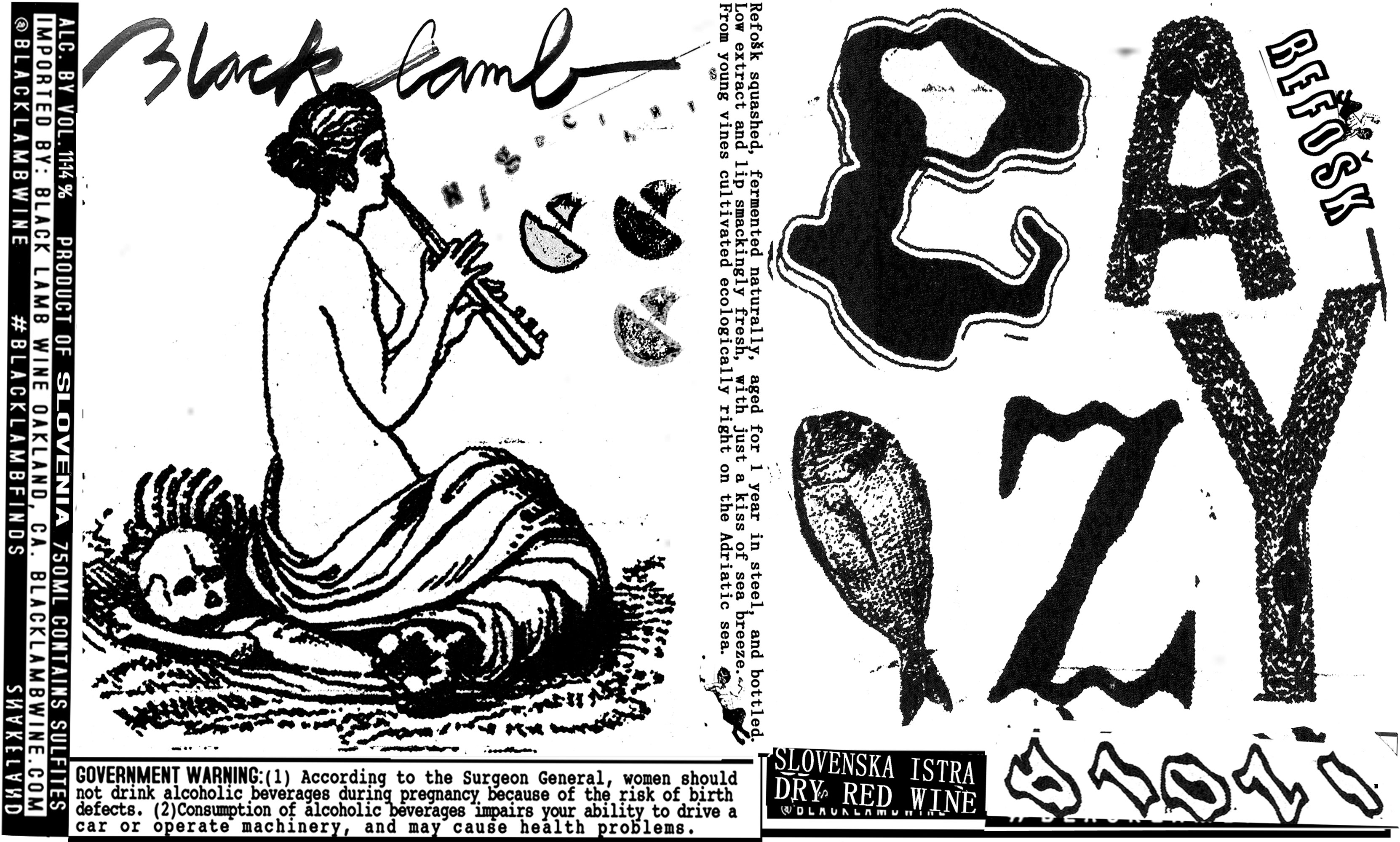
Refošk squashed, fermented naturally, aged for 1 year in steel, and bottled. Low extract and lip smackingly fresh, with just a kiss of sea breeze. From young vines ecologically cultivated right on the
Adriatic sea.
DRY RED WINE
WINEMAKER: Matej Zaro
VINTAGE: 2021
REGION: Slovenia, Slovenska Istra, Izola
VINEYARD: 4ha positioned overlooking the Adriatic
ASPECT: Slight southerly exposition
ALTITUDE: 50m
SOIL: Flysch and Clay
FARMING: Organic
GRAPE(S): 100% Refošk
HARVEST: SEPTEMBER 15, 2021
MACERATION: Destemed, maceration of 7 - 10 days
FERMENTATION: Spontaneous in stainless steel
AGING: 2 year in stainless steel
FILTRATION: Unfiltered
BOTTLES PRODUCED: 10,000
Eazy comes from the ZARO family cellars in Izola. It is a wine that is mainly sold through their wine bar MANZIOLI. All of the fruit comes from their organically cultivated vineyards. The Eazy vineyard is a literal stone’s throw from the sea. Slovenia’s idyllic slice of the Adriatic, is dotted with seaside villages and vineyards full of the ancient red Refošk variety. The Italians call it Refosco dal Peduncolo Rosso, but the variety and its kin are much more important in Slovenia/Croatia than in Italy, and generally produce more interesting wines. IZOLA is a favorite of ours; its combination of sun, stone and sea results in a Refošk unique to the region and very useful to have on hand when it comes to seafood. While tourists guzzle white Istrian Malvazija, the locals will opt for a fresh Refošk. We love when Istrian restaurants have a good “open” Refošk. This is a reference to a wine that does not make it to bottle but instead is sold locally on draft. Typically these are low in alcohol and extract while high in acidity and sea inflected. Ubiquitous to the region, a red wine of this style and function is a rarity here in the US. What other red wines enhance strong seafood? It's smashing with tinned fish, mussels, mackerel, squid ink risotto, raw tuna, cured anchovies...This is not to say it is for seafood alone. Charred green veggies, salty cheeses, locals will drink it with big plates of expertly cut salt cured ham Pršut, Slovenian Prosciutto. Its acidity and saltiness make it especially complementary of savory flavors.

EAZY FROM IZOLA!
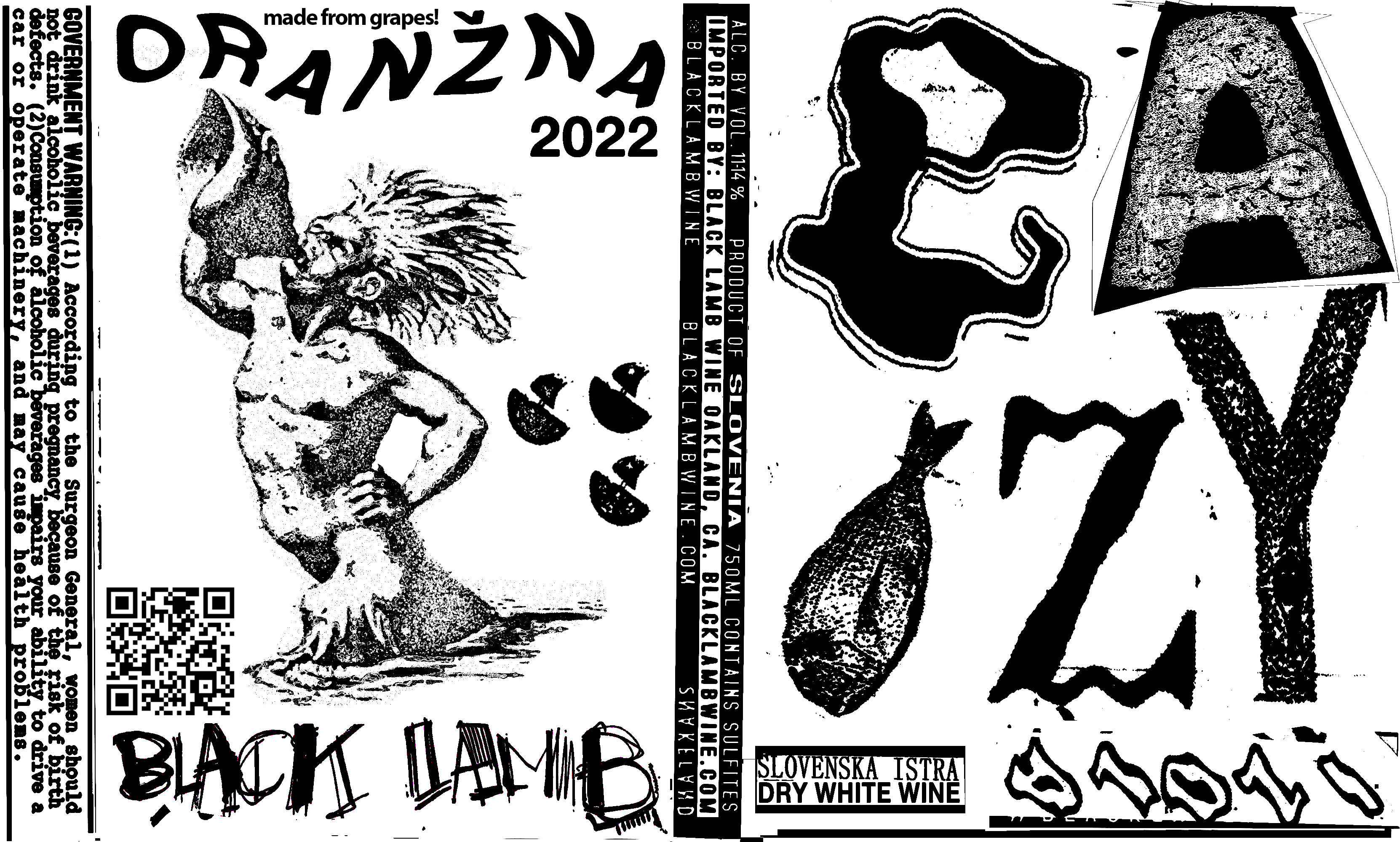
DRY ORANŽNA WINE
WINEMAKER: Matej Zaro
VINTAGE: 2022
REGION: Slovenia, Slovenska Istra, Izola
VINEYARD: mixed vineyard of old vines
ASPECT: Southerly exposition
ALTITUDE: 150m
SOIL: Flysch and Clay
FARMING: Organic
GRAPE(S): Malvazija, Chardonnay, Pinot Blanc, Yellow Muscat
HARVEST: mid September
MACERATION: Destemed, maceration of 14 days mixed varieties. 15% was Malvazija pressed off of the skins
FERMENTATION: Spontaneous in stainless steel, small percentage of oak tank aged Malvazija.
AGING: 2 year in stainless steel
FILTRATION: Unfiltered
BOTTLES PRODUCED: 6,000
ORANŽNA
is a saline skin contact white wine made from grapes grown along Slovenia’s Adriatic Coast. It was intended to be the final wine of the vineyard, which was set to be grafted to other varieties but the wine was too good to not allow the vines a few more vintages. Technically it is two vineyards. About 15% percent of the juice is Malvazija from a site that gives a flinty structure to the wine, a welcome balance to, the sunny disposition of the old vines. It is a quintessential expression of Coastal Slovenian skin contact white wine AKA Orange Wine.

WINE PRODUCERS IN THE POLITICALLY DEMARCATED ZONE OF...
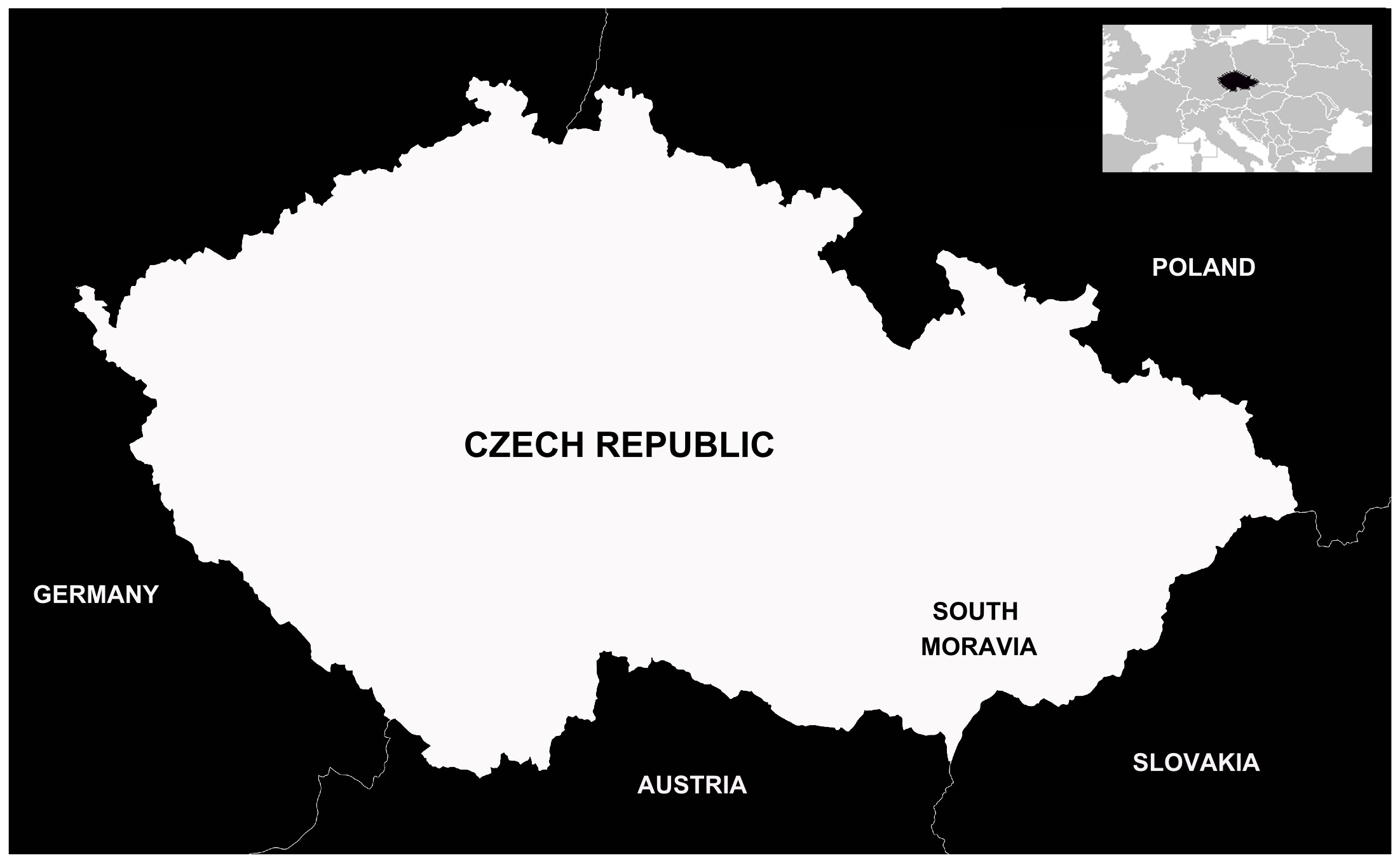
PRODUCERS
OŠICKA
SOUTH MORAVIA
KORAB
SOUTH MORAVIA
DVA DUBY
SOUTH MORAVIA
TŘI ČTVRTĚ
SOUTH MORAVIA
PETRA BREDOVA
SOUTH MORAVIA


DVA DUBY
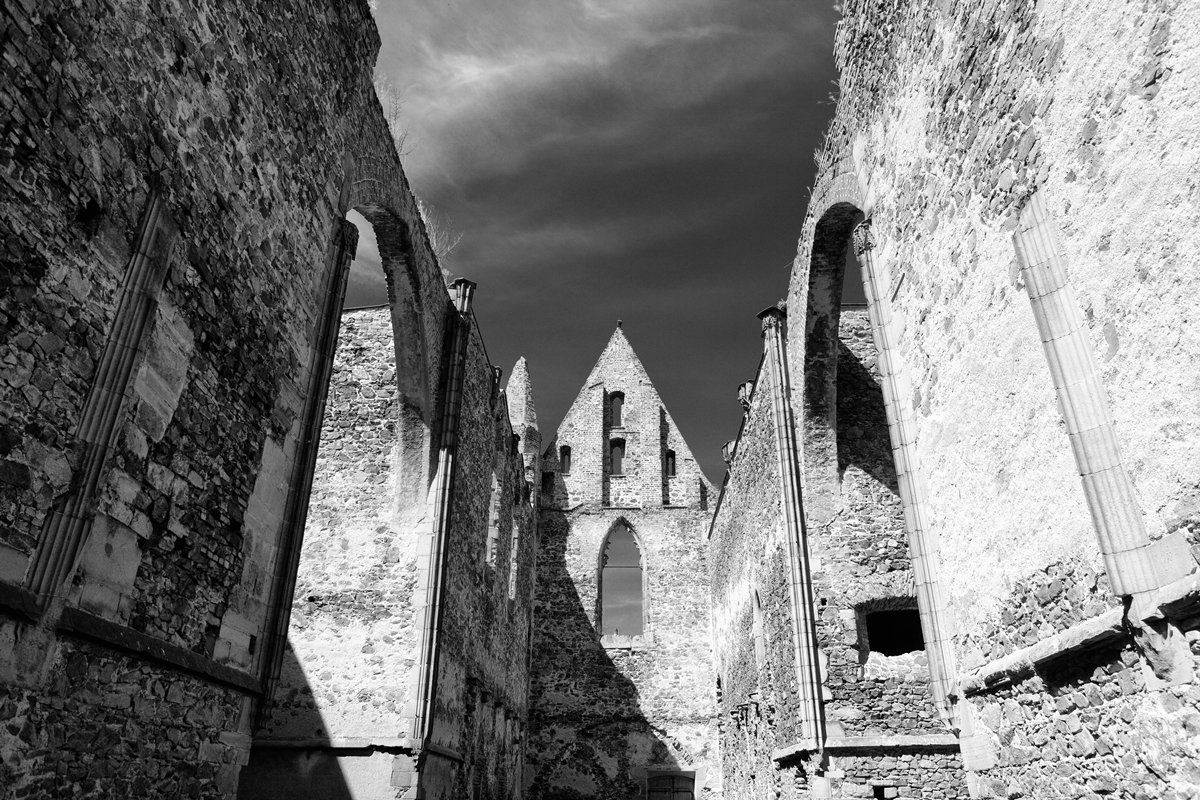
PRODUCER: DVA Duby.
REGION: Dolní Kounice, Czechia.
REGION: Dolní Kounice, Czechia.
Farming and sourcing from granitic soils. Among the most mineral of wines. Concentration, without high alc., low sulfur, longevity. Savory, gastronomic, uncompromising style. JIŘÍ ŠEBELA is single minded and exudes conviction, so do his wines. They are serious and share a complexive, brooding quality, as if the wines themselves are deep in thought. Functionally they are classical, deserving of a cellar and best enjoyed as accompaniment to elevated gastronomy. The flavors oscillate between fruitiness and vegetal, mineralic and animal. Particularly umami, marked by the life of the vines and the biology of the cellar. Dva Duby (Two Oaks) South Moravia, Czech Republic. 7 ha primarily old vines. The soils are ancient and fascinating, 650 million years old granodiorite a form of granite that has a dramatic impact on the wines. Biodynamically farmed since 2007, production is supplemented with fruit from other organic growers in the same village. Only a small addition of sulfites before bottling. The elaborate latin names compliment the historic importance of the wine village of Dolni Kounice.

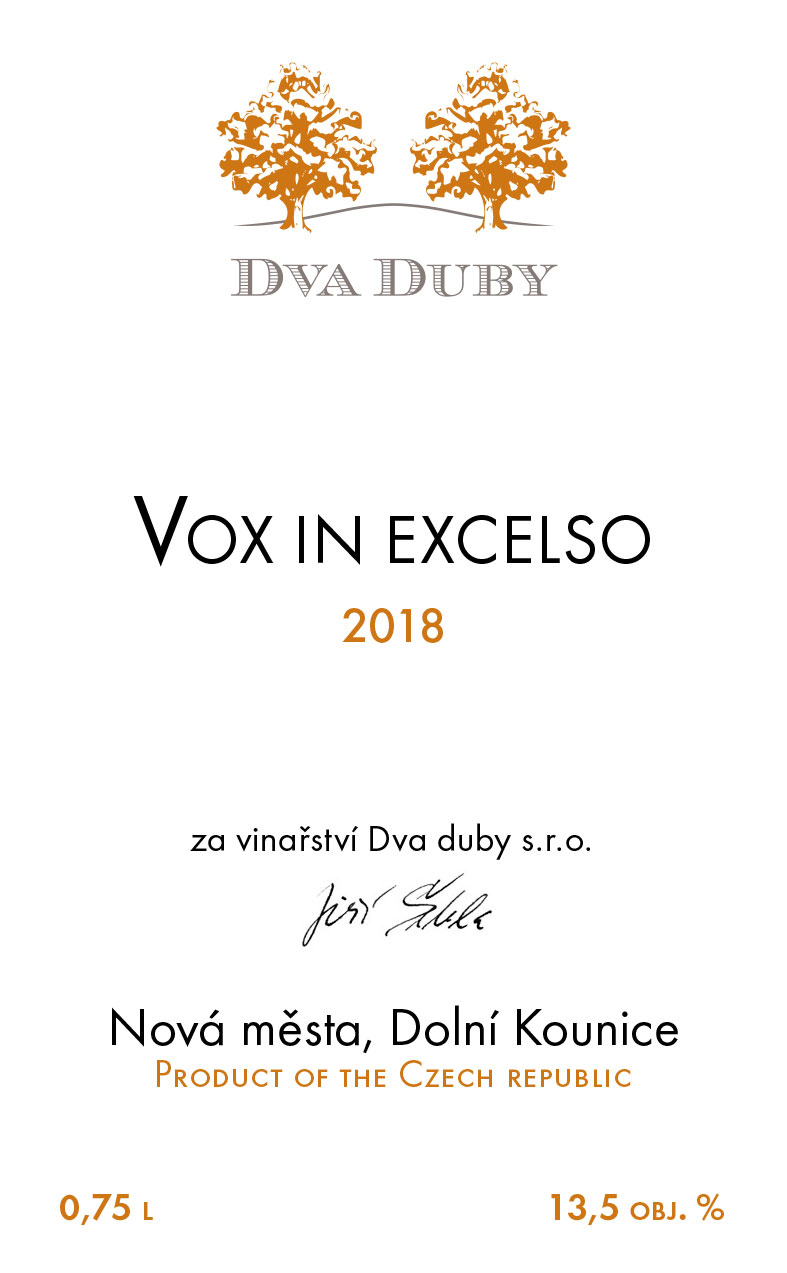
DVA DUBY
2018 VOX IN EXCELSO
WINE MAKER: JIŘÍ ŠEBELA
VINTAGE: 2018
LOCATION: DOLNÍ KOUNICE, MORAVIA, CZECH.
GRAPE: FRANKOVKA, 65 year old SINGLE BLOCK, Dolní Kounice located on GRANODIORITE (650 million year old rock).
VINIFICATION: 1 year in acacia barrels. s02 AT BOTTLING, UNFILTERED.
ALC: 13.5% by Vol.
VINTAGE: 2018
LOCATION: DOLNÍ KOUNICE, MORAVIA, CZECH.
GRAPE: FRANKOVKA, 65 year old SINGLE BLOCK, Dolní Kounice located on GRANODIORITE (650 million year old rock).
VINIFICATION: 1 year in acacia barrels. s02 AT BOTTLING, UNFILTERED.
ALC: 13.5% by Vol.
Vox in Excelso, Latin for Maximum Volume, this is the apogee of the estate. Especially bold and concentrated.


DVA DUBY
2018 Ex Opere Operato II
WINE MAKER: JIŘÍ ŠEBELA
VINTAGE: 2018
LOCATION: DOLNÍ KOUNICE, MORAVIA, CZECH.
GRAPE: St. Laurent (Svätovavrinecké), 65 year old SINGLE BLOCK on GRANODIORITE (650 million year old rock).
VINIFICATION: 1 year in acacia barrels. s02 AT BOTTLING, UNFILTERED.
ALC: 12% by Vol.
VINTAGE: 2018
LOCATION: DOLNÍ KOUNICE, MORAVIA, CZECH.
GRAPE: St. Laurent (Svätovavrinecké), 65 year old SINGLE BLOCK on GRANODIORITE (650 million year old rock).
VINIFICATION: 1 year in acacia barrels. s02 AT BOTTLING, UNFILTERED.
ALC: 12% by Vol.
Ex Opere Operato II is Latin for "The work is in the worker part II". It is the less exposed portion of the vineyard planted to a different clone that exhibits enough difference and character to justify bottling it separately.


DVA DUBY
2017 Svätovavrinecké
WINE MAKER: JIŘÍ ŠEBELA
VINTAGE: 2017
LOCATION: DOLNÍ KOUNICE, MORAVIA, CZECH.
GRAPE: Svätovavrinecké (St. Laurent), Vineyards over 40 years old located on GRANODIORITE (650 million year old).
VINIFICATION: 1 year in oak and acacia barrels. s02 AT BOTTLING, UNFILTERED.
ALC.: 12% by Vol.
VINTAGE: 2017
LOCATION: DOLNÍ KOUNICE, MORAVIA, CZECH.
GRAPE: Svätovavrinecké (St. Laurent), Vineyards over 40 years old located on GRANODIORITE (650 million year old).
VINIFICATION: 1 year in oak and acacia barrels. s02 AT BOTTLING, UNFILTERED.
ALC.: 12% by Vol.

DVA DUBY
2018 Svätovavrinecké
WINE MAKER: JIŘÍ ŠEBELA
VINTAGE: 2018
LOCATION: DOLNÍ KOUNICE, MORAVIA, CZECH.
GRAPE: Svätovavrinecké (St. Laurent), Vineyards over 40 years old located on GRANODIORITE (650 million year old).
VINIFICATION: 1 year in oak and acacia barrels. s02 AT BOTTLING, UNFILTERED.
ALC.: 12% by Vol.
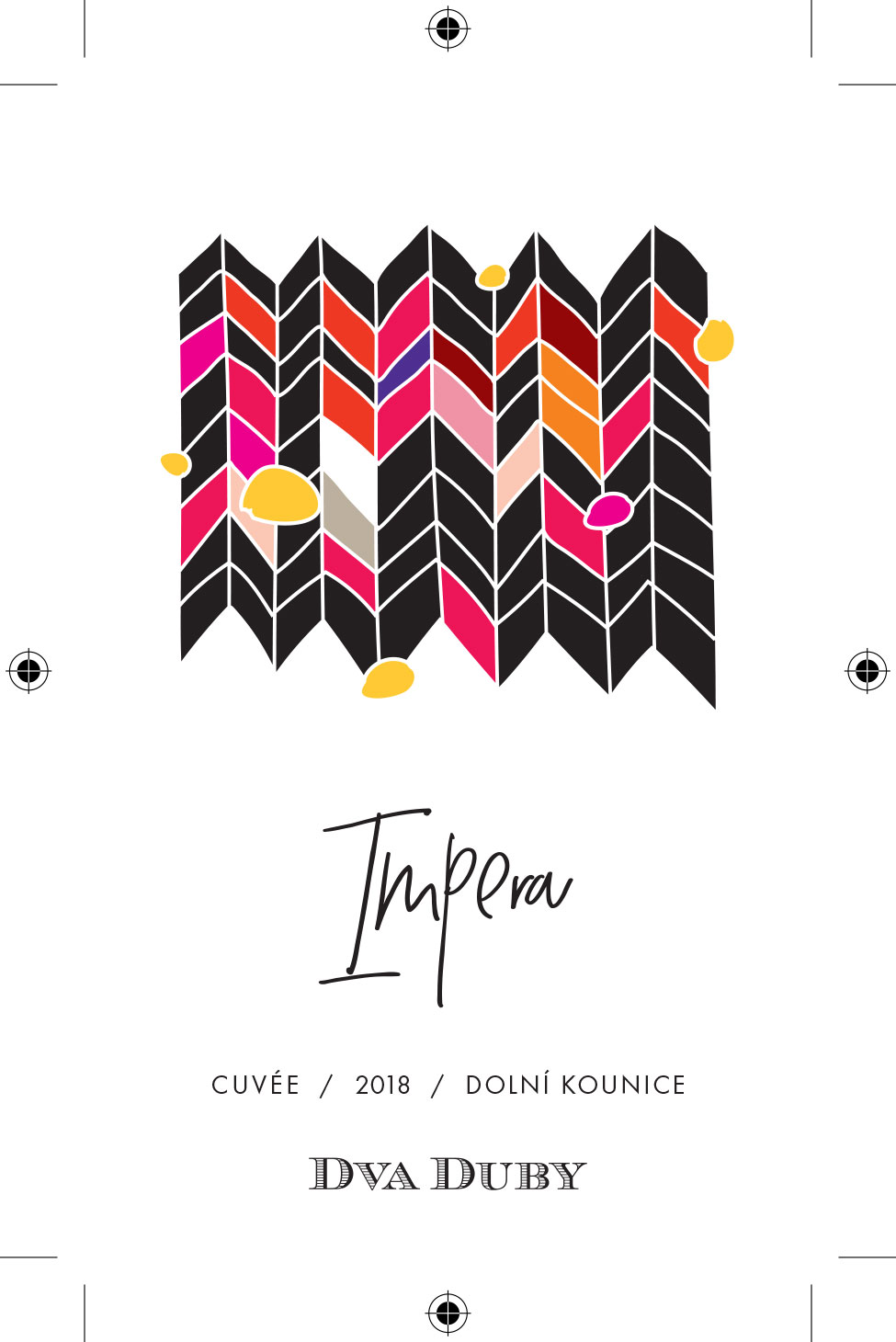
DVA DUBY
2018 Impera
WINE MAKER: JIŘÍ ŠEBELA
VINTAGE: 2018
LOCATION: DOLNÍ KOUNICE, MORAVIA, CZECH.
GRAPE: 50% St Laurent (Svätovavrinecké) and 50% Frankovka (Blaufränkisch), 40 year old vines located on GRANODIORITE (650 million year old rock).
VINIFICATION: 1 year in oak and acacia barrels. s02 AT BOTTLING, UNFILTERED.
ALC: 12% by Vol.
VINTAGE: 2018
LOCATION: DOLNÍ KOUNICE, MORAVIA, CZECH.
GRAPE: 50% St Laurent (Svätovavrinecké) and 50% Frankovka (Blaufränkisch), 40 year old vines located on GRANODIORITE (650 million year old rock).
VINIFICATION: 1 year in oak and acacia barrels. s02 AT BOTTLING, UNFILTERED.
ALC: 12% by Vol.
IMPERA is Latin for "Command" it is the house red of Dva Duby. A commanding something for everyone red. Red fruit, rock dust, and finesse.

KORÁB

PRODUCER: Petr Koráb.
REGION: Moravia, Czechia.
REGION: Moravia, Czechia.
Petr Koráb studied to become an attorney, but shortly after moving to Prague to practice law, he realized what he really wanted was to spend his time in the vineyard his grandfather had planted in 1934. “I love living with a vineyard, animals, around nature. But the main engine for me is endless learning.” Petr’s cellar among his neighbors Petr cultivates nearly 4 hectares of vineyards, some vines are 84 years old. New plantings are on limestone subsoil. Varieties selected are typical of the region. The first vintage of KORÁB - živá hora (live hill) was 2006. It began with cultivation of grapes in old vineyards, fermentation has always been spontaneous with an authentic mindset. Gradually, the vineyards were converted to organic cultivation and supplemented this with biodynamic philosophy. Petr discovered how he farmed affected the wines in the cellar. If he started with fruit that was clean and healthy the wine needs little in the cellar. This allows him to opporte in the cellar by, “controlled doing nothing”, as he describes. Petr Koráb is trying to find an authentic way. Not only new ways but also time tested old ways forgotten in today's consumer lifestyle. The ultimate goal is to bottle living wine not "marred" by additives.

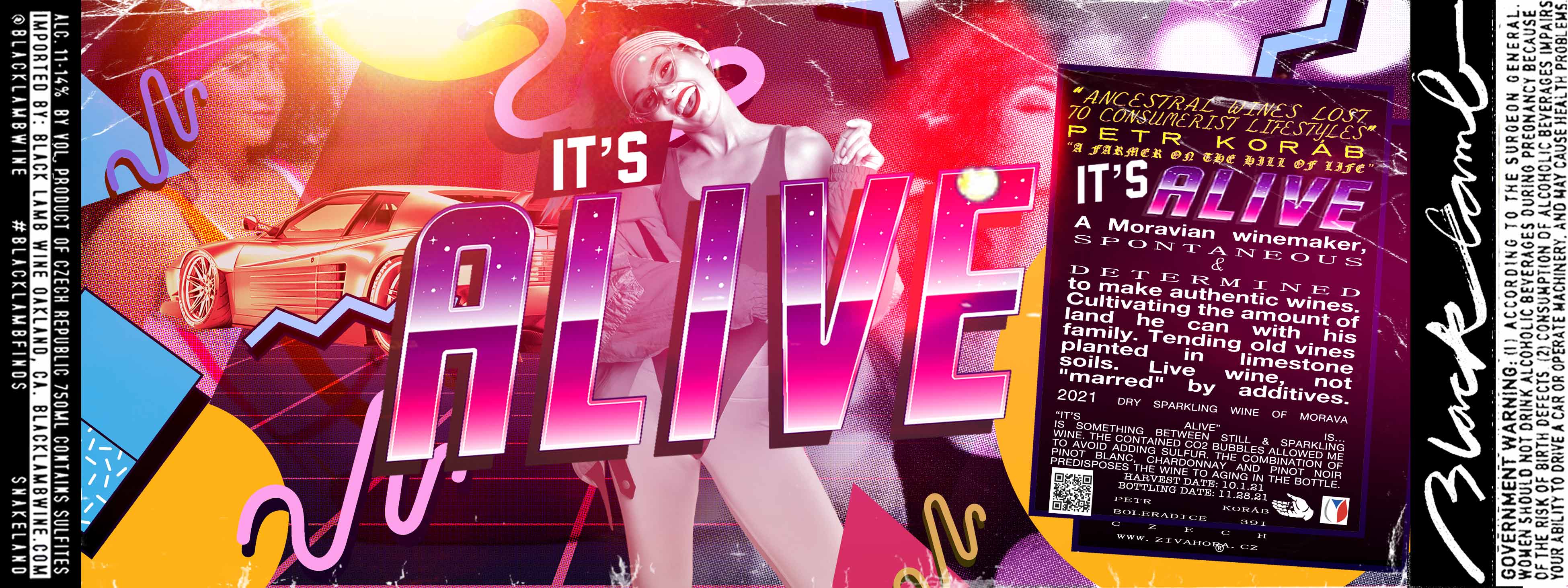
KORÁB
2021 IT’S ALIVE
sparkling orange pet-nat.
VINTAGE: 2021
LOCATION: VELKÉ BOLERADICE, MORAVIA, CZECH.
WINE MAKER: PETR KORAB.
GRAPE(S): Chardonnay, Pinot Blanc, Pinot Noir.
harvest date: 9.28.2021.
bottling date: 1.15.22.
LOCATION: VELKÉ BOLERADICE, MORAVIA, CZECH.
WINE MAKER: PETR KORAB.
GRAPE(S): Chardonnay, Pinot Blanc, Pinot Noir.
harvest date: 9.28.2021.
bottling date: 1.15.22.
“It’s Alive” is… is something between still and sparkling wine. The contained CO2 bubbles allowed me to avoid adding sulfur. The combination of Pinot Blanc, Chardonnay and Pinot Noir predisposes the wine to aging in the bottle."


KORÁB
2021 Orange on Leaves
STYLE: Petillant Naturel.
LOCATION: VELKÉ BOLERADICE, MORAVIA, CZECH.
WINE MAKER: PETR KORAB.
GRAPE(S): GRÜNER VELTLINER, WELSCHRIESLING, GEWÜRZTRAMINER.
harvest date: 10.1.2021
bottling date: 12.28.2021.
LOCATION: VELKÉ BOLERADICE, MORAVIA, CZECH.
WINE MAKER: PETR KORAB.
GRAPE(S): GRÜNER VELTLINER, WELSCHRIESLING, GEWÜRZTRAMINER.
harvest date: 10.1.2021
bottling date: 12.28.2021.
"Orange ‘on leaves’ is our iconic pet nat. Amber wine, when the grapes went through a long and cold maceration and subsequent fermentation on skins and dried vine leaves. Thanks to this, the wine is rich in aromas and full of flavor without disturbing tannins."


KORÁB
2021 Carbonic for All.
STYLE: DRY WHITE WINE.
LOCATION: VELKÉ BOLERADICE, MORAVIA, CZECH.
WINE MAKER: PETR KORAB.
GRAPE(S): Riesling, Hibernal.
harvest date: 10.28.21. bottling date: 3.1.22.
LOCATION: VELKÉ BOLERADICE, MORAVIA, CZECH.
WINE MAKER: PETR KORAB.
GRAPE(S): Riesling, Hibernal.
harvest date: 10.28.21. bottling date: 3.1.22.
“Carbonic For All” is a wine made by the true method of carbonic fermentation. Whole undamaged berries of Rhine Riesling 70% and Hibernal 30% were held in barrels without air access. After three months, there was a gentle pressing. The wine is full of yellow color, with a fruity aftertaste and the ambition to be an oily type of wine, suitable for further aging. The label was created by Dante Minutello.

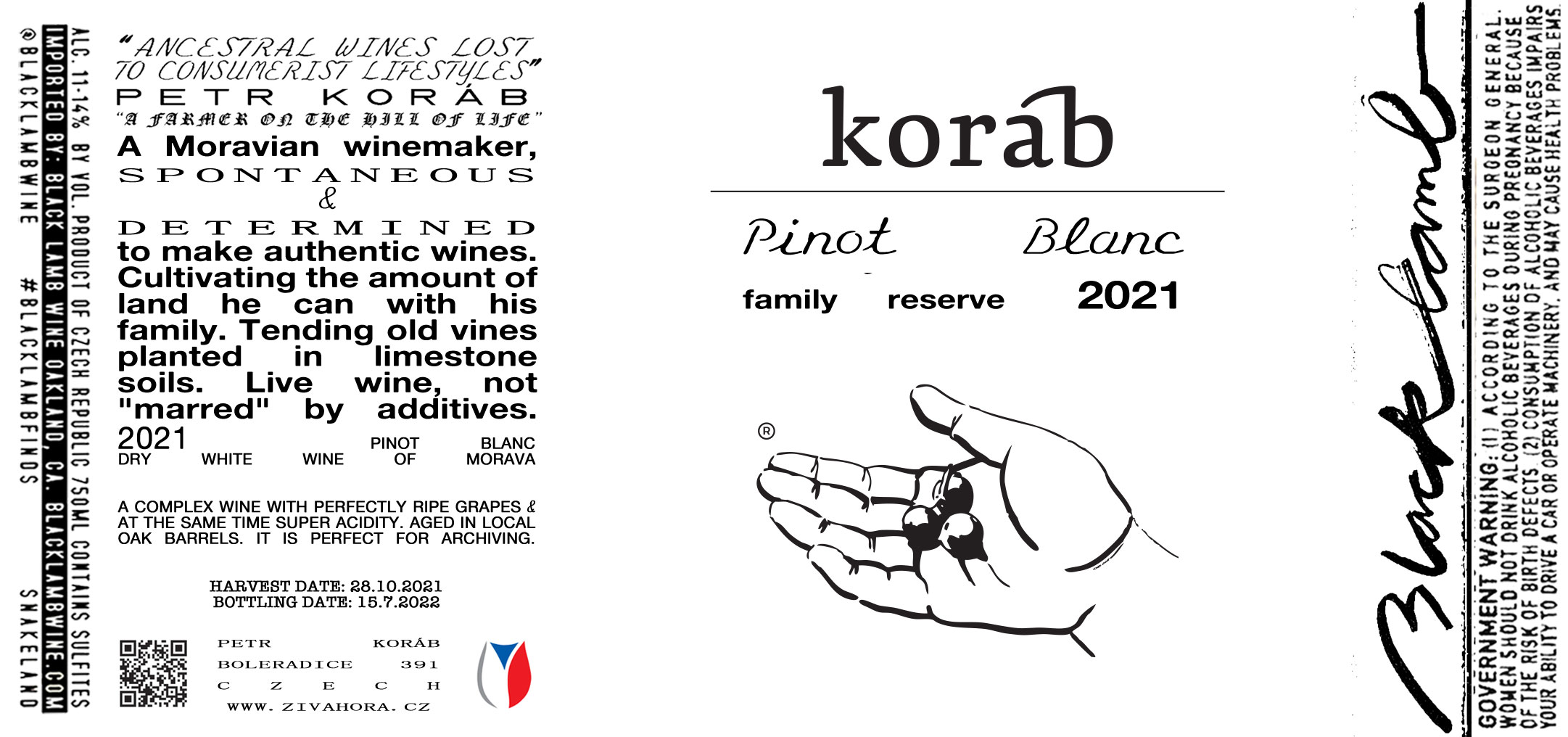
KORÁB
2021 Pinot Blanc
STYLE: DRY WHITE WINE.
LOCATION: VELKÉ BOLERADICE, MORAVIA, CZECH.
WINE MAKER: PETR KORAB.
GRAPE(S): Pinot Blanc.
harvest date: 28.10.2021.
bottling date: 15.7.2022.
LOCATION: VELKÉ BOLERADICE, MORAVIA, CZECH.
WINE MAKER: PETR KORAB.
GRAPE(S): Pinot Blanc.
harvest date: 28.10.2021.
bottling date: 15.7.2022.
A complex wine with perfectly ripe grapes and at the same time super acidity. Aged in local oak barrels. It is perfect for archiving.

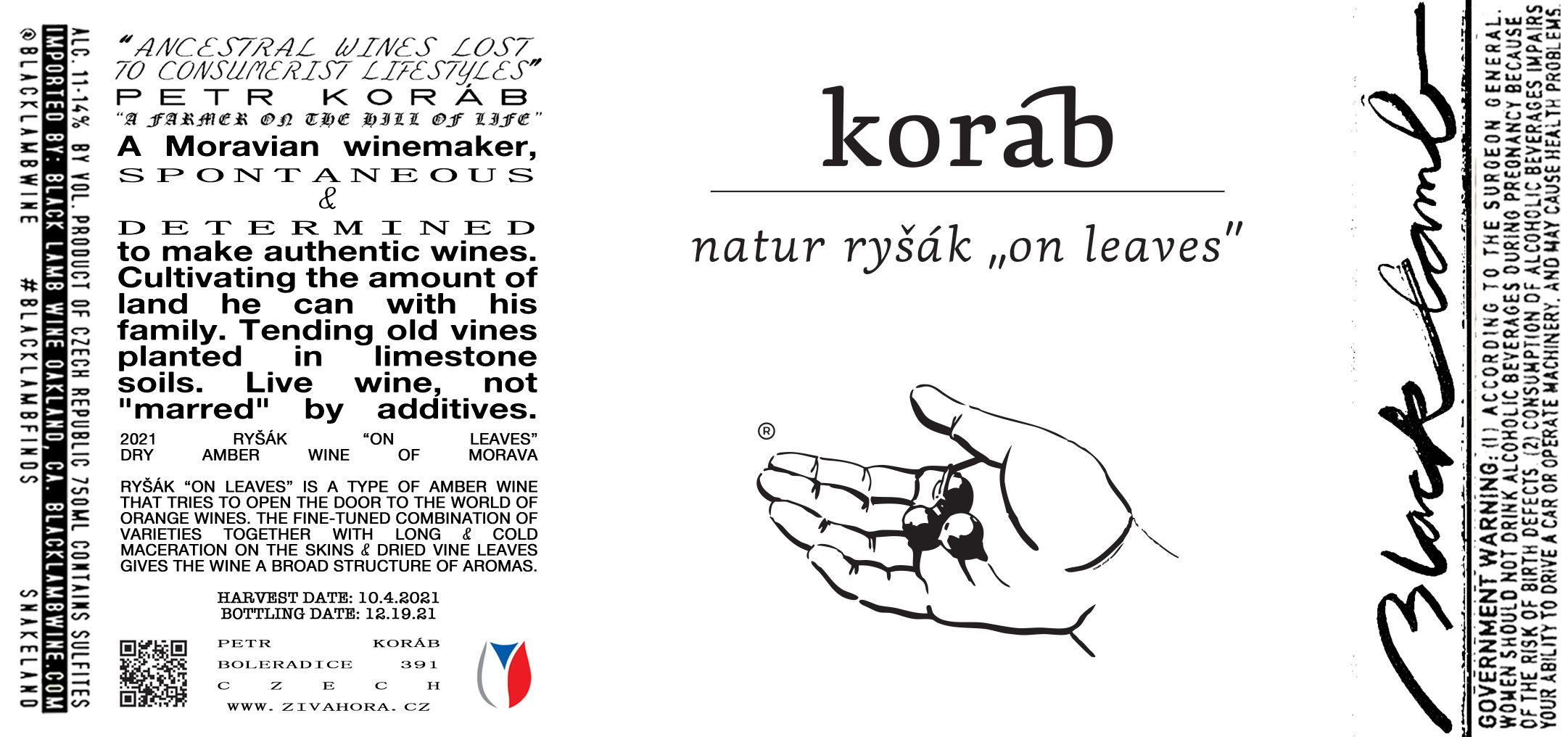
KORÁB
2021 Ryšák on Leaves.
STYLE: RYSAK (Ginger)
LOCATION: VELKÉ BOLERADICE, MORAVIA, CZECH.
WINE MAKER: PETR KORAB.
GRAPE(S): GRÜNER VELTLINER, WELSCHRIESLING, GEWÜRTZTRAMINER.
harvest date: 10.4.2021.
bottling date: 12.19.21.
LOCATION: VELKÉ BOLERADICE, MORAVIA, CZECH.
WINE MAKER: PETR KORAB.
GRAPE(S): GRÜNER VELTLINER, WELSCHRIESLING, GEWÜRTZTRAMINER.
harvest date: 10.4.2021.
bottling date: 12.19.21.
"Ryšák ‘on leaves’ is a type of amber wine that tries to open the door to the world of orange wines. The fine-tuned combination of varieties together with long and cold maceration on the skins and dried vine leaves gives the wine a broad structure of aromas.

OSIČKA

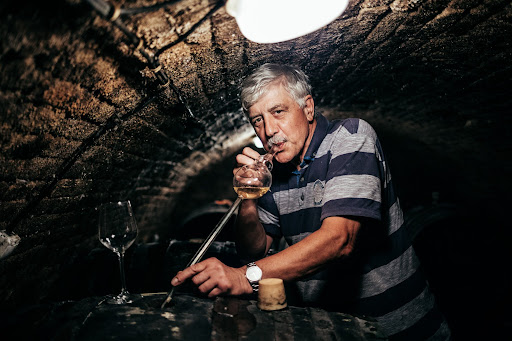






OWNER AND WINEMAKER: Jaroslav Osička, Lubos Osička
REGION: South Moravia, villages Velkopavlovická & Velké Bílovice.
TOTAL HECTARE: 3h.
ALTITUDE OF VINEYARD(S): 200-250m.
PREVAILING CLIMATE & LOCAL CLIMATIC: Continental.
SOIL COMPOSITION: Loess, loam, clay. High calcite content
CULTIVATED: Rhine Riesling, Müller Thurgau, Neuburg, Chardonnay, Pinot Gris, Tramín Červený (Gewurztraminer), Modrý Portugal (Blauer Portugieser), Pinot Noir, Andre.
FARMING: Organic.
WINE(S) PRODUCED: white wine, orange wine, red wine and Ryšák (Ginger, red white co-ferments).
TOTAL ANNUAL PRODUCTION: 15,000
OWNER AND WINEMAKER: Jaroslav Osička, Lubos Osička
REGION: South Moravia, villages Velkopavlovická & Velké Bílovice.
TOTAL HECTARE: 3h.
ALTITUDE OF VINEYARD(S): 200-250m.
PREVAILING CLIMATE & LOCAL CLIMATIC: Continental.
SOIL COMPOSITION: Loess, loam, clay. High calcite content
CULTIVATED: Rhine Riesling, Müller Thurgau, Neuburg, Chardonnay, Pinot Gris, Tramín Červený (Gewurztraminer), Modrý Portugal (Blauer Portugieser), Pinot Noir, Andre.
FARMING: Organic.
WINE(S) PRODUCED: white wine, orange wine, red wine and Ryšák (Ginger, red white co-ferments).
TOTAL ANNUAL PRODUCTION: 15,000
Jaroslav Osička, and his son Lubos make wine in Velké Bílovice near the borders of Austria and Slovakia. The land they farm is dominated by calcareous loess, clay and loam, however testing of their own has indicated that the soils are much more diverse. Jaroslav teaches organic viticulture at a local wine making school, they travel widely, taste a lot and organize a large local wine competition.
Jaroslav has always incorporated biodiversity in his farming philosophy firstly by avoiding synthetic and systemic treatments. Their vines were some of the first in their area to be farmed organically and have been since the late 80’s. The aspects of the vineyards are varied due the hilly terrain. The soils are mixed, calcareous rich, clay, loess and loam. Cover crops are encouraged, tilling is kept to a minimum, fertilizers are natural and mineral based, yields are low.
The wines are fermented spontaneously without temperature control. All wines undergo some amount of skin contact. Even the white wines will be fermented with a small amount of grape skins, Elevage ranges from 12 to 36 months. Sulfur is only added before bottling (5-20 ppm).
Jaroslav has always incorporated biodiversity in his farming philosophy firstly by avoiding synthetic and systemic treatments. Their vines were some of the first in their area to be farmed organically and have been since the late 80’s. The aspects of the vineyards are varied due the hilly terrain. The soils are mixed, calcareous rich, clay, loess and loam. Cover crops are encouraged, tilling is kept to a minimum, fertilizers are natural and mineral based, yields are low.
The wines are fermented spontaneously without temperature control. All wines undergo some amount of skin contact. Even the white wines will be fermented with a small amount of grape skins, Elevage ranges from 12 to 36 months. Sulfur is only added before bottling (5-20 ppm).


OSIČKA
2019 Chardonnay
STYLE: Dry White Wine
VINTAGE: 2019.
REGION, SUB-REGION & VILLAGE: Morava, Velkopavlovická & Velké Bílovice.
VINEYARD(S): Zadní hora, planted 1989.
ALTITUDE: 240 meters above sea level.
SOIL COMPOSITION: loess / clay & loam soil.
PREVAILING CLIMATE & LOCAL CLIMACTIC: Continental climate, hot days, cool nights.
FARMING OF VINEYARD: Organic.
COMPOSITION: Chardonnay.
HARVEST: September 2021.
MACERATION: 2 months skin extraction of whole berries (10% volume in each barrel), destemmed.
FERMENTATION/AGING: fermented and aged in oak of 500l and 1000l, 24 months on lees, no regular batonnage.
FINING & FILTRATION METHODS: none.
DATE OF BOTTLING: Winter, 2022.
BOTTLES PRODUCED: 1500.
VINTAGE: 2019.
REGION, SUB-REGION & VILLAGE: Morava, Velkopavlovická & Velké Bílovice.
VINEYARD(S): Zadní hora, planted 1989.
ALTITUDE: 240 meters above sea level.
SOIL COMPOSITION: loess / clay & loam soil.
PREVAILING CLIMATE & LOCAL CLIMACTIC: Continental climate, hot days, cool nights.
FARMING OF VINEYARD: Organic.
COMPOSITION: Chardonnay.
HARVEST: September 2021.
MACERATION: 2 months skin extraction of whole berries (10% volume in each barrel), destemmed.
FERMENTATION/AGING: fermented and aged in oak of 500l and 1000l, 24 months on lees, no regular batonnage.
FINING & FILTRATION METHODS: none.
DATE OF BOTTLING: Winter, 2022.
BOTTLES PRODUCED: 1500.
"The Osička production is mostly made from locally common grape varieties but it is Chardonnay that they are perhaps most famous for. Through restitution in the 90's after the dissolution of the Czechoslovak socialist state the Osička family acquired a special plot of grape vines planted in the 80's. It was unique in having been planted to 7 different Moravian clones. Chardonnay has been in Moravia for more than 2 centuries. It seems these well adapted genetics are what the Chardonnay owes its quality and complexity to.”

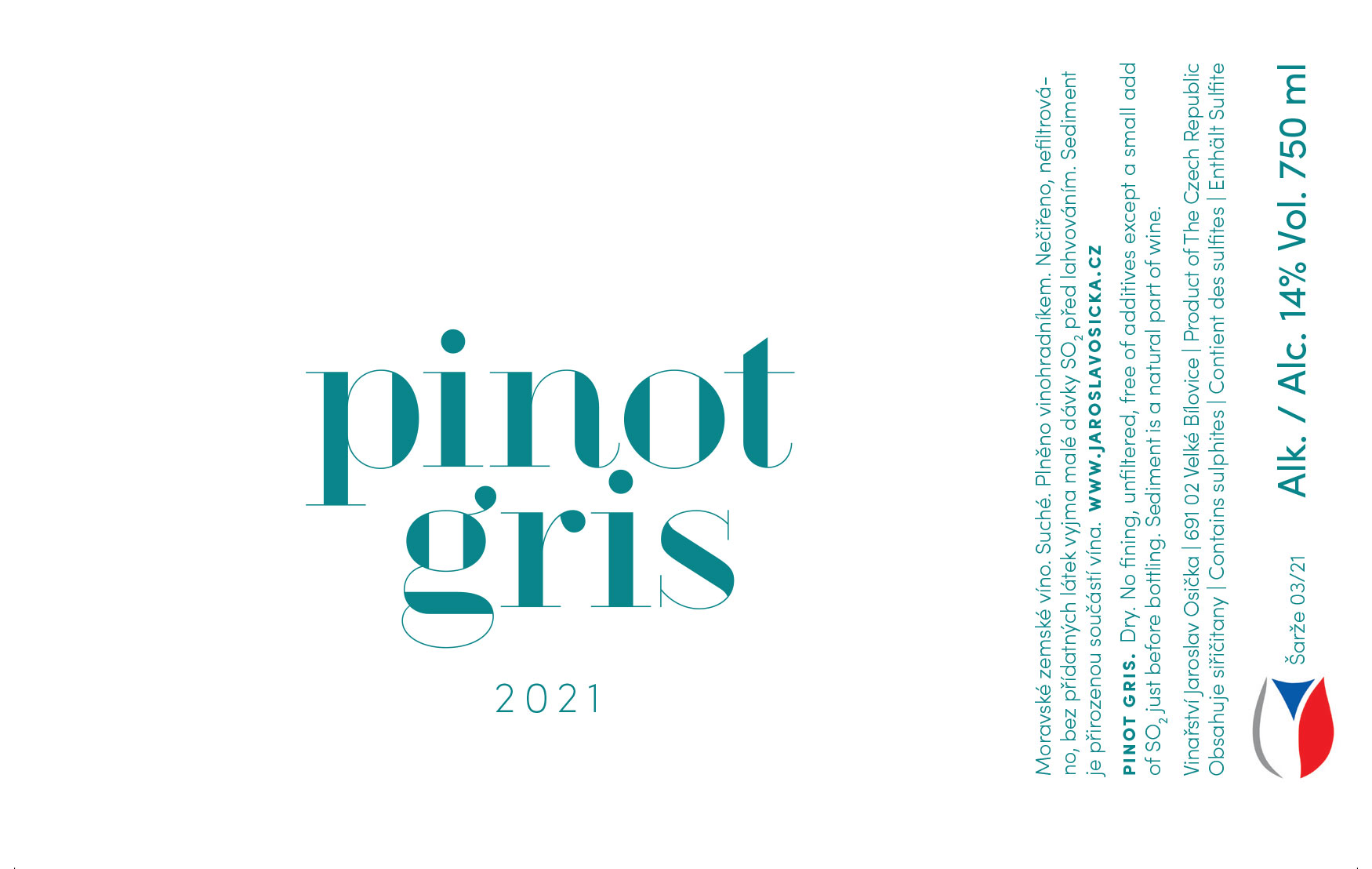
OSIČKA
2021 Pinot Gris
STYLE: Dry White Wine
VINTAGE: 2021.
REGION, SUB-REGION & VILLAGE: Morava, Velkopavlovická & Velké Bílovice.
VINEYARD(S): Velké Bílovice / Zadní hora
ALTITUDE: 240 meters above sea level.
SOIL COMPOSITION: loess / clay & loam soil.
PREVAILING CLIMATE & LOCAL CLIMACTIC: Continental climate, hot days, cool nights.
FARMING OF VINEYARD: Organic.
COMPOSITION: Pinot Gris.
HARVEST: September 2021.
MACERATION: direct press/ no maceration
FERMENTATION/AGING: spontaneous fermented, aged in oak of 1,000l, 18 months on lees, no regular batonnage.
FINING & FILTRATION METHODS: none.
DATE OF BOTTLING: August, 2023.
BOTTLES PRODUCED: 1200.
VINTAGE: 2021.
REGION, SUB-REGION & VILLAGE: Morava, Velkopavlovická & Velké Bílovice.
VINEYARD(S): Velké Bílovice / Zadní hora
ALTITUDE: 240 meters above sea level.
SOIL COMPOSITION: loess / clay & loam soil.
PREVAILING CLIMATE & LOCAL CLIMACTIC: Continental climate, hot days, cool nights.
FARMING OF VINEYARD: Organic.
COMPOSITION: Pinot Gris.
HARVEST: September 2021.
MACERATION: direct press/ no maceration
FERMENTATION/AGING: spontaneous fermented, aged in oak of 1,000l, 18 months on lees, no regular batonnage.
FINING & FILTRATION METHODS: none.
DATE OF BOTTLING: August, 2023.
BOTTLES PRODUCED: 1200.
While bone dry the Osicka Pinot Gris is a broad textural wine akin to fine Alsatian Pinot Gris. Opulent, waxy and long. With flavors of freshly baked cookies, warm spices and hearth. But the wine is not without its edges, like many of the great white wines of Moravia there is a nervy spine to it. Richness and ripeness accompanied by an invigorating acidity that lifts and enlivens. A lovely accompaniment to earth dishes of mushroom and root vegetables, poultry and pungent cheeses.


OSIČKA
2020 MODRÝ PORTUGAL
STYLE: Dry Red Wine.
VINTAGE: 2020.
REGION, SUB-REGION & VILLAGE: Morava, Velkopavlovická & Velké Bílovice.
VINEYARD(S): Přední hora, planted 1994
ALTITUDE: 230-240 meters above sea level.
SOIL COMPOSITION: loess / clay & loam soil.
PREVAILING CLIMATE & LOCAL CLIMACTIC: Continental climate, hot days, cool nights.
FARMING OF VINEYARD: Organic.
COMPOSITION: 100% Modrý Portugal (Blauer Portugieser).
HARVEST: September.
MACERATION: 8 days maceration of destemmed berries
mechanical press.
FERMENTATION/AGING: open oak vats/500 liter used oak, 7 months on fine lees
FINING & FILTRATION METHODS: none.
DATE OF BOTTLING: June 2021.
BOTTLES PRODUCED: 900.
VINTAGE: 2020.
REGION, SUB-REGION & VILLAGE: Morava, Velkopavlovická & Velké Bílovice.
VINEYARD(S): Přední hora, planted 1994
ALTITUDE: 230-240 meters above sea level.
SOIL COMPOSITION: loess / clay & loam soil.
PREVAILING CLIMATE & LOCAL CLIMACTIC: Continental climate, hot days, cool nights.
FARMING OF VINEYARD: Organic.
COMPOSITION: 100% Modrý Portugal (Blauer Portugieser).
HARVEST: September.
MACERATION: 8 days maceration of destemmed berries
mechanical press.
FERMENTATION/AGING: open oak vats/500 liter used oak, 7 months on fine lees
FINING & FILTRATION METHODS: none.
DATE OF BOTTLING: June 2021.
BOTTLES PRODUCED: 900.
Modrý Portugal or Portugieser is a red variety common to Hungary and surrounding with nothing to do with Portugal. Mostly it makes ordinary red wines of little excitement. However the issue may be that little is expected of it. Osička approaches the vines with the same care as all their vineyards and the results are reflected in this buoyant, cherried red. It could be compared to a Beaujolais, for its pronounced mineral edges and notes of dried roses. We enjoy it most just below cellar temperature with grilled mushrooms or a cheesy burger, things with smoke and umami.


OSIČKA
2022
P.A.N
STYLE: Dry Red Wine.
VINTAGE: 2022.
REGION, SUB-REGION & VILLAGE: Morava, Velkopavlovická & Velké Bílovice.
VINEYARD(S): Velké Bílovice / Přední hora
ALTITUDE: 230-240 meters above sea level.
SOIL COMPOSITION: loess / clay & loam soil.
PREVAILING CLIMATE & LOCAL CLIMACTIC: Continental climate, hot days, cool nights.
FARMING OF VINEYARD: Organic.
COMPOSITION: Pinot Noir + André + Blauer Portugieser.
HARVEST: September.
MACERATION: maceration for 12 days (destemmed grapes)
FERMENTATION/AGING: spontaneous fermentation + open oak vats/500 liter used oak, 7 months on fine lees
FINING & FILTRATION METHODS: none.
DATE OF BOTTLING: August 2023.
BOTTLES PRODUCED: 2,000.
VINTAGE: 2022.
REGION, SUB-REGION & VILLAGE: Morava, Velkopavlovická & Velké Bílovice.
VINEYARD(S): Velké Bílovice / Přední hora
ALTITUDE: 230-240 meters above sea level.
SOIL COMPOSITION: loess / clay & loam soil.
PREVAILING CLIMATE & LOCAL CLIMACTIC: Continental climate, hot days, cool nights.
FARMING OF VINEYARD: Organic.
COMPOSITION: Pinot Noir + André + Blauer Portugieser.
HARVEST: September.
MACERATION: maceration for 12 days (destemmed grapes)
FERMENTATION/AGING: spontaneous fermentation + open oak vats/500 liter used oak, 7 months on fine lees
FINING & FILTRATION METHODS: none.
DATE OF BOTTLING: August 2023.
BOTTLES PRODUCED: 2,000.

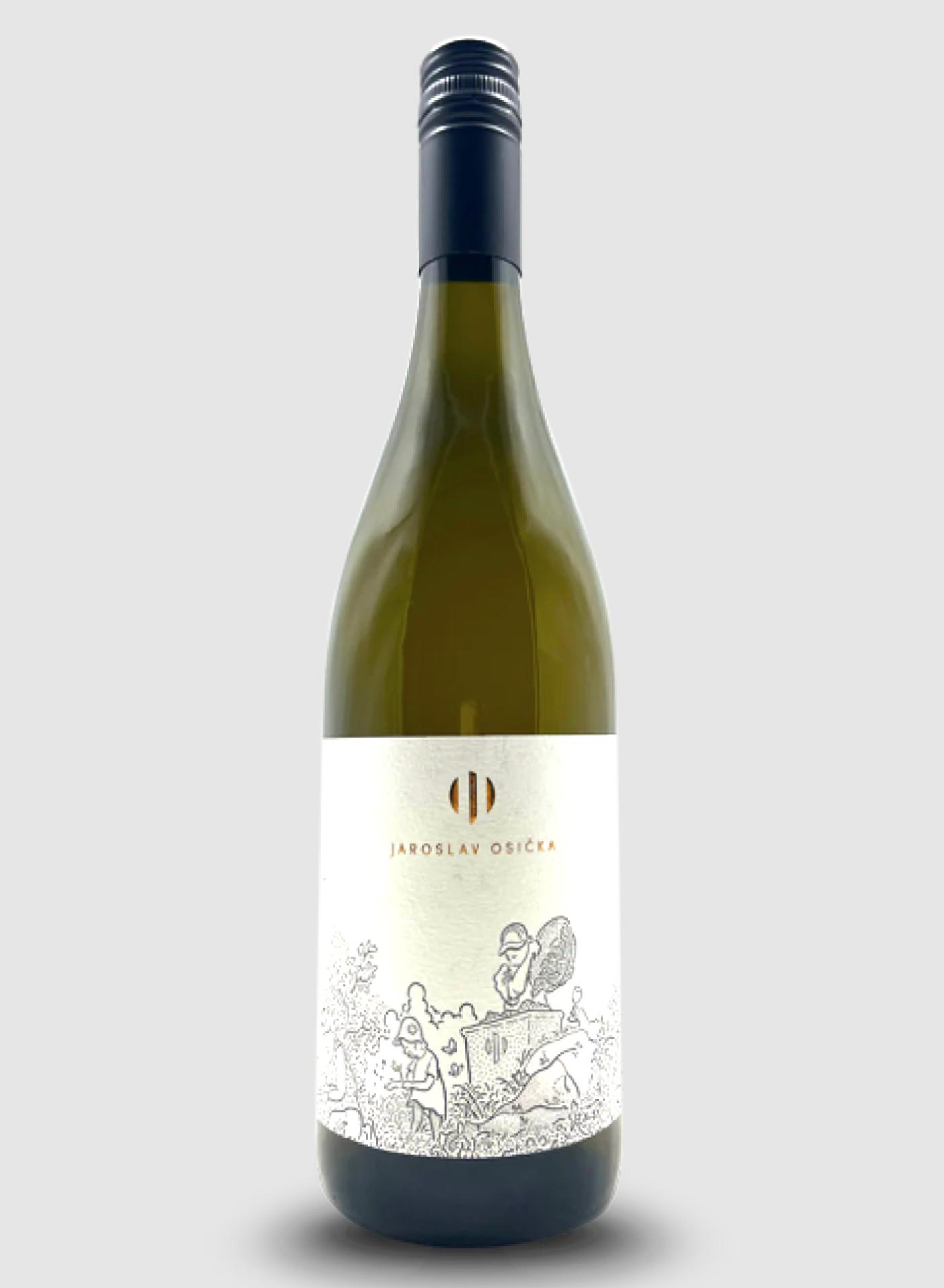
OSIČKA
2019 Moravian Rhapsody
STYLE: Dry White Wine
VINTAGE: 2021.
REGION, SUB-REGION & VILLAGE: Morava, Velkopavlovická & Velké Bílovice.
VINEYARD(S): Zadní hora, Přední hora.
ALTITUDE: 200-250 meters above sea level.
SOIL COMPOSITION: loess / clay & loam soil.
PREVAILING CLIMATE & LOCAL CLIMACTIC: Continental climate, hot days, cool nights.
FARMING OF VINEYARD: Organic.
COMPOSITION: Rhine Riesling, Pinot Gris, Müller Thurgau and Neuburg
HARVEST: September 2021.
MACERATION: destemmed and fermented with 10% of the grapes
FERMENTATION/AGING: aged in an combination of acacia and oak
FINING & FILTRATION METHODS: none.
DATE OF BOTTLING: April, 2022.
BOTTLES PRODUCED: 2000.
VINTAGE: 2021.
REGION, SUB-REGION & VILLAGE: Morava, Velkopavlovická & Velké Bílovice.
VINEYARD(S): Zadní hora, Přední hora.
ALTITUDE: 200-250 meters above sea level.
SOIL COMPOSITION: loess / clay & loam soil.
PREVAILING CLIMATE & LOCAL CLIMACTIC: Continental climate, hot days, cool nights.
FARMING OF VINEYARD: Organic.
COMPOSITION: Rhine Riesling, Pinot Gris, Müller Thurgau and Neuburg
HARVEST: September 2021.
MACERATION: destemmed and fermented with 10% of the grapes
FERMENTATION/AGING: aged in an combination of acacia and oak
FINING & FILTRATION METHODS: none.
DATE OF BOTTLING: April, 2022.
BOTTLES PRODUCED: 2000.

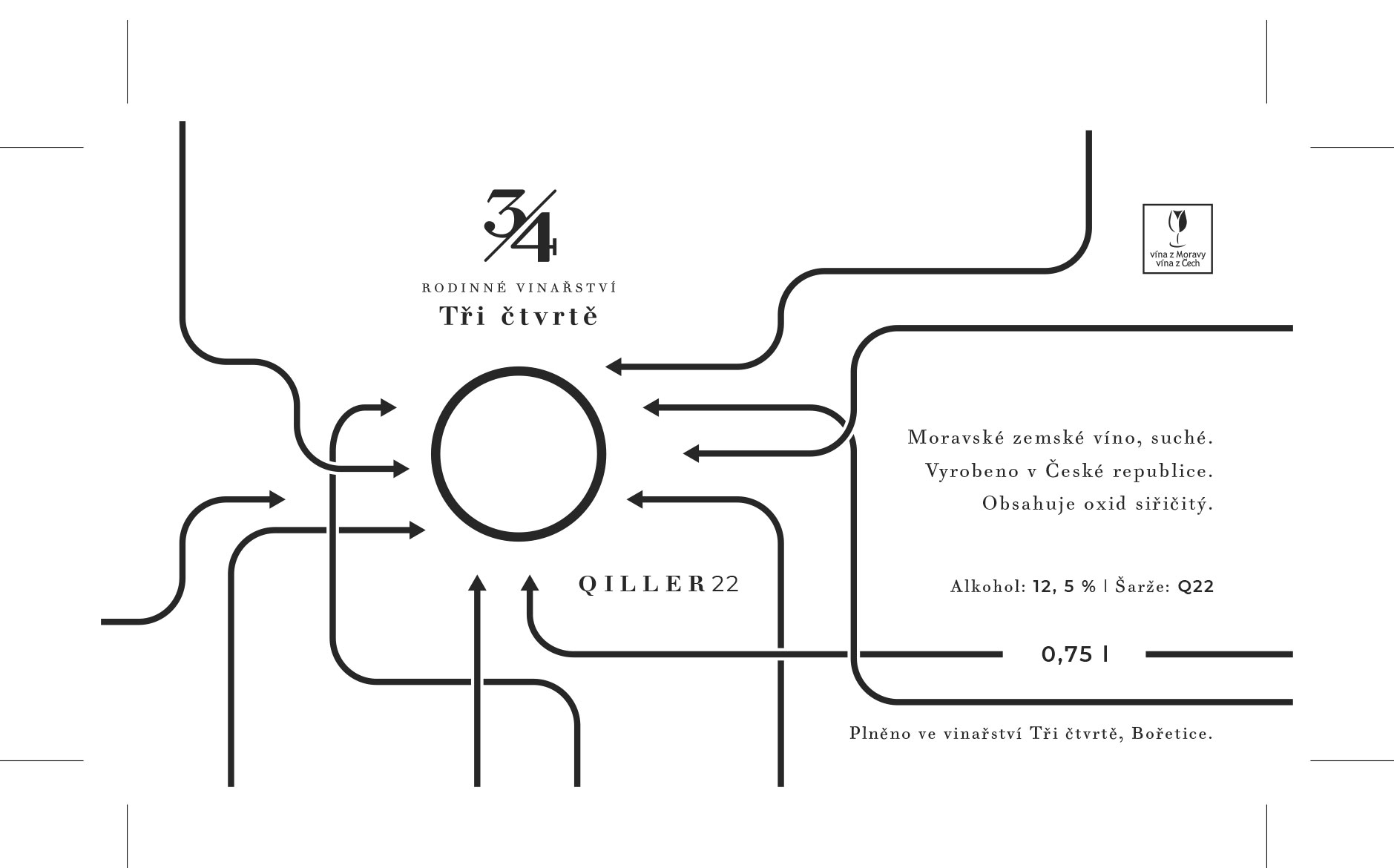
TŘI ČTVRTĚ
2022 QILLER
STYLE: DRY RYŠÁK
WINE MAKER: Zuzana Bukovská
VINTAGE: 2022
LOCATION: South Moravia, Velkopavlovická oblast (region), village Bořetice.
VINEYARD: Čtvrtě, 0,5 ha.
ASPECT: Varied.
ALTITUDE: approximately 280 m above sea level.
PLANTED: 1972.
SOIL COMPOSITION: loess, black soil.
PREVAILING CLIMATE & LOCAL CLIMACTIC: continental, SW direction.
FARMING: organic, but not certified.
GRAPE COMPOSITION: Irsai Oliver and St Laurent + others, hard to say exactly.
HARVEST: 24.9.2022.
MACERATION: macerated for 15 hours.
FERMENTATION: natural fermentation in stainless steel.
PRESS: pneumatic press.
AGING: Just until the end of fermentation.
sO2: 10ppm.
FINING & FILTRATION: None.
BOTTLED: 26.11.2022.
BOTTLES PRODUCED: 1800.
WINE MAKER: Zuzana Bukovská
VINTAGE: 2022
LOCATION: South Moravia, Velkopavlovická oblast (region), village Bořetice.
VINEYARD: Čtvrtě, 0,5 ha.
ASPECT: Varied.
ALTITUDE: approximately 280 m above sea level.
PLANTED: 1972.
SOIL COMPOSITION: loess, black soil.
PREVAILING CLIMATE & LOCAL CLIMACTIC: continental, SW direction.
FARMING: organic, but not certified.
GRAPE COMPOSITION: Irsai Oliver and St Laurent + others, hard to say exactly.
HARVEST: 24.9.2022.
MACERATION: macerated for 15 hours.
FERMENTATION: natural fermentation in stainless steel.
PRESS: pneumatic press.
AGING: Just until the end of fermentation.
sO2: 10ppm.
FINING & FILTRATION: None.
BOTTLED: 26.11.2022.
BOTTLES PRODUCED: 1800.
An artist friend introduced me to Zuzana at a wine festival a few years ago. Instantly I was entranced by her Qiller, alas it was spoken for. Fast forward a few years and she has a little left, and at just the right moment! This is a wine that can and should be consumed frequently. It has it all. Freshness, character, minerality, a gentle savory note and pithy bite. It is a picnic wine, a river wine, a patio wine, a throw a party wine. Drink it with fruits or mushrooms, with cold chicken or spicy BBQ. It is an archetypal example of Ryšák.
From Zuzana…Qiller is cuveé of varieties planted in 1972. It's a mix of approximately 15 varieties - mainly Irsai Oliver and St. Laurent. Everything was harvested and processed together. Grapes were macerated for 15 hours and then fermented in a stainless steel tank. Wine was not filtered and not fined, just let gravity make the magic. Wine was about a month on fine yeasts, 10ppm sulfur added before bottling. Idea was to create summer picnic wine (thats why its under crown cap). This is how I see my vineyard Čtvrtě (that’s the name) which was planted in 70s. The name Qiller - the Q stands for Quarter (Čtvrtě in Czech) and (S)ILLER is German word for mix of varieties.
From Zuzana…Qiller is cuveé of varieties planted in 1972. It's a mix of approximately 15 varieties - mainly Irsai Oliver and St. Laurent. Everything was harvested and processed together. Grapes were macerated for 15 hours and then fermented in a stainless steel tank. Wine was not filtered and not fined, just let gravity make the magic. Wine was about a month on fine yeasts, 10ppm sulfur added before bottling. Idea was to create summer picnic wine (thats why its under crown cap). This is how I see my vineyard Čtvrtě (that’s the name) which was planted in 70s. The name Qiller - the Q stands for Quarter (Čtvrtě in Czech) and (S)ILLER is German word for mix of varieties.


AMIRAN
2018 Otskhanuri Sapere
STYLE: DRY RED WINE
VINTAGE: 2018
GRAPE COMPOSITION: 100% Otskhanuri Sapere, older vines, pergola trained
CLIMATE: Sub Tropical
SOILS: Rich brown soil, clay, carbonic sub soil
MACERATION & AGING: Spontaneously fermented with 100% skin contact 2 weeks and aged in qvevri for 12 additional months
ALCOHOL: 12%
RESIDUAL SUGAR: 1 g/l
ACIDITY: 6 g/l.
VINTAGE: 2018
GRAPE COMPOSITION: 100% Otskhanuri Sapere, older vines, pergola trained
CLIMATE: Sub Tropical
SOILS: Rich brown soil, clay, carbonic sub soil
MACERATION & AGING: Spontaneously fermented with 100% skin contact 2 weeks and aged in qvevri for 12 additional months
ALCOHOL: 12%
RESIDUAL SUGAR: 1 g/l
ACIDITY: 6 g/l.
“the heart of our Marani "
Deep purple in color, perfumed, floral, animal and earthy. Brightly flavored, juicy and dark, exotic, complex, textured, high acid and dry. Without equal.

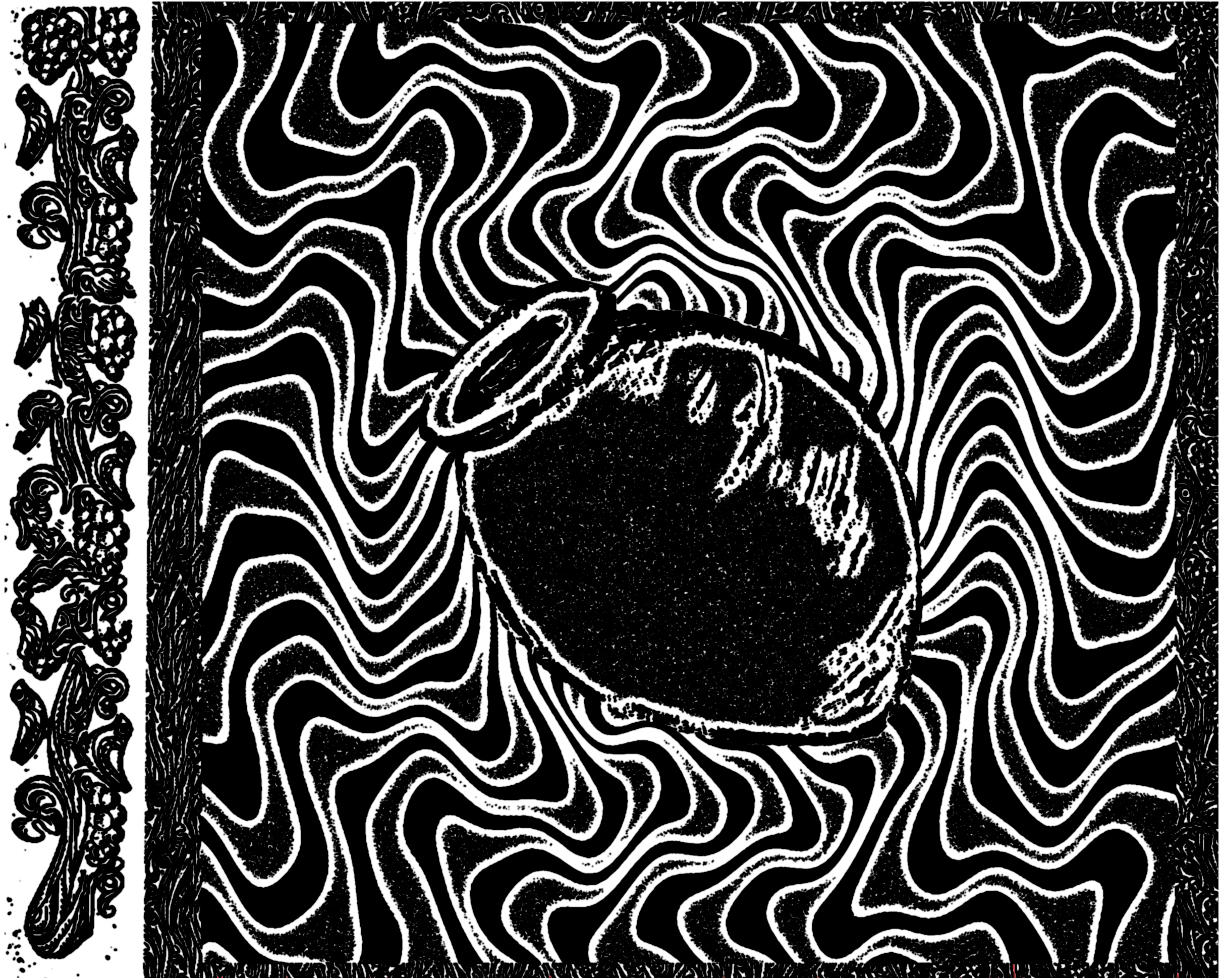
AMIRAN
2019 Krakhuna
STYLE: DRY AMBER WINE
VINTAGE: 2019
GRAPE COMPOSITION: 100% Krakhuna
CLIMATE: SubTropical
SOILS: Rich brown soil, clay, carbonic sub soil
MACERATION & AGING: Spontaneously fermented with
50% destemed skins. Macerated for 3 months, 6 months additional time in qvevri.
ALCOHOL: 13%
RESIDUAL SUGAR: 2 g/l
ACIDITY: 5 g/l.
VINTAGE: 2019
GRAPE COMPOSITION: 100% Krakhuna
CLIMATE: SubTropical
SOILS: Rich brown soil, clay, carbonic sub soil
MACERATION & AGING: Spontaneously fermented with
50% destemed skins. Macerated for 3 months, 6 months additional time in qvevri.
ALCOHOL: 13%
RESIDUAL SUGAR: 2 g/l
ACIDITY: 5 g/l.
“favorite grape"
A heady textured amber wine with great freshness and carefully moderated structure. Burnt pineapple, beeswax, coconut, unusual flavors for any wine. This is the character of Krakhuna interacting with the microorganisms in the qvevri to give something special, unique to Amiran's cellar.


AMIRAN
2020 Chuck & Gabi
STYLE: DRY WINE
VINTAGE: 2020
GRAPE COMPOSITION: 70% Tsitska (white), 30% Otskhanuri Sapere (red)
CLIMATE: SubTropical
SOILS: Rich brown soil, clay, carbonic sub soil
MACERATION & AGING: Tsitska was spontaneously fermented in qvevri no skin contact and aged in qvevri for 6 months. Otskhanuri Sapere was macerated for 2 weeks during fermentation then left in qvevri until blending in May following the harvest.
ALCOHOL: 11.5%
RESIDUAL SUGAR: 1.55 g/l
ACIDITY: 6.5 g/l.
VINTAGE: 2020
GRAPE COMPOSITION: 70% Tsitska (white), 30% Otskhanuri Sapere (red)
CLIMATE: SubTropical
SOILS: Rich brown soil, clay, carbonic sub soil
MACERATION & AGING: Tsitska was spontaneously fermented in qvevri no skin contact and aged in qvevri for 6 months. Otskhanuri Sapere was macerated for 2 weeks during fermentation then left in qvevri until blending in May following the harvest.
ALCOHOL: 11.5%
RESIDUAL SUGAR: 1.55 g/l
ACIDITY: 6.5 g/l.
Not red nor rose; can be drank chilled or not. Tsitska brings acidity and minerality, Otskhanuri brings character and a bit of tannin and displays an aspect of aroma not typically encountered with Otskhanuri. Light, fruity but complex and resonant. A blend conceived of by Amiran and Stetson, named for Stetson's daughter Charlie (Chuck) and Amiran's grandson Gabriel (Gabi).

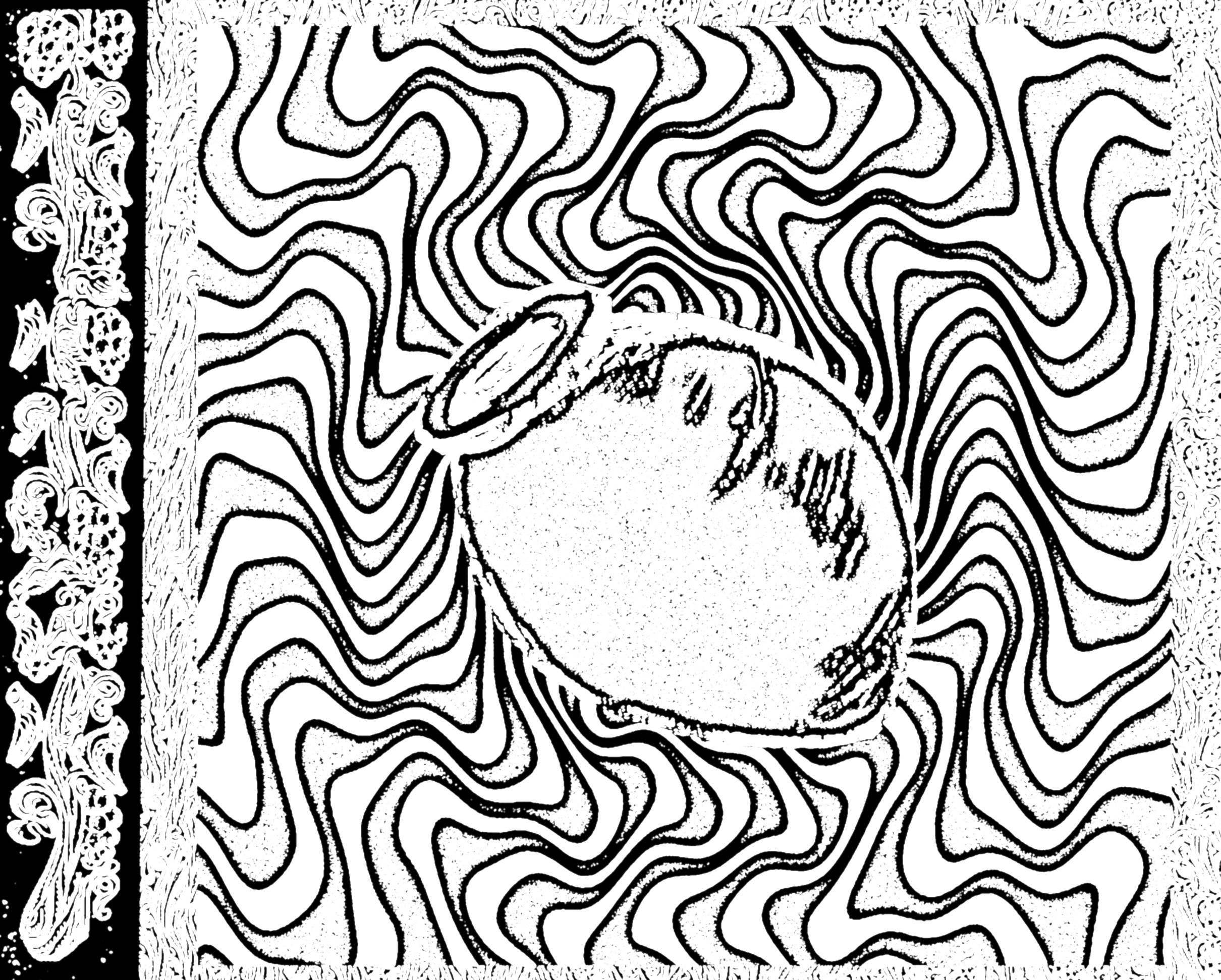
AMIRAN
2019 Tsitska Tsolikouri Krakhuna
STYLE: DRY AMBER WINE
VINTAGE: 2019
GRAPE COMPOSITION: ⅓ each Tsitska, Tsolikouri, Krakhuna
CLIMATE: SubTropical
SOILS: Rich brown soil, clay, carbonic sub soil
MACERATION & AGING: grapes were co fermented spontaneously with
100% skin contact for fermentation, then 3 months with 50% of the skins for 3 months, then without skins for 6 additional months. All in qvevri.
ALCOHOL: 12%
RESIDUAL SUGAR: 1 g/l.
ACIDITY: 5.5 g/l.
VINTAGE: 2019
GRAPE COMPOSITION: ⅓ each Tsitska, Tsolikouri, Krakhuna
CLIMATE: SubTropical
SOILS: Rich brown soil, clay, carbonic sub soil
MACERATION & AGING: grapes were co fermented spontaneously with
100% skin contact for fermentation, then 3 months with 50% of the skins for 3 months, then without skins for 6 additional months. All in qvevri.
ALCOHOL: 12%
RESIDUAL SUGAR: 1 g/l.
ACIDITY: 5.5 g/l.
"nectar of the sun"
An elegant example of skin contact wine from the West of Georgia. Juicy, discreetly tannin, lovely aromas, citric, floral, spiced. Very easy drinking, while simultaneously contemplative.

AMIRAN'S WINE CELLAR
Amiran Vepkhvadze’s Wine Cellar is located in the Imiretian village of Zestafoni in West Georgia. An attorney by trade, Amiran Vepkhvadze inherited a few hectares of Otskhanuri Sapere, a rare, indigenous varietal found only in Western Georgia. It was planted by his father and the vines are pergola trained in order to counter the humid conditions characteristic of the region. For years he sold the grapes to a large local winery. What they would pay gradually decreased until Amiran decided to start making his own wine. It remains one of the largest contiguous plots of the grape variety.
His vines are planted in fields near his home as well as in the nearby villages of Kinoti and Kldeeti: he grows white grapes Tsitska, Tsolikouri, Krakhuna, and the black grape Otskhanuri Sapere. Fermentation and aging of organically-farmed grapes occur in beeswax-lined kvevri. The wines receive no filtration or chemical addition.

WINE PRODUCERS IN THE POLITICALLY DEMARCATED ZONE OF...
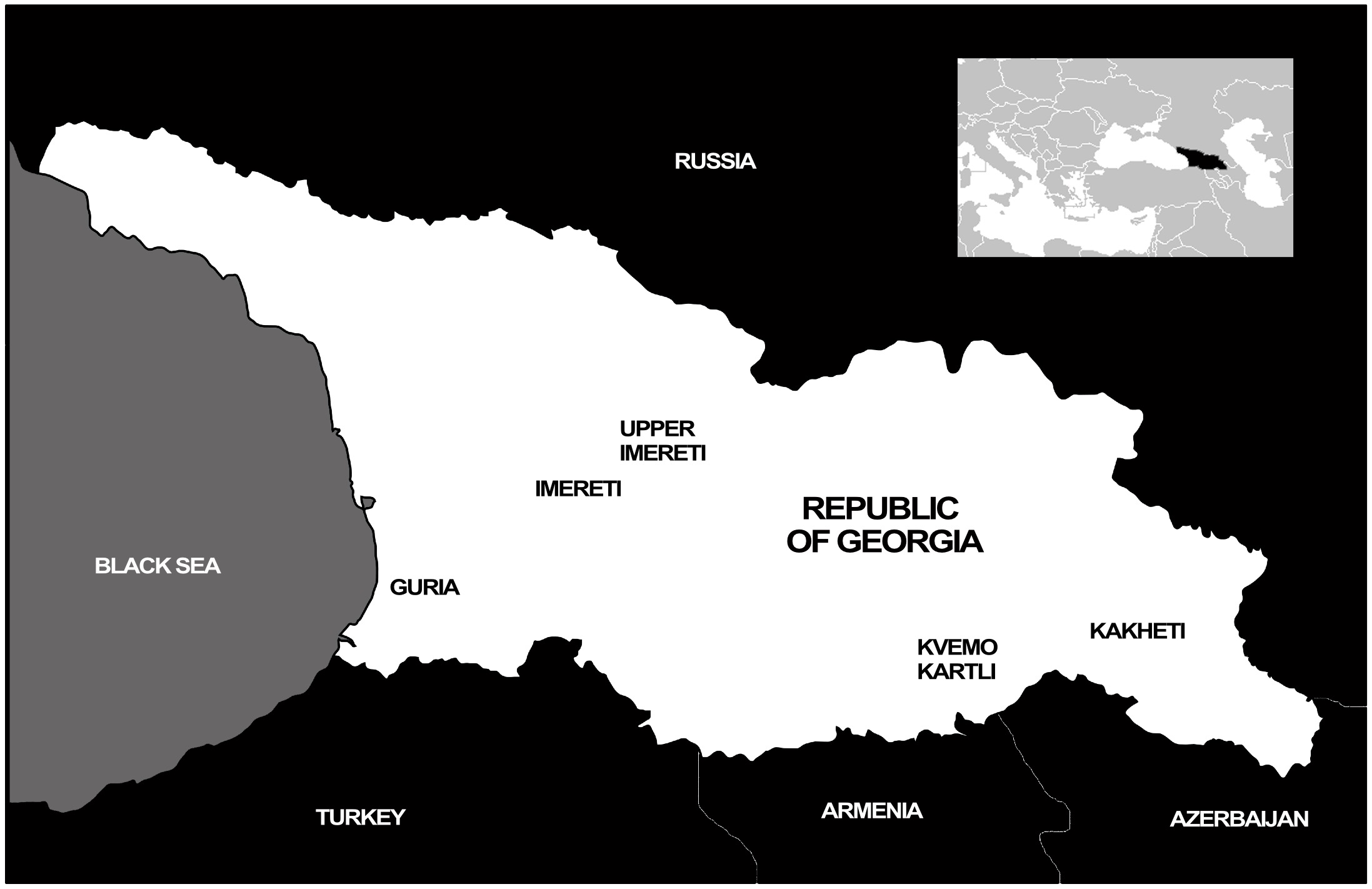
PRODUCERS
AMIRAN VEPKHADZE
IMERETI
GAOIZ SOPROMADZE
IMERETI
PAPARI VALLEY
SOUTH IMERETI
GIA JAMBERIDZE
GURIAGOTSA FAMILY WINES
KVEMO KARTLIJAKELI
KAKHETI
ORI MARANI
KAKHETI
CHITO’S GVINO
KAKHETICOLLABS
SHAVI K’RAVI



CHITO’S GVINO
2020 Rkatsiteli
LOCATION: VACHNADZIANI, MUKUZANI, KAKHETI, GEORGIA.
WINEMAKER: NINO CHITOSHVILI. GRAPE(S): RKATSITELI.
SOILS: BROWN FOREST SOIL, CALCAROUS CLAY.
VINIFICATION: MACERTION OF GRAPES, SKINS AND STEMS IN QVEVRI FOR 7 MONTHS.
NO FINING, NO FILTRATION, NO So2.
BOTTLED SEPTEMBER OF 2021.
800 BOTTLES.
WINEMAKER: NINO CHITOSHVILI. GRAPE(S): RKATSITELI.
SOILS: BROWN FOREST SOIL, CALCAROUS CLAY.
VINIFICATION: MACERTION OF GRAPES, SKINS AND STEMS IN QVEVRI FOR 7 MONTHS.
NO FINING, NO FILTRATION, NO So2.
BOTTLED SEPTEMBER OF 2021.
800 BOTTLES.
Nino's Rkatsiteli was harvested at the end of September. The wine was vinified entirely in kvevri. Old school Kahketian white. Perfumed, structured and enduring. dried fruit, tobacco, cardamon, rich in tannin but at a pleasant 12.5% abv.


CHITO’S GVINO
2020 Rkatsiteli-Mtsvane
LOCATION: VACHNADZIANI, MUKUZANI, KAKHETI, GEORGIA.
WINEMAKER: NINO CHITOSHVILI. GRAPE(S): RKATSITELI-MTSVANE.
SOILS: BROWN FOREST SOIL, CALCAROUS CLAY.
VINIFICATION: WILD COFERMENTATION OF GRAPES, SKINS AND STEMS IN QVEVRI FOR 7 MONTHS.
NO FINING, NO FILTRATION, NO So2.
BOTTLED SEPTEMBER OF 2021 / 800 BOTTLES.
WINEMAKER: NINO CHITOSHVILI. GRAPE(S): RKATSITELI-MTSVANE.
SOILS: BROWN FOREST SOIL, CALCAROUS CLAY.
VINIFICATION: WILD COFERMENTATION OF GRAPES, SKINS AND STEMS IN QVEVRI FOR 7 MONTHS.
NO FINING, NO FILTRATION, NO So2.
BOTTLED SEPTEMBER OF 2021 / 800 BOTTLES.
Nino's blend of Rkatsiteli (50%) and Kakhuri Mtsvane (50%) is from a one hectare co-planted vineyard named Sachaleebi. Harvest was at the end of September. The wine was vinified entirely in kvevri. Old school Kahketian white. Perfumed, structured and enduring. The 2021 has an additional element of character that is likely related to the yeast, some flor like affect that bring further depth to this already complexive wine.

CHITO’S GHVINO
OWNER AND WINEMAKER: Nino Chitoshvili.
REGION: Kakheti, Georgia.
REGION: Kakheti, Georgia.
Professional pianist, turned wine tour guide (2010), turned winemaker, Nino Chitoshvili of Chito’s Gvino released her inaugural vintage in 2017. Her Marani (cellar) is located in the village of Martkopi 30 minutes outside of Tbilisi. She is building her production parcel by parcel, and renting land where she can farm organically. Outside of a little help from locals she does all of the vineyard work herself. In 2021, Chito produced about 3000 bottles. Most of the fruit came from vineyards she farms in Kakheti. The wines indicate no newcomer; they are resonant, dynamic and intentional. Impeccable but old fashioned. Our cooperation is as much an investment in our own drinking as a commercial exercise, and we are happy to help drain a few bottles of her wine all the more so if it helps her grow!

GOTSA

2021 MTSVIVANI BUSHT'EBI
2021 CHINURI BUSHT'EBI
2021 TAVKVERI BUSHT'EBI
2020 TSITSKA / TSOLIKOURI
2020 CHINURI
2020 TAVKVERI
2020 KISI
2020 MTSVANE
2020 KHIKHVI
2021 CHKHAVERI “VARDI”
2020 SAPERAVI BUDESHURI
2017 FLOR SAPERAVI RESERVE
2018 SAPERAVI RESERVE
FIRST BIRTHDAY
SECOND FRUIT SPARKLING CIDER
INTERVIEW
OWNER AND WINEMAKER: Beka Gotsadze
REGION: Kvemo Kartli, Asureti Valley
TOTAL HECTARE: 4 ha within the Algeti Nature preserve
ALTITUDE OF VINEYARD(S): 550 meters
PREVAILING CLIMATE & LOCAL CLIMATIC: Continental climate - hot days, cold nights
SOIL COMPOSITION: basalt, mixed volcanic, clay, alluvial
VINES PLANTED: 2012
CULTIVATED: 14 native Georgian varieties
FARMING: Demeter certified Biodynamic
PRODUCED: white, amber, rose, and red wines, ancestrale sparkling white, amber and red wines, fortified wines, flor affected wines, cider and beer... Highly experimental producer.
FIRST COMMERCIAL VINTAGE: 2015
TOTAL ANNUAL PRODUCTION: 20,000 bottles
LABEL ART: Temo Gotsadze
REGION: Kvemo Kartli, Asureti Valley
TOTAL HECTARE: 4 ha within the Algeti Nature preserve
ALTITUDE OF VINEYARD(S): 550 meters
PREVAILING CLIMATE & LOCAL CLIMATIC: Continental climate - hot days, cold nights
SOIL COMPOSITION: basalt, mixed volcanic, clay, alluvial
VINES PLANTED: 2012
CULTIVATED: 14 native Georgian varieties
FARMING: Demeter certified Biodynamic
PRODUCED: white, amber, rose, and red wines, ancestrale sparkling white, amber and red wines, fortified wines, flor affected wines, cider and beer... Highly experimental producer.
FIRST COMMERCIAL VINTAGE: 2015
TOTAL ANNUAL PRODUCTION: 20,000 bottles
LABEL ART: Temo Gotsadze
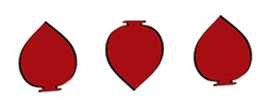
ALL THE LITTLE ANIMALS MUST LIVE THEIR LIVES! NO FILTRATION, NO STABILIZATION. PATIENCE = STABILITY LIVE, KEEP COOL.
ALL THE LITTLE ANIMALS MUST LIVE THEIR LIVES! NO FILTRATION, NO STABILIZATION. PATIENCE = STABILITY LIVE, KEEP COOL.
“Our family vineyard, in the Asureti Valley of Kvemo Kartli, is fantastic! I planted it in 2012 with 14 different Georgian grape varieties. There are no other vineyards for kilometers. We are Demeter certified and have only farmed our vineyards according to biodynamic principles and our own “forest philosophy”. We take from the vineyards only juice, even skins and stems return to the vineyard to be composted. Our marani/cellar is in the Kiketi Mountains. The cool conditions are perfect for wine making! Wild fermentation happens in traditional Qvevri: large buried earthenware amphora. We let the microorganisms do their jobs and they give us REAL wine.”
- Winemaker and Architect, Beka Gotsadze

Black Lamb: Before you were a winemaker you were an architect. What led you to this career?
Beka: It happened when I was 13-14 years old, my Uncle was an Architect and I would visit him where he worked, all the equipment he was using for drawings inspired me to become an architect, also my father is an artist so I grew up around drawings and paintings. My labels are sections of my fathers paintings.
Black Lamb: What inspired you to make wine?
Beka: As a student my friends and I drank only wine, we liked to drink together at each other's homes but we had to drink bad wine because this was the communist period and there was no market for artisan wine, we could only buy low quality wines. We could only find good wine when we traveled to countryside villages. Eventually we decided to make our own wine. It was around 1982 or 83’. The first wine that inspired me was that first wine we made in my basement, of course it was not great but for me it was very important. We did it! We had our own wine!
Black Lamb: When and why did you decide to make wine commercially?
Beka: 2010 was my first commercial vintage: I made Kakhuri Mtsvane and Saperavi. My Dutch friend Daniel Hooft owned a vineyard in Georgia. We had some other commercial projects and we decided to make a wine together for him to sell in Holland. He gave me grapes and I made the wine.
Black Lamb: What makes your location special? What are the biggest geographical and climatic influences on your wines?
Beka: Dry place with medium temperatures, maybe it is a semi-desert, but with a lot of different nature biologically rich and clean soil. There is nobody around me. No neighbors, industrial activities or even agriculture.
Black Lamb: Before you determined where you would plant your vineyards you planted corn and barley to evaluate different locations. What information did you gain and why did you pick the location you did?
Beka: I have a summer house in the mountains in Kiketi where I made my first wines and where my cellar is located. From the balcony of this house is a very nice view, down of the Algeti National Park, you can also see the village of Asureti where my vineyard is. It is only 10 km from my place. Historically the Asureti area was well known as a good place for wine making so I decided to go there to meet the people and study them. Are they good workers? Are they good people? Planting a vineyard is a big investment and because of that you must always know: 1. Is the soil good to make block buster wines 2. Climate 3. People with whom you must do a lot of work. 4. You must test wines made by locals, etc. My objective was to study all these things. I was planting corn and barley in territories around the village. The harvest was not for sale, I gave it to the people who were helping me and after 3 years working together I decided where the best place for my vineyard was. I got a lot of friends there and in 2012 we began planting.
Black Lamb: When did you apply for organic certification?
Beka: I began planting my vineyard in 2012. From the beginning I cultivated the vineyards according to Organic and Biodynamic certification. Organic only came first because it is a requirement of Biodynamic certification.
Black Lamb: What biodynamic preparations come from your land?
Beka: I'm buying all biodynamic preparations in France, because I want to have the best quality. Winemaking is a very difficult business, it's a lot of work. I don't have time to produce many of the peperations myself, and do not trust my ability to produce them correctly. When I better understand my place, the soil, the climate, then slowly I hope to transfer part of my work to my children, then maybe I will begin to produce my own treatments. At this moment I'm producing only compost next to the vineyards. My philosophy is to give everything we take from the soil back to it. We have a special machine which shreds all of what is pruned into small pieces. Leaves fall down in the vineyard and are left to desiccate. After pressings I bring the skins and stems back to the vineyard and make compost by adding biodynamic preparations. Ultimately, we are only taking juice from the vines and I'm 100% sure this method will give us the possibility to have healthy soil, healthy vines, healthy grapes and finally healthy natural wines, which will give you the real taste of my terroir.
Black Lamb: How do you use your drip lines?
Beka: No. Treatments through drip irrigation are common in conventional farming because it allows for increased yields, I needed drip irrigation, because it was impossible to establish young vines where I planted without, it's a very dry place, we have no more than 400 mm of rainfall per year, but as the vineyard establishes itself I need less water. Additionally drip irrigation gives me the possibility to regulate the stress of the vines. Optimally, vines must always be slightly stressed to give good grapes for winemaking, but this stress must be in the range which will not stop maturation from proceeding. This is the goal. It is my expectation that in time we will not need to irrigate the vines. Important for the future is that drip irrigation gives me the possibility to sleep well, because if in some year there will be no rainfall my 22,000 children will be secured and not die.
Black Lamb: What animal treatment do you incorporate?
Beka: Cow manure in small quantities is mixed with the grape discard to make a compost.
Black Lamb: What differences in the vineyards have you seen since converting to biodynamic?
Beka: It's difficult to tell because the farming has been biodynamic from the start, but there are signs of the effectiveness of this approach. For instance when we spray the silica treatment [501] the leaves develop a glossy greeness. The preparation is intended to improve photosynthesis on hot dry dates and this means a lot of food for the roots. In our dry climate this is very important.
Black Lamb: You had to replace hundreds of vines that could not tolerate the conditions and decided to replace them by planting young vines in barrels and hand watering them?
Beka: Yes, because it is really impossible to grow small plants in established vineyards. Planting them in barrels raises them off the ground and gives them a chance to survive.
Black Lamb: Who were the Georgian kings that made their wine in Kiketi where you have your marani?
Beka: Vakhtang VI, the last king in our region Kartli. Vakhtang VI was a crazy fighter. He had his royal wines made close to Kiketi, in the village of Kodjori. For them the idea was to use the cool location to make sweet or semi-sweet wines in the mountain cellars utilizing the cool ambient temperature. There is this story that the warriors gained magical powers from the wine and were unbeatable. Like us Georgians today.
Black Lamb: Did you choose the location for the cool cellar or was Kiketi just a place you wanted to be?
Beka: It was just a place that I just wanted to be, coincidentally the cool ambient temperature changed my winemaking. I didn't need a cooling system. This energy and money saving is a step to solve ecological problems. My location requires less consumption of energy and gives better results.
Black Lamb: Where did you get the idea for gravity flow kvevri? Where did the idea come from?
Beka: I read in wine books that pumping wine damages the aging possibility of young wines. It is almost impossible to remove wine from kvevri without a pump as it is buried. Having kvevri at two levels, and drilling holes in the bottoms fitted with tubing that connects to my cellar allowed me to use gravity to move the wine. Also less electricity.
What about the idea for silicone tubes around the outside of the kvevri? Did it come from the archeological find of the kvevri with clay work that appeared to be for cooling?
Beka: My idea for cooling tubes around the kvevri comes from architectural education of engineering systems, same concept as floor heating. Later a Kvevri with clay tubes around the outside surface was discovered. In principle it is likely the same idea. Cool the kvevri with spring water that flows from above. Again no electricity. We only use electricity to pump the warm water back to the house where we have an indoor pool.
Black Lamb: What is special about your yeast? Does it come from the vineyard or the cellar?
Beka: From both places, they are my best friends.
Black Lamb: What is your process for cleaning the Kvevri?
Beka: High pressure water pump, and water mixed with Lemon acid and sulfur.
Black Lamb: Do all the wines go through malolactic fermentation?
Beka: yes, because the winemaking process is always regulated by nature not by me. And skin and stem contact wines usually go through malo.
Black Lamb: I may have more questions but answering these would be a big help!
Beka: Stetson you want me to write a book about myself?
Beka: It happened when I was 13-14 years old, my Uncle was an Architect and I would visit him where he worked, all the equipment he was using for drawings inspired me to become an architect, also my father is an artist so I grew up around drawings and paintings. My labels are sections of my fathers paintings.
Black Lamb: What inspired you to make wine?
Beka: As a student my friends and I drank only wine, we liked to drink together at each other's homes but we had to drink bad wine because this was the communist period and there was no market for artisan wine, we could only buy low quality wines. We could only find good wine when we traveled to countryside villages. Eventually we decided to make our own wine. It was around 1982 or 83’. The first wine that inspired me was that first wine we made in my basement, of course it was not great but for me it was very important. We did it! We had our own wine!
Black Lamb: When and why did you decide to make wine commercially?
Beka: 2010 was my first commercial vintage: I made Kakhuri Mtsvane and Saperavi. My Dutch friend Daniel Hooft owned a vineyard in Georgia. We had some other commercial projects and we decided to make a wine together for him to sell in Holland. He gave me grapes and I made the wine.
THE VINEYARD
Black Lamb: What makes your location special? What are the biggest geographical and climatic influences on your wines?
Beka: Dry place with medium temperatures, maybe it is a semi-desert, but with a lot of different nature biologically rich and clean soil. There is nobody around me. No neighbors, industrial activities or even agriculture.
Black Lamb: Before you determined where you would plant your vineyards you planted corn and barley to evaluate different locations. What information did you gain and why did you pick the location you did?
Beka: I have a summer house in the mountains in Kiketi where I made my first wines and where my cellar is located. From the balcony of this house is a very nice view, down of the Algeti National Park, you can also see the village of Asureti where my vineyard is. It is only 10 km from my place. Historically the Asureti area was well known as a good place for wine making so I decided to go there to meet the people and study them. Are they good workers? Are they good people? Planting a vineyard is a big investment and because of that you must always know: 1. Is the soil good to make block buster wines 2. Climate 3. People with whom you must do a lot of work. 4. You must test wines made by locals, etc. My objective was to study all these things. I was planting corn and barley in territories around the village. The harvest was not for sale, I gave it to the people who were helping me and after 3 years working together I decided where the best place for my vineyard was. I got a lot of friends there and in 2012 we began planting.
Black Lamb: When did you apply for organic certification?
Beka: I began planting my vineyard in 2012. From the beginning I cultivated the vineyards according to Organic and Biodynamic certification. Organic only came first because it is a requirement of Biodynamic certification.
Black Lamb: What biodynamic preparations come from your land?
Beka: I'm buying all biodynamic preparations in France, because I want to have the best quality. Winemaking is a very difficult business, it's a lot of work. I don't have time to produce many of the peperations myself, and do not trust my ability to produce them correctly. When I better understand my place, the soil, the climate, then slowly I hope to transfer part of my work to my children, then maybe I will begin to produce my own treatments. At this moment I'm producing only compost next to the vineyards. My philosophy is to give everything we take from the soil back to it. We have a special machine which shreds all of what is pruned into small pieces. Leaves fall down in the vineyard and are left to desiccate. After pressings I bring the skins and stems back to the vineyard and make compost by adding biodynamic preparations. Ultimately, we are only taking juice from the vines and I'm 100% sure this method will give us the possibility to have healthy soil, healthy vines, healthy grapes and finally healthy natural wines, which will give you the real taste of my terroir.
Black Lamb: How do you use your drip lines?
Beka: No. Treatments through drip irrigation are common in conventional farming because it allows for increased yields, I needed drip irrigation, because it was impossible to establish young vines where I planted without, it's a very dry place, we have no more than 400 mm of rainfall per year, but as the vineyard establishes itself I need less water. Additionally drip irrigation gives me the possibility to regulate the stress of the vines. Optimally, vines must always be slightly stressed to give good grapes for winemaking, but this stress must be in the range which will not stop maturation from proceeding. This is the goal. It is my expectation that in time we will not need to irrigate the vines. Important for the future is that drip irrigation gives me the possibility to sleep well, because if in some year there will be no rainfall my 22,000 children will be secured and not die.
Black Lamb: What animal treatment do you incorporate?
Beka: Cow manure in small quantities is mixed with the grape discard to make a compost.
Black Lamb: What differences in the vineyards have you seen since converting to biodynamic?
Beka: It's difficult to tell because the farming has been biodynamic from the start, but there are signs of the effectiveness of this approach. For instance when we spray the silica treatment [501] the leaves develop a glossy greeness. The preparation is intended to improve photosynthesis on hot dry dates and this means a lot of food for the roots. In our dry climate this is very important.
Black Lamb: You had to replace hundreds of vines that could not tolerate the conditions and decided to replace them by planting young vines in barrels and hand watering them?
Beka: Yes, because it is really impossible to grow small plants in established vineyards. Planting them in barrels raises them off the ground and gives them a chance to survive.
THE CELLAR
Black Lamb: Who were the Georgian kings that made their wine in Kiketi where you have your marani?
Beka: Vakhtang VI, the last king in our region Kartli. Vakhtang VI was a crazy fighter. He had his royal wines made close to Kiketi, in the village of Kodjori. For them the idea was to use the cool location to make sweet or semi-sweet wines in the mountain cellars utilizing the cool ambient temperature. There is this story that the warriors gained magical powers from the wine and were unbeatable. Like us Georgians today.
Black Lamb: Did you choose the location for the cool cellar or was Kiketi just a place you wanted to be?
Beka: It was just a place that I just wanted to be, coincidentally the cool ambient temperature changed my winemaking. I didn't need a cooling system. This energy and money saving is a step to solve ecological problems. My location requires less consumption of energy and gives better results.
Black Lamb: Where did you get the idea for gravity flow kvevri? Where did the idea come from?
Beka: I read in wine books that pumping wine damages the aging possibility of young wines. It is almost impossible to remove wine from kvevri without a pump as it is buried. Having kvevri at two levels, and drilling holes in the bottoms fitted with tubing that connects to my cellar allowed me to use gravity to move the wine. Also less electricity.
What about the idea for silicone tubes around the outside of the kvevri? Did it come from the archeological find of the kvevri with clay work that appeared to be for cooling?
Beka: My idea for cooling tubes around the kvevri comes from architectural education of engineering systems, same concept as floor heating. Later a Kvevri with clay tubes around the outside surface was discovered. In principle it is likely the same idea. Cool the kvevri with spring water that flows from above. Again no electricity. We only use electricity to pump the warm water back to the house where we have an indoor pool.
Black Lamb: What is special about your yeast? Does it come from the vineyard or the cellar?
Beka: From both places, they are my best friends.
Black Lamb: What is your process for cleaning the Kvevri?
Beka: High pressure water pump, and water mixed with Lemon acid and sulfur.
Black Lamb: Do all the wines go through malolactic fermentation?
Beka: yes, because the winemaking process is always regulated by nature not by me. And skin and stem contact wines usually go through malo.
Black Lamb: I may have more questions but answering these would be a big help!
Beka: Stetson you want me to write a book about myself?
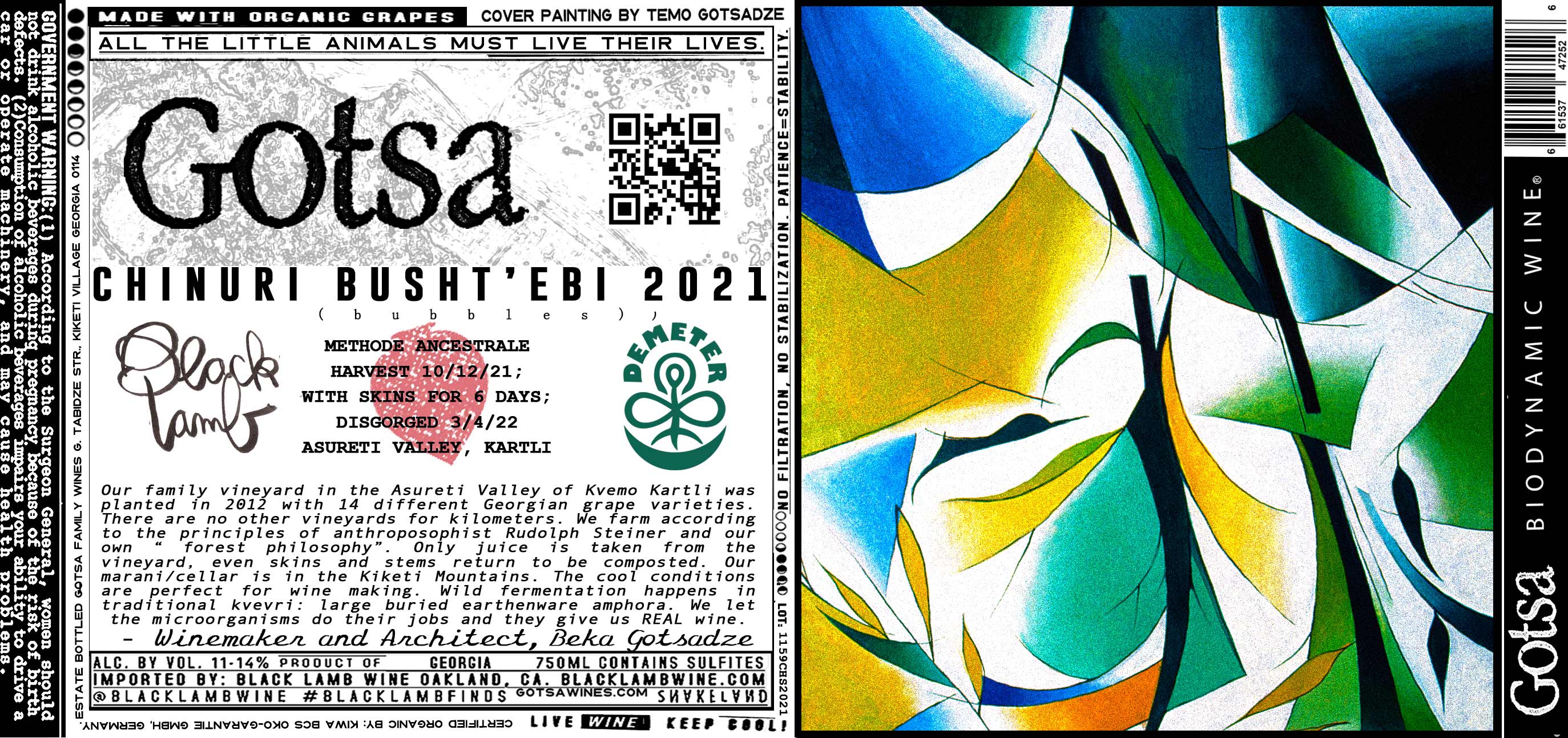
GOTSA
2021 CHINURI BUSHT'EBI
SPARKLING DRY WHITE - METHODE ANCESTRALE
VINTAGE: 2021
LOCATION: Kvemo Kartli, Asureti Valley
VINEYARD: Located near the Algeti Nature Preserve
SOIL COMPOSITION: Mixed volcanic basalt and volcanic clays
PREVAILING CLIMATE & LOCAL CLIMACTIC: Continental climate - hot days, cold nights
FARMING OF VINEYARD: Demeter Certified
GRAPE COMPOSITION: Chinuri
HARVEST: 10.12.2021; by hand MACERATION: 6 days on the skins, free run juice to a clean qvevri FERMENTATION/AGING: fermented in qvevri
DISGORGED: 3.4.22
FINING & FILTRATION: none
SULFUR DIOXIDE: 0/0
BOTTLES PRODUCED: 2000
VINTAGE: 2021
LOCATION: Kvemo Kartli, Asureti Valley
VINEYARD: Located near the Algeti Nature Preserve
SOIL COMPOSITION: Mixed volcanic basalt and volcanic clays
PREVAILING CLIMATE & LOCAL CLIMACTIC: Continental climate - hot days, cold nights
FARMING OF VINEYARD: Demeter Certified
GRAPE COMPOSITION: Chinuri
HARVEST: 10.12.2021; by hand MACERATION: 6 days on the skins, free run juice to a clean qvevri FERMENTATION/AGING: fermented in qvevri
DISGORGED: 3.4.22
FINING & FILTRATION: none
SULFUR DIOXIDE: 0/0
BOTTLES PRODUCED: 2000
Chinuri is the most common sort for sparkling wines in Kartli and in Beka's production. The variety tends to produce wines that are low in tannin and alcohol with good minerality and acidity. His is particularly expressive due to the time the wine spent with the skins prior to bottling. Hand disgorged and topped with more of the same wine. This is a perfect representation of Chinuri with Beka's touch. It is sweet on the nose, like marmalade, but not at all sweet or heavy. Drink with fresh cheeses and summer fruits.


GOTSA
2021 MTSVIVANI BUSHT'EBI
SPARKLING DRY WHITE - METHODE ANCESTRALE
VINTAGE: 2021
LOCATION: Kvemo Kartli, Asureti Valley
VINEYARD: Located near the Algeti Nature Preserve
SOIL COMPOSITION: Mixed volcanic basalt and volcanic clays
PREVAILING CLIMATE & LOCAL CLIMACTIC:
Continental climate - hot days, cold nights
FARMING OF VINEYARD: Demeter Certified
GRAPE COMPOSITION: Chinuri
HARVEST: 10.12.2021; by hand
MACERATION: 6 days on the skins, free run juice to a clean qvevri
FERMENTATION/AGING: fermented in qvevri
DISGORGED: 3.4.22
FINING & FILTRATION: none
SULFUR DIOXIDE: 0/0
BOTTLES PRODUCED: 2000
VINTAGE: 2021
LOCATION: Kvemo Kartli, Asureti Valley
VINEYARD: Located near the Algeti Nature Preserve
SOIL COMPOSITION: Mixed volcanic basalt and volcanic clays
PREVAILING CLIMATE & LOCAL CLIMACTIC:
Continental climate - hot days, cold nights
FARMING OF VINEYARD: Demeter Certified
GRAPE COMPOSITION: Chinuri
HARVEST: 10.12.2021; by hand
MACERATION: 6 days on the skins, free run juice to a clean qvevri
FERMENTATION/AGING: fermented in qvevri
DISGORGED: 3.4.22
FINING & FILTRATION: none
SULFUR DIOXIDE: 0/0
BOTTLES PRODUCED: 2000
Beka produces sparkling wines every year but never the same wine every year. Each harvest offers new opportunities and challenges, responding to the grapes rather than making them behave is the name of the game. The grapes selected and style vary from vintage to vintage. In 2021 Beka opted to use a strong Kakhetian variety to make his most delicate sparkling wine. Mtsvivavi is a rare grape that hails from the eastern region of Kakheti where the strongest amber wines are made. He was very delicate with the grapes to preserve their fruit and subtle perfume. Bright and frothy with flavors and pear and lanolin.


GOTSA
2021 TAVKVERI BUSHT'EBI
SPARKLING DRY RED - METHODE ANCESTRALE
VINTAGE: 2021
LOCATION: Kvemo Kartli, Asureti Valley
VINEYARD: Located near the Algeti Nature Preserve
SOIL COMPOSITION: Mixed volcanic basalt and volcanic clays
PREVAILING CLIMATE & LOCAL CLIMACTIC: Continental climate - hot days, cold nights
FARMING OF VINEYARD: Demeter Certified
GRAPE COMPOSITION: Tavkveri
HARVEST: 9.27.2021; by hand
MACERATION: destemmed, one night with the skins;
FERMENTATION/AGING: fermented in qvevri
DISGORGED: 3.4.22
FINING & FILTRATION: none
SULFUR DIOXIDE: 0/0
BOTTLES PRODUCED: 2000
VINTAGE: 2021
LOCATION: Kvemo Kartli, Asureti Valley
VINEYARD: Located near the Algeti Nature Preserve
SOIL COMPOSITION: Mixed volcanic basalt and volcanic clays
PREVAILING CLIMATE & LOCAL CLIMACTIC: Continental climate - hot days, cold nights
FARMING OF VINEYARD: Demeter Certified
GRAPE COMPOSITION: Tavkveri
HARVEST: 9.27.2021; by hand
MACERATION: destemmed, one night with the skins;
FERMENTATION/AGING: fermented in qvevri
DISGORGED: 3.4.22
FINING & FILTRATION: none
SULFUR DIOXIDE: 0/0
BOTTLES PRODUCED: 2000
Tavkveri, the red variety of dominance in Kartli, has a cranberry and cola quality that gives sparkling wine comparable to fine Lambrusco. Hand disgorged and topped with the same wine. It is a sparkling wine free of any additions that allows the drinker to consume it almost endlessly. It is a delight with charcuterie, pungent cheeses or pizza.


GOTSA
2017 SAPERAVI RESERVE ‘’FLOR‘’
DRY RED WINE
VINTAGE: 2017
LOCATION: Kvemo Kartli, Asureti Valley
VINEYARD: Located near the Algeti Nature Preserve
SOIL COMPOSITION OF VINEYARD(S): Mixed volcanic basalt and volcanic clays
PREVAILING CLIMATE & LOCAL CLIMACTIC: Continental climate - hot days, cold nights
FARMING OF VINEYARD: Demeter Certified
COMPOSITION: Saperavi
HARVEST: 9.19.2017; by hand
MACERATION: destemmed, 7 days, no pressing
FERMENTATION/AGING: fermented and aged in qvevri, Flor developed and remained for 1 year.
FINING & FILTRATION: none
BOTTLED: 3.27.20
BOTTLES PRODUCED: 4000
VINTAGE: 2017
LOCATION: Kvemo Kartli, Asureti Valley
VINEYARD: Located near the Algeti Nature Preserve
SOIL COMPOSITION OF VINEYARD(S): Mixed volcanic basalt and volcanic clays
PREVAILING CLIMATE & LOCAL CLIMACTIC: Continental climate - hot days, cold nights
FARMING OF VINEYARD: Demeter Certified
COMPOSITION: Saperavi
HARVEST: 9.19.2017; by hand
MACERATION: destemmed, 7 days, no pressing
FERMENTATION/AGING: fermented and aged in qvevri, Flor developed and remained for 1 year.
FINING & FILTRATION: none
BOTTLED: 3.27.20
BOTTLES PRODUCED: 4000
Saperavi is the most widely planted variety in Beka’s vineyard. He has a number of clones. While perhaps the least unusual stylistically (a big chewy red) it is Saperavi Reserve that his vineyard shows its great potential. Fruit is destemmed, never pressed, all free run. In Qvevri for more than 1 year. The 2017 vintage was marked by the presence of flor. Like one encounters in Jerez or Jura. Here it softens the burlyness of the variety resulting in a ruby, instead of inky, red wine of haunting perfume. Dank, cerebral, mystical, it tastes of spiced plum cakes and morning dew.


GOTSA
2020 TSITSKA / TSOLIKOURI
DRY AMBER WINE
VINTAGE: 2020
LOCATION: Kvemo Kartli, Asureti Valley
VINEYARD: Located near the Algeti Nature Preserve
SOIL COMPOSITION OF VINEYARD(S): Mixed volcanic basalt and volcanic clays
PREVAILING CLIMATE & LOCAL CLIMACTIC: Continental climate - hot days, cold nights
FARMING OF VINEYARD: Demeter Certified
COMPOSITION: 50% Tsitska, 50% Tsolikouri
HARVEST: 10.12.2020; by hand
MACERATION: 5 days co-fermentation on the skins
FERMENTATION/AGING: fermented and aged in qvevri
FINING & FILTRATION: none
BOTTLED: 3.17.22;
BOTTLES PRODUCED: 4000
VINTAGE: 2020
LOCATION: Kvemo Kartli, Asureti Valley
VINEYARD: Located near the Algeti Nature Preserve
SOIL COMPOSITION OF VINEYARD(S): Mixed volcanic basalt and volcanic clays
PREVAILING CLIMATE & LOCAL CLIMACTIC: Continental climate - hot days, cold nights
FARMING OF VINEYARD: Demeter Certified
COMPOSITION: 50% Tsitska, 50% Tsolikouri
HARVEST: 10.12.2020; by hand
MACERATION: 5 days co-fermentation on the skins
FERMENTATION/AGING: fermented and aged in qvevri
FINING & FILTRATION: none
BOTTLED: 3.17.22;
BOTTLES PRODUCED: 4000
Tsitska and Tsolikouri are atypical of the region but Beka chose to plant them anyway. They are common to West Georgia, a much cooler and wet environment. In 2020 Beka macerated the varieties together for 5 days. Their thin skins extracted easily giving a wine of texture and acidity. The exotic aromas of oolong tea, ginger, lemon grass and the sort derive from the varieties and the natural biology of the qvevri. Simultaneously juicy and fuzzy.

JAKELI
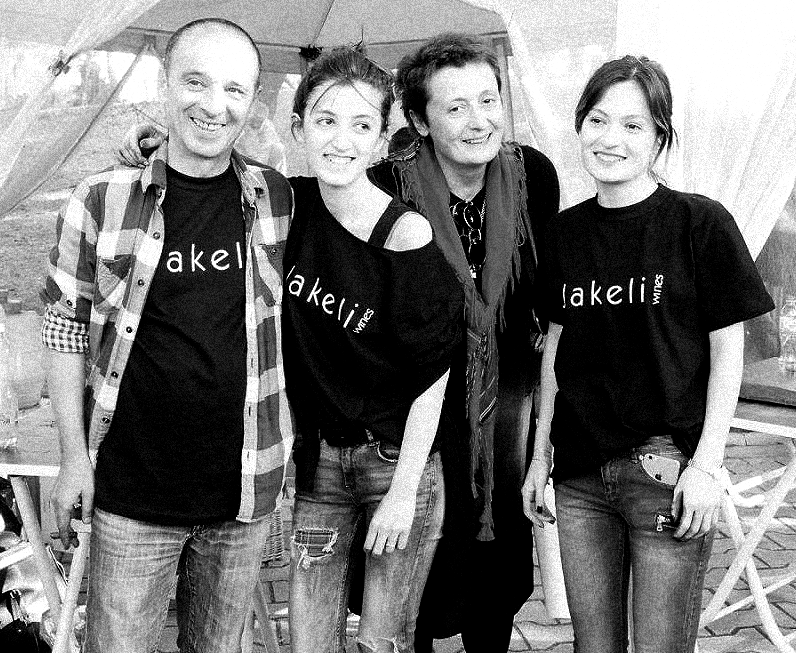
2019 SAPERAVI
OWNER AND WINEMAKER: Zaza Jakeli
REGION: Khashmi, Kakheti.
REGION: Khashmi, Kakheti.
The Jakeli's were some of Georgia's earliest proponents of natural wine and Khashmi; the now premiere appellation for Saperavi. The style of the wines have developed since the early vintages and are today at their best. Winemaker Zaza Jakeli is making some of the tastiest and most site specific examples we have encountered. His wines validate the importance of the Saperavi variety, the land, the traditional Georgian methods of wine making and the use of traditional wood-fired terracotta Kvevri.

JAKELI
2019 Saperavi.Grape: Saperavi.
The Kakhetian village Khashmi is home to the best Saperavi in Georgia. The Jackeli vineyard is nestled 760 m above sea level with a South west orientation, in the foothills of Tsiv-Gombori mountain range of the Caucuses, surrounded by field flowers, Blackberries, sea buckthorn and sweetbriar. The unique combination of alluvial carbonic limestone soils and the local climate produce intense, dark, rich, full-bodied wine made from the endemic Saperavi grown in their never irrigated vineyard, handpicked, sorted and macerated for 1 month. It is then aged for an additional year or more before being bottled. It reflects its environment and the local flora and fauna. The texture and structure of the wine is as intricate as the aromas and the wine is most deserving of a long decanting or slow consumption over many days. While Saperavi is today as well known as any Georgian variety this example belongs next to the greatest of wines, regardless of place or sort, an upper echelon of expression.
JAMBERIDZE

2018 TSITSQA TSOLIKOURI
2019 TSITSQA TSOLIKOURI
Gia Jamberidze Family Cellar, is in the Chokhatauri region of Guria in the village of Goraberezhouli. Located in the west of Georgia 20 miles from the Black Sea at 150 meters above sea level. The climate is subtropical. The soils are rocky. Though there is a long and storied history of wine production in the area it was largely destroyed during the Soviet period and today most of the wine is drunk only at home and made from Isabela, an imported non vinifera hybrid that tends to give low quality unstable wines. Gia lives in his familial home with his father, wife, children and grandchildren. They have a small cellar used for food storage and making wine from the .5 hectares of variously trained Tsitska and Tsolikauri (the local spelling of Tsolikouri) that surrounds the family home. Some are treslised like trees and as much as 10 feet from the ground.
Their location is idyllic. The region is green, hilly and nature dominates. The home, cellar and vineyards are all one. Animals mosey about and laundry flaps next to the vines. Weather permitting you eat outside, if it does not then on the threshold of the cellar. The cellar is small but perfect. Lines of golden glass bulbs full of Gia’s wine cover the center of the room. The walls are filled with fermenting jars preserving for the winter. The wine they sell, like so many of Georgia’s best wines, is what they do not consume.
His blend of Tsitsqa and Tsolikauri (the local spelling of Tsitska and Tsolikouri) was harvested and crushed into very old oak barrels. After fermenting and settling in the barrel it was racked into glass demijohn in advance of the following year’s harvest. Bottled unfiltered. Gia produces between 500 and 1000 bottles annually. A bracing slap of cold. Low alcohol, lemony and leesy in a way that makes oysters scream.

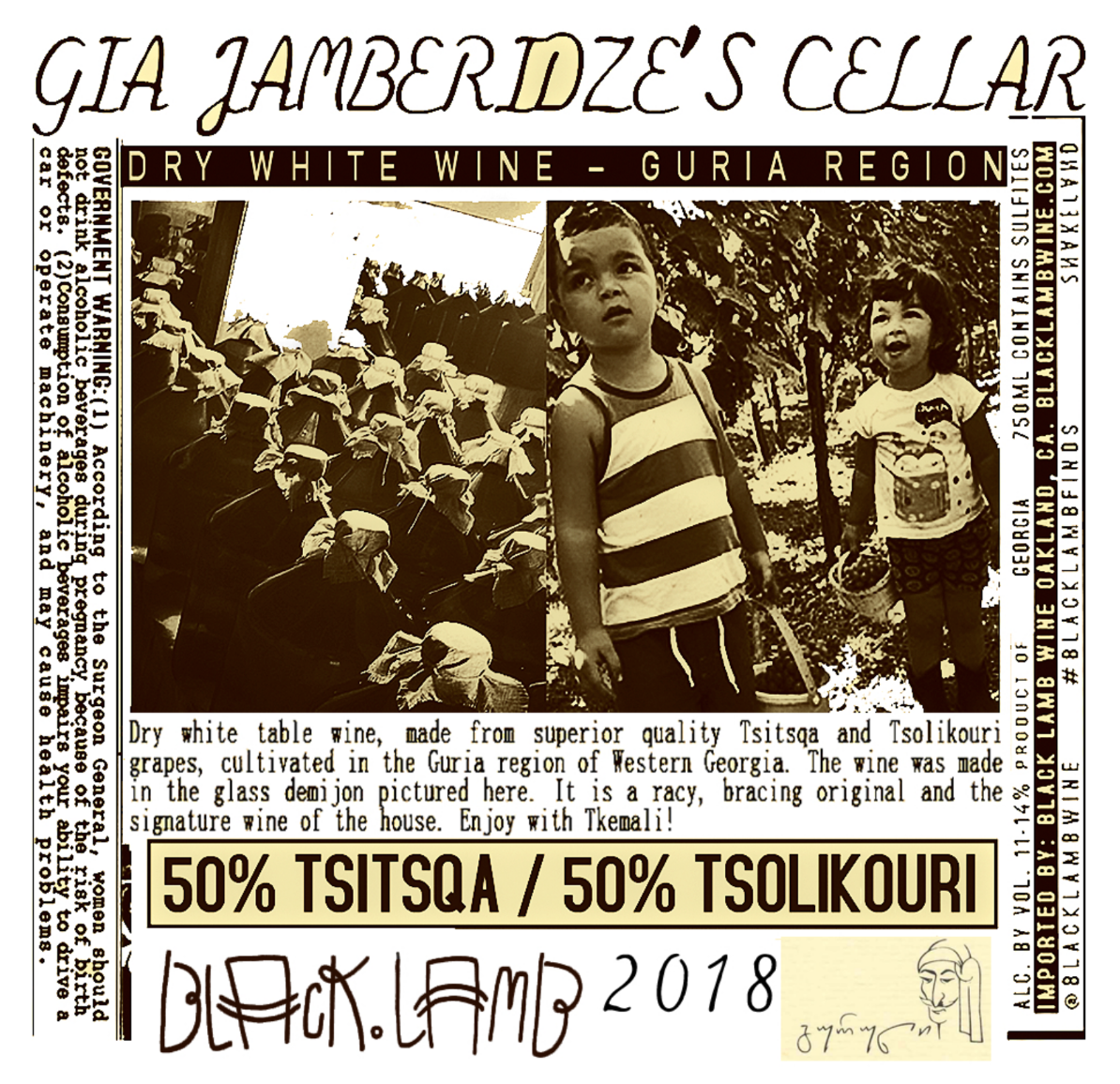
JAMBERIDZE
2018 Tsitsqa Tsolikouri.
location: chokhatauri, guria, georgia. winemaker: gia jamberidze.
grape(s): 50% tsitska 50% tsolikouri.
soils: clay, carbonic substraight.
vinification: wild cofermentation in old barrel, aged in glass demijon, bottled to order.
no fining no filtration no so2.
700 bottles.
Gia's blend of Tsitsqa and Tsolikauri (the local spelling of Tsitska and Tsolikouri) was harvested and crushed into very old oak barrels. After fermenting and settling in the barrel it was racked into glass demijohn in advance of the following year’s harvest. Bottled unfiltered. Gia produces between 500 and 1000 bottles annually. A bracing slap of cold. Low alcohol, lemony and leesy in a way that makes oysters scream.
![]()
JAMBERIDZE
2019 Tsitsqa Tsolikouri.
location: chokhatauri, guria, georgia.
winemaker: gia jamberidze.
grape(s): 50% tsitska 50% tsolikouri.
soils: clay, carbonic substraight.
vinification: wild cofermentation in old barrel, aged in glass demijon, bottled to order.
no fining no filtration no so2.
700 bottles.
Gia's blend of Tsitsqa and Tsolikauri (the local spelling of Tsitska and Tsolikouri) was harvested and crushed into very old oak barrels. After fermenting and settling in the barrel it was racked into glass demijohn in advance of the following year’s harvest. Bottled unfiltered. Gia produces between 500 and 1000 bottles annually. A bracing slap of cold. Low alcohol, lemony and leesy in a way that makes oysters scream. 2019 WAS AN INSANE VINTAGE FOR THIS WINE. BEST EVER.
PAPARI VALLEY
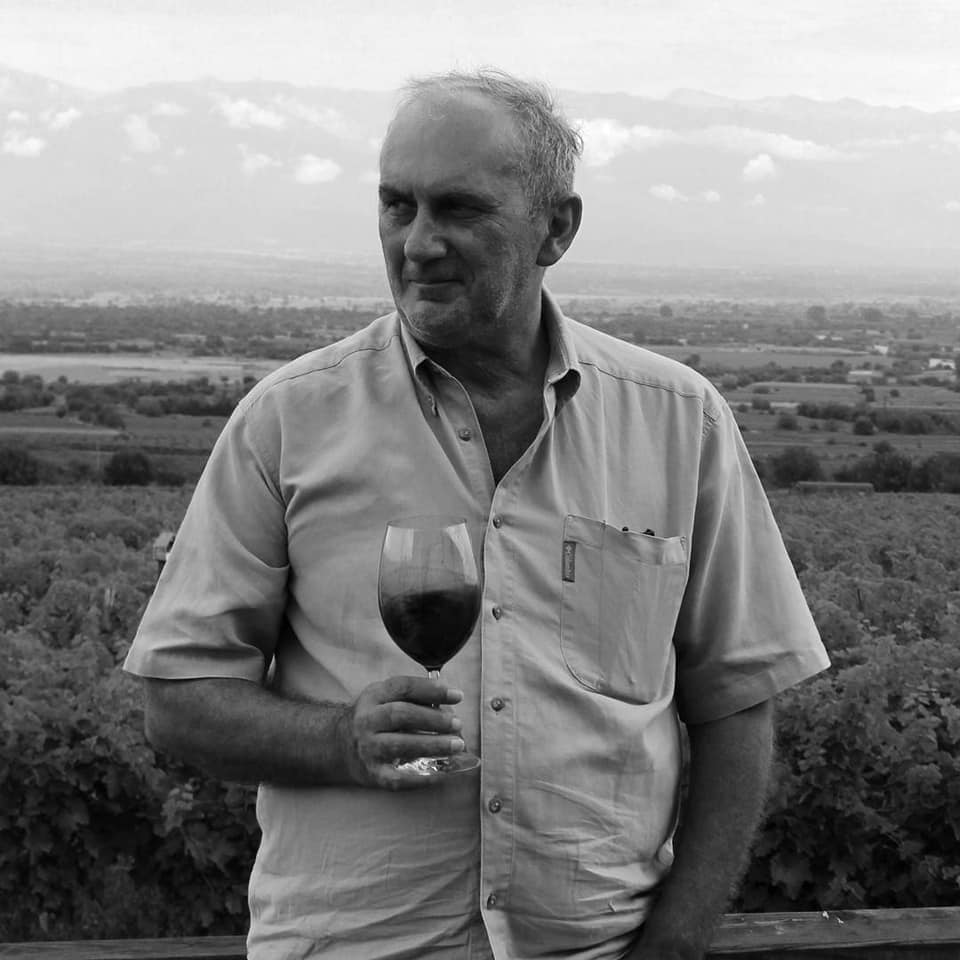
2020 RKATSITELI CHINURI QVEVRI #9
2020 RKATSITELI QVEVRI #20
2020 RKATSITELI QVEVRI #21
2020 SAPERAVI QVEVRI #8
2020 SAPERAVI QVEVRI #11
OWNER AND WINEMAKER: Sandro Kurdadze
REGION: Akhasheni, Gurjaani, Kakheti, Georgia.
REGION: Akhasheni, Gurjaani, Kakheti, Georgia.
Papari Valley is the family farm of Ketevan Gurabanidze; Shalva (Nukri) Kurdadze and their son Sandro. The first two hectares of vineyards were purchased in 2004 and they continued to add to the estate until 2010. The vineyards have been cared for according to certified organic requirements from the beginning. Vineyards and cellar are situated on the wavy relief of our sloping mountainside, resembling the mane of a horse for which Papari Valley is named. In Georgian Papari means "horse mane". That is why the horse is depicted on the logo, which was painted by Sandro when only 7 years old.

![]()
PAPARI VALLEY
2020 Rkatsiteli Chinuri Qvevri #9.
Papari Valley Winery is situated at the intersection of three grand terroirs; Akhasheni, Mukuzani and Gurjaani. We built our marani/cellar in the middle of the vineyard. This wine is a blend of Rkatsiteli from our vineyard and Chinuri we source from vines we manage in neighboring Kartli. It was naturally fermented and aged in qvevri with the skins and stems for 3 months before being pressed into a clean qvevri and aged an additional 3 months before bottling. Blending Chinuri with Rkatsiteli allows us to make a gentle, less structured expression of our cellar. Unfiltered, sediment is probable. Decant and serve at cellar temperature. (Chinuri is a thinner skinned more aromatic variety common to Kartli a cooler more western local).
alc/vol 12.5%
![]()
PAPARI VALLEY
2020 Rkatsiteli Qvevri #20.
Papari Valley Winery is situated at the intersection of three grand terroirs; Akhasheni, Mukuzani and Gurjaani. We built our marani/cellar in the middle of the vineyard. This wine is a blend of Rkatsiteli from our vineyard and Chinuri we source from vines we manage in neighboring Kartli. It was naturally fermented and aged in qvevri with the skins and stems for 3 months before being pressed into a clean qvevri and aged an additional 3 months before bottling. Blending Chinuri with Rkatsiteli allows us to make a gentle, less structured expression of our cellar. Unfiltered, sediment is probable. Decant and serve at cellar temperature. (Chinuri is a thinner skinned more aromatic variety common to Kartli a cooler more western local).
alc/vol 12.5%

PAPARI VALLEY
2020 Rkatsiteli Qvevri #21.
This wine was made from the ancient indigenous white grape variety Rkatsiteli. (This wine was made from a block of older vines harvested later than Qvevri 20 above) It was naturally fermented and aged in qvevri with the skins and stems for 4 months before being pressed into a clean qvevri and aged an additional 4 months before bottling. Unfiltered. Sediment is probable. Decant and serve at cellar temperature. Cellarable for 10 or more yrs. abv 14.4%
![]()
PAPARI VALLEY
2020 Saperavi Qvevri #8.
This wine was made from the ancient indigenous red grape variety Saperavi. It was naturally fermented in qvevri with the skins and stems for 6 weeks, pressed into clean qvevri, and aged an additional 9 months before bottling. Unfiltered, sediment is probable. Decant and serve at cellar temperature. Cellarable for 10 or more years. alc/vol 14.5%
![]()
PAPARI VALLEY
2020 Saperavi Qvevri #11.
This wine was made from the ancient indigenous red grape variety Saperavi. It was naturally fermented in qvevri with the skins and stems for 6 weeks, pressed into clean qvevri, and aged an additional 9 months before bottling. Unfiltered, sediment is probable. Decant and serve at cellar temperature. Cellarable for 10 or more years. alc/vol 13.8%

ORI MARANI
2021 Areva
Pet-Nat Rose
Location: Kartli (Shida)
Village: Lamiskana
Grapes: 50% Chinuri, 30% Goruli Msvtane and 20% Tavkveri
Vine age: 20 years
Soil: Loamy Clay
Altitude: 700m
Vinification: Methode ancestrale of Kartlian varieties.
Taste: Super rich, fruity, juicy and complex.
Production: 1200 bottles
Location: Kartli (Shida)
Village: Lamiskana
Grapes: 50% Chinuri, 30% Goruli Msvtane and 20% Tavkveri
Vine age: 20 years
Soil: Loamy Clay
Altitude: 700m
Vinification: Methode ancestrale of Kartlian varieties.
Taste: Super rich, fruity, juicy and complex.
Production: 1200 bottles

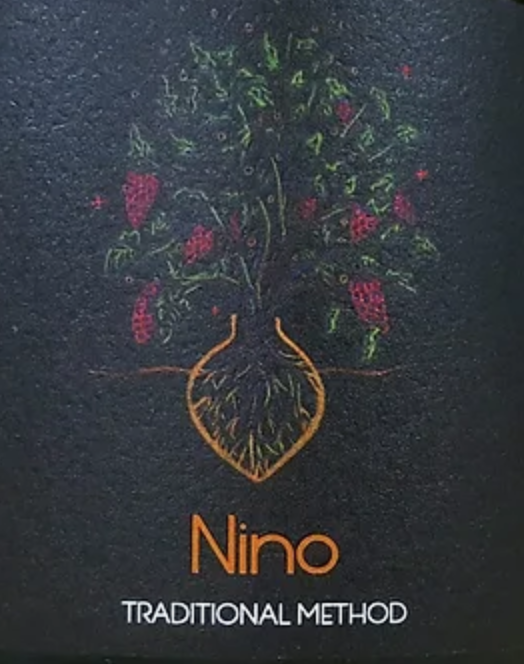
ORI MARANI
Nino
Non-vintage
Methode traditionelle
90% of 2020 + 10% Reserve perpetuelle
Grape(s): native Georgian blanc varieties
Vinification: Fermentation in Qvevri and Barrels. Tirage in may 2021 / 15 months aged on lees / Extra brut
Taste: fresh, fruity, mineral, complex.
Production: 1000 bottles
sparkling white wine
Methode traditionelle
90% of 2020 + 10% Reserve perpetuelle
Grape(s): native Georgian blanc varieties
Vinification: Fermentation in Qvevri and Barrels. Tirage in may 2021 / 15 months aged on lees / Extra brut
Taste: fresh, fruity, mineral, complex.
Production: 1000 bottles
sparkling white wine


ORI MARANI
Definitely Maybe
Non-vintage (2021 juice + Reserve perpetuelle)
Vine age: 25 years
Soil: clay/loam
Varieties: Local blanc varieties
Vinification: 60% fresh juice is blended with 40% of our qvevri aged “reserve perpetuelle”. Creating a sparkling wine of freshness and maturity.
Taste: Super rich and complex. Production: 75 bottles
sparkling white wine
Vine age: 25 years
Soil: clay/loam
Varieties: Local blanc varieties
Vinification: 60% fresh juice is blended with 40% of our qvevri aged “reserve perpetuelle”. Creating a sparkling wine of freshness and maturity.
Taste: Super rich and complex. Production: 75 bottles
sparkling white wine


ORI MARANI
2021 Nita
Location: Khashmi
Grape(s): SAPERAVI
Soil: Limestone, clay
Vine age: 20 year old vines Elevation: 800m
Vinification: Semi carbonic 10 day maceration fermented and aged in Qvevri and old French barrels.
Very light red wine, super fruity and spicy, low tannins.
Production: 2200 bottles
Dry red wine.
Grape(s): SAPERAVI
Soil: Limestone, clay
Vine age: 20 year old vines Elevation: 800m
Vinification: Semi carbonic 10 day maceration fermented and aged in Qvevri and old French barrels.
Very light red wine, super fruity and spicy, low tannins.
Production: 2200 bottles
Dry red wine.


ORI MARANI
2021 Anuka
Location: Rupoti, Terjola, Imereti
grape(s): Tsitska
Soil: calcareous clay with flint
Vine age: 30 year old vines
Vinification: Direct press of Tsitska fermented in 90% old barrels and 10% Qvevri. Complex white wine.
Production: 800 bottles
Dry white wine.
grape(s): Tsitska
Soil: calcareous clay with flint
Vine age: 30 year old vines
Vinification: Direct press of Tsitska fermented in 90% old barrels and 10% Qvevri. Complex white wine.
Production: 800 bottles
Dry white wine.

ORI MARANI
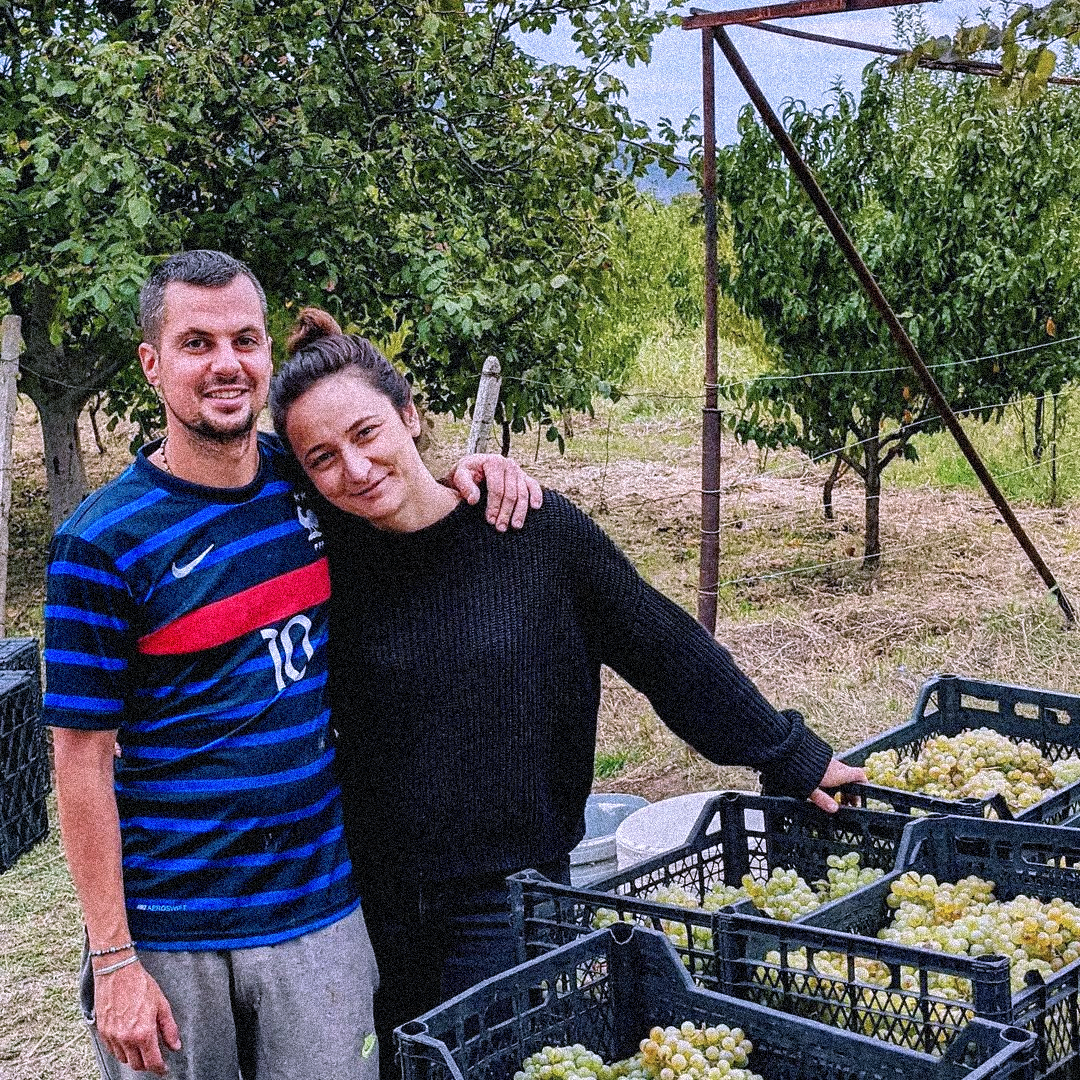
OWNER AND WINEMAKER:
Nino Gvantseladze, Bastien Warskotte.
REGION: Igoeti, Kartli, Georgia.Ori Marani is the love project of Bastien Warskotte and his wife Nino Gvantseladze. A mixing of worlds and cultures based on adoration. They met while studying in Slovakia and decided to settle down in Nino's Georgia and establish a winery of their own. They chose Georgia because they would have a greater opportunity (and adventure) than in Bastien's native Champagne where his family produces wine. The heart of their production is in the long elevage sparkling wines inspired by Champagne but rooted in Georgian traditional varieties and qvevri vinification. The line of sparkling wines includes a range of production styles including Ancestrale, Ca Fondo and Traditionelle Methode wines. There is no parallel to what Ori is doing with bubbles, their work will influence many. In addition to their sparkling wines they produce a range of still wines. Grapes are sourced from prime locations through Georgia and they work closely with growers to ensure the quality and health of the fruit. Their approach to winemaking is typified by restraint, macerations are never highly extractive, rather they pursue textural lightness and delicacy. Ori Marani wines are a great compliment to Georgian wine diversity and expand this diversity ever further.


SOPROMADZE
2021 Tsolikouri Melqo-Bazaleti
Grape(s): 70% Bazaleturi Tsolikouri (green), 30% Melqo Tsolikouri (yellow).
Altitude: 160 m.
Soil: Sandstone.
Vinification: churi, without skin.
Bottles produced: 1200.
Altitude: 160 m.
Soil: Sandstone.
Vinification: churi, without skin.
Bottles produced: 1200.
A classical combination of sweet yellow Tsolikouri and sour green Tsolikouri. The wine was vinified in Churi (qvevri) with 10% of skins. This provides a healthy fermentation without contributing the extract found in “Orange” wines made in terracotta. A dynamic wine with body and focus.


SOPROMADZE
2021 6x Type
Grapes: 20% Tsolikouri Mtsvane (green), 20% Tsolikouri Melqo (yellow), 20% Tsiska
(yellow), 20% Tsiska (green), 10% Krakhuna (green), 10% Krakhuna (yellow)
Altitude: 180 -200 mm.
Soil: Hard yellow clay
Vinification: Churi (w/o skin).
Bottles produced: 2400 Bottles.
(yellow), 20% Tsiska (green), 10% Krakhuna (green), 10% Krakhuna (yellow)
Altitude: 180 -200 mm.
Soil: Hard yellow clay
Vinification: Churi (w/o skin).
Bottles produced: 2400 Bottles.
Symphony of the vineyards, a taste of our land, harmonizing, opalescent in color and taste.


SOPROMADZE
2021 Tsitska
Grape: Tsitska.
Altitude: 180m.
Soil: Hard yellow clay.
Vinification: Churi (w/o skins).
Bottles produced: 1700 Bottles.
Altitude: 180m.
Soil: Hard yellow clay.
Vinification: Churi (w/o skins).
Bottles produced: 1700 Bottles.
The clearest lens onto our land. More mineral than fruit. Tsitska is electric.


SOPROMADZE
2021 Krakhuna
Grape: Krakhuna.
Altitude: 180m.
Soil: Hard yellow clay.
Vinification: Churi, without skin.
Bottles produced: 2240 Bottles.
Altitude: 180m.
Soil: Hard yellow clay.
Vinification: Churi, without skin.
Bottles produced: 2240 Bottles.
Gaioz’ gold tooth. The wine he drinks before all others. Strange, alluring,
irresistible.
irresistible.


SOPROMADZE
2021 Rose
Grapes: 90% Tsolikouri Melqo (yellow), 10% Chkhaveri.
Altitude: 180-200 mm.
Soil Composition of Vineyard(s): Hard yellow clay
Vinification: churi, co-fermentation, Tsolikouri without skin, Chkhaveri with skin for 5 days
Bottles produced: 2000 Bottles.
Altitude: 180-200 mm.
Soil Composition of Vineyard(s): Hard yellow clay
Vinification: churi, co-fermentation, Tsolikouri without skin, Chkhaveri with skin for 5 days
Bottles produced: 2000 Bottles.
Gaioz’ favorite flower and a perfect gift for a visitor.

SOPROMADZE
SOPROMADZE
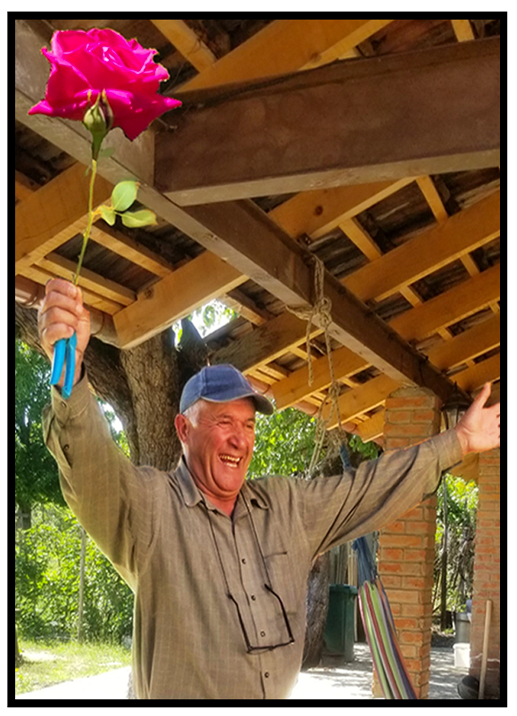
OWNER/WINEMAKER:
Gaoiz Sopromadze.
REGION: Baghdati, Georgia.Among Georgia's original natural winemakers. Farming in the cool, green, rocky village of Baghdati in West Georgia. Everything is made in churi (kvevri), the wines are super fresh, bright low alcohol but deep. 0/0.

MARVLA TINDO
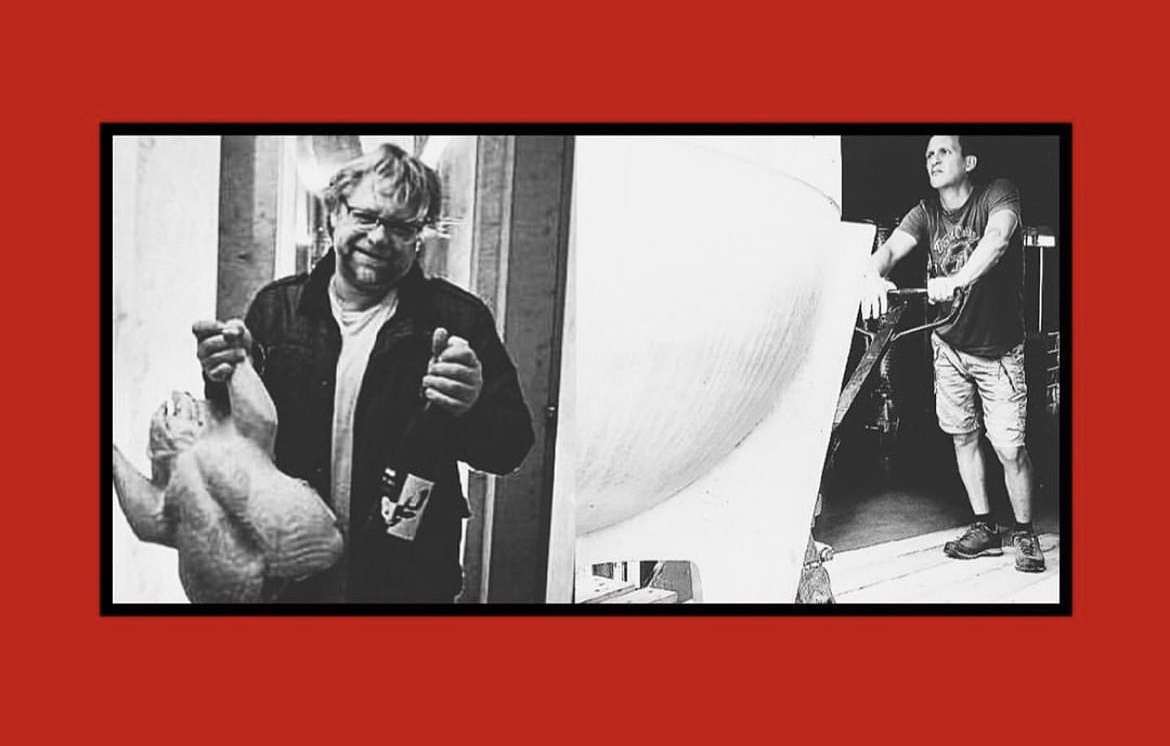
OWNER/WINEMAKER:
Vlado Kuny, Martin Danielic.
REGION: Sitno Volcano.Marvla TINDO is a decision of two different people who have a common goal, vision and dream - WINE. Our small winery with a production of 8,000 to 10,000 liters per year was established in 2009 and focuses on the production of wines with a terroir imprint and the character acquired in the vineyard.
“The less we do, the more we find out who we really are. We let nature and time speak, because we think that witnessing a process is more than being its supposed director.
We often encounter the fact that the winery will start to prosper, increase production and the quality will decrease. By being a micro-winemaker, we can deal with wines systematically. We can use natural methods, only physical interventions, we don't need to go to the security offered by today's advanced science, and we create a parental relationship with every wine.
Every year is climatically unique, which offers a raw material with a unique composition, which determines the chosen technological process.” - MarTIN Danielič and VlaDO Kuny
Behind the Marvla TINDO winery are marTIN and vlaDO, two friends who decided not only to debate and taste wine, but also to make their own. They designed and dug a new cellar on the outskirts of the district town of Levice, in the wine-growing part, where Levice vineyards and hajloky have been since time immemorial, at the foot of the Sitno volcano. Each year, they discover new possibilities for vineyards planted on the volcanic bedrock.
"LET NATURE AND TIME SPEAK, BECAUSE WE THINK THAT WITNESSING THE PROCESS IS MORE THAN BEING ITS SUPPOSED DIRECTOR," AGREE MARTIN DANIELIC AND VLADO KUNY.
They watch why vineyards are planted somewhere and somewhere, why our ancestors planted varieties such as planted, which are the original varieties, how to minimize interference in the cellar, but also how wooden barrels work and what effect the vintage has on wine. The wines in the Marvla Tindo winery ferment on natural yeasts, allowing the grapes to show their terroir. Subsequently, they lie and mature on fine lees in Slovak barriques, without filtration and any other interventions from the outside. Thanks to the wine, they suddenly look with new eyes at the landscape below the Sitno volcano. Suddenly, wine is not a goal, but a way to get to know the world around you.


TINDO
PESECKÁ LEÁNKA 2022
DRY WHITE WINE
WINEMAKERS: Vlado Kuny and Martin Danelič
REGION: Slovak Republic, Nitra, Tekovský, SITNO, Levice
VINEYARD: Levice - Strážny vrch - Albína
GRAPE(S): Pesecká Leánka
FARMING: Ecological
Soil: Volcanic
Altitude: 280 - 350 meters
Fermentation: Spontaneous Fermentation, brief skin contact
Aging: Stainless steel and used barrels
Fining and Filtration:none
Total So2:none added
Alcohol: 12%
Bottles produced: 2,500
Pesecka Leánka is an old Carpathian variety perfectly acclimated to the blazing summers and ice winters of the Tekovský region. Despite the hardiness of the vine the fruit of Leanka, AKA the “royal maiden”, is delicate with a nuanced and sophisticated perfume. It is a variety Martin and Vlado adore and dote on. Theirs, like most of their wines, is quite serious. Not without the fluttery whimsy of Pesecka but also contemplative, structured and flinty. It is a wine we find ourselves opening when we need something with gastronomic flair but suited for the day time. Light rustic cheeses, chlorophyll rich greens, and fowl from chickens to geese.


TINDO
Sedimental NV
DRY WHITE SPARKLING WINE
VINTAGE: 2020/2021
WINEMAKERS: Vlado Kuny and Martin Danelič
REGION: Slovakia, Nitra, Tekovský, SITNO, Levice
VINEYARD: Žemberovce - Near the cross
GRAPE(S): Rizling Vlašský (Welschriesling), 2 vintages from the same vineyard
TYPE OF FARMING: Ecological
FERMENTATION: Spontaneous Fermentation, brief skin contact.
AGING: 2020 was aged 1 year in used barrique. The 2020 harvest was added to the 2021 and allowed to ferment until it was bottled to achieve a Champagne like carbonation.
FINING AND FILTRATION: None
BOTTLED: October 2021
ALCOHOL: 12%
TOTAL PRODUCTION: 5,000 bottles
VINTAGE: 2020/2021
WINEMAKERS: Vlado Kuny and Martin Danelič
REGION: Slovakia, Nitra, Tekovský, SITNO, Levice
VINEYARD: Žemberovce - Near the cross
GRAPE(S): Rizling Vlašský (Welschriesling), 2 vintages from the same vineyard
TYPE OF FARMING: Ecological
FERMENTATION: Spontaneous Fermentation, brief skin contact.
AGING: 2020 was aged 1 year in used barrique. The 2020 harvest was added to the 2021 and allowed to ferment until it was bottled to achieve a Champagne like carbonation.
FINING AND FILTRATION: None
BOTTLED: October 2021
ALCOHOL: 12%
TOTAL PRODUCTION: 5,000 bottles
SEDIMENTAL is perhaps the greatest seafood wine ever made in a landlocked country. It is an inventive multi vintage cuvee made up of approximately 50/50 2020/2021 Rizling Vlašský (Welchrieling). The 20’ was fermented dry in large used oak barrels. After harvesting the fruit from 2021, the two vintages were combined in stainless steel and allowed to ferment almost to dryness. The wine was then bottled unfiltered with the fine lees to finish fermentation under pressure. The combination of volcanic soil, the neutrality of the grape variety and the unconventional vinification result in an original wine that exemplifies the subtlety of the grape.While it is possible to separate the wine from the sediment either by decanting or manually disgorging it, we recommend shaking the bottle before chilling it well so the yeast is incorporated. The finely integrated bubbles move slowly up the glass. The wine has an oiliness, but drinks quite light. The aromas are beguiling and ever changing. Ranging from pear, to hay to anise or tarragon. A sophisticated aperitif to serve alongside chilled shellfish.


TINDO
Proza 2021
DRY WHITE WINE
WINEMAKERS: Vlado Kuny and Martin Danelič
REGION: Slovak Republic, Nitra, Tekovský, SITNO, Levice
GRAPES(S): Ryzlink vlašský (Welschriesling) 40%, Riesling 30%, Pesecka Leánka 20%, Tramín (Gewürztraminer) 10%
TYPE OF FARMING: Ecological
SOIL: volcanic tuff, other vulcan.
ALTITUDE: 280 - 350 meters
FERMENTATION: direct press, stainless steel, a tiny touch of štivinica oak (Tramín).
AGING: Stainless steel and used barrels
FINING AND FILTRATION: none
ALCOHOL: 12%
BOTTLES PRODUCED: 2500.
WINEMAKERS: Vlado Kuny and Martin Danelič
REGION: Slovak Republic, Nitra, Tekovský, SITNO, Levice
GRAPES(S): Ryzlink vlašský (Welschriesling) 40%, Riesling 30%, Pesecka Leánka 20%, Tramín (Gewürztraminer) 10%
TYPE OF FARMING: Ecological
SOIL: volcanic tuff, other vulcan.
ALTITUDE: 280 - 350 meters
FERMENTATION: direct press, stainless steel, a tiny touch of štivinica oak (Tramín).
AGING: Stainless steel and used barrels
FINING AND FILTRATION: none
ALCOHOL: 12%
BOTTLES PRODUCED: 2500.
This is the bottle of Marvla Tindo we find ourselves opening the most often. It makes a lovely house white. To have only a bottle on hand is not enough. The motivation behind its production is clearly that of function. It is a blend of Welschriesling, Rhine Riesling, and Leánka macerated together for a few hours, pressed and spontaneously fermented in a stainless steel tank. then aged sur lie. Tramín of the previous vintage aged in Štiavnica oak is added to the fermenting rieslings near the end of fermentation to homogenize. In the finish it is a wine to open often and repeatedly. Juicy and thoughtful with aromas and flavors tree blossom and white fleshed fruit, some vintages have a bit of fizz others are quiet but there remains a certain vivacity. Martin makes the wine making choices for Proza, It's sibling Poezia a red, the choices are Vlado's both think the other makes the better choices in typical vintages.


TINDO
Identikit 2019
DRY WHITE WINE
WINEMAKERS: Vlado Kuny and Martin Danelič
REGION: Slovak Republic, Nitra, Tekovský, SITNO, Levice
WINE MAKERS: Vlado Kuny and Martin Danelič.
GRAPE(S): Pinot Gris.
SOIL: volcanic tuff.
FERMENTATION: Spontaneous, 1 day with skins
AGING: 1 year in new local štiavnica oak.
BOTTLED: May, 2021.
BOTTLES PRODUCED: 2000.
After a brief maceration the wine is pressed and fermented in locally oak for 1 year, without filtration or So2. Viscous and deep yellow in color. Rich in aroma, honey, yellow fruits, hazelnuts and smoke. Full but juicy with a nice slightly spicy edge, a strong mineral undertone, and pleasant acidity. It can be combined with fatty fish dishes, lightly aged cheeses and light appetizers.

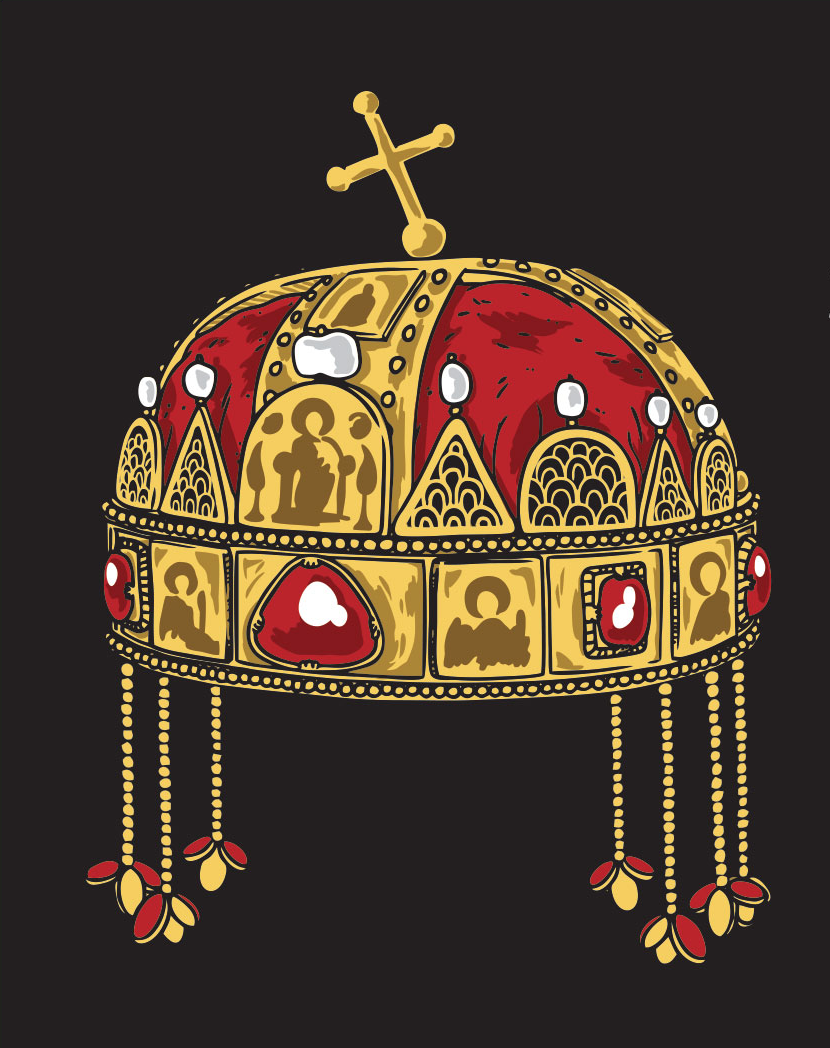
TINDO
2020 FRANKOVKA MODRÁ
DRY RED WINE
VINTAGE: 2020
WINEMAKERS: Vlado Kuny and Martin Danelič
REGION: Slovak Republic, Nitra, Tekovský, SITNO, village Čajkov
VINEYARD: Brhlovce - Upper vineyards
ALTITUDE: 280 - 350 meters
GRAPE(S): 100% Frankovka Modrá (Blaufränkisch)
SOIL: Andesite and Volcanic tuff
FARMING: Ecological
FERMENTATION: Spontaneous
MACERATION: 4 weeks destemmed berries
AGING: 1 year in used Štiavnica Slovakian barrique
FINING AND FILTRATION: none
ALCOHOL: 14%
BOTTLED: MAY, 2022
BOTTLES PRODUCED: 2100
Frankovka Modrá AKA Blaufränkisch is a most important red variety. It is common throughout Panonia (Hungary, Austria, Czech and of course Slovakia). It likely originated in South East Slovenia where it can still be found, most typically as a blending variety. It is a mirror of a grape variety, transmuting the land and weather into the finished wine. That from interesting soil, especially volcanic, produces the most dramatic wines. It is the key red variety in the production of Marvla Tindo’s red wines. Our favorite of them is the unblended version.
A handful of bottles of an early vintage made their way to a preeminent wine competition in Vienna and opened the eyes of Martin and Vlado and many doors. It was an underdog and a champion, and remains that. An exemplary rendition of the grape sort. Full of violets and grapefruits, camphor and coffee, spicy, woodsy, long and scintillating with agile tannins and Habsburgian charm.
A handful of bottles of an early vintage made their way to a preeminent wine competition in Vienna and opened the eyes of Martin and Vlado and many doors. It was an underdog and a champion, and remains that. An exemplary rendition of the grape sort. Full of violets and grapefruits, camphor and coffee, spicy, woodsy, long and scintillating with agile tannins and Habsburgian charm.

WINE PRODUCERS IN THE POLITICALLY DEMARCATED ZONE OF... SLOVAK REPUBLIC
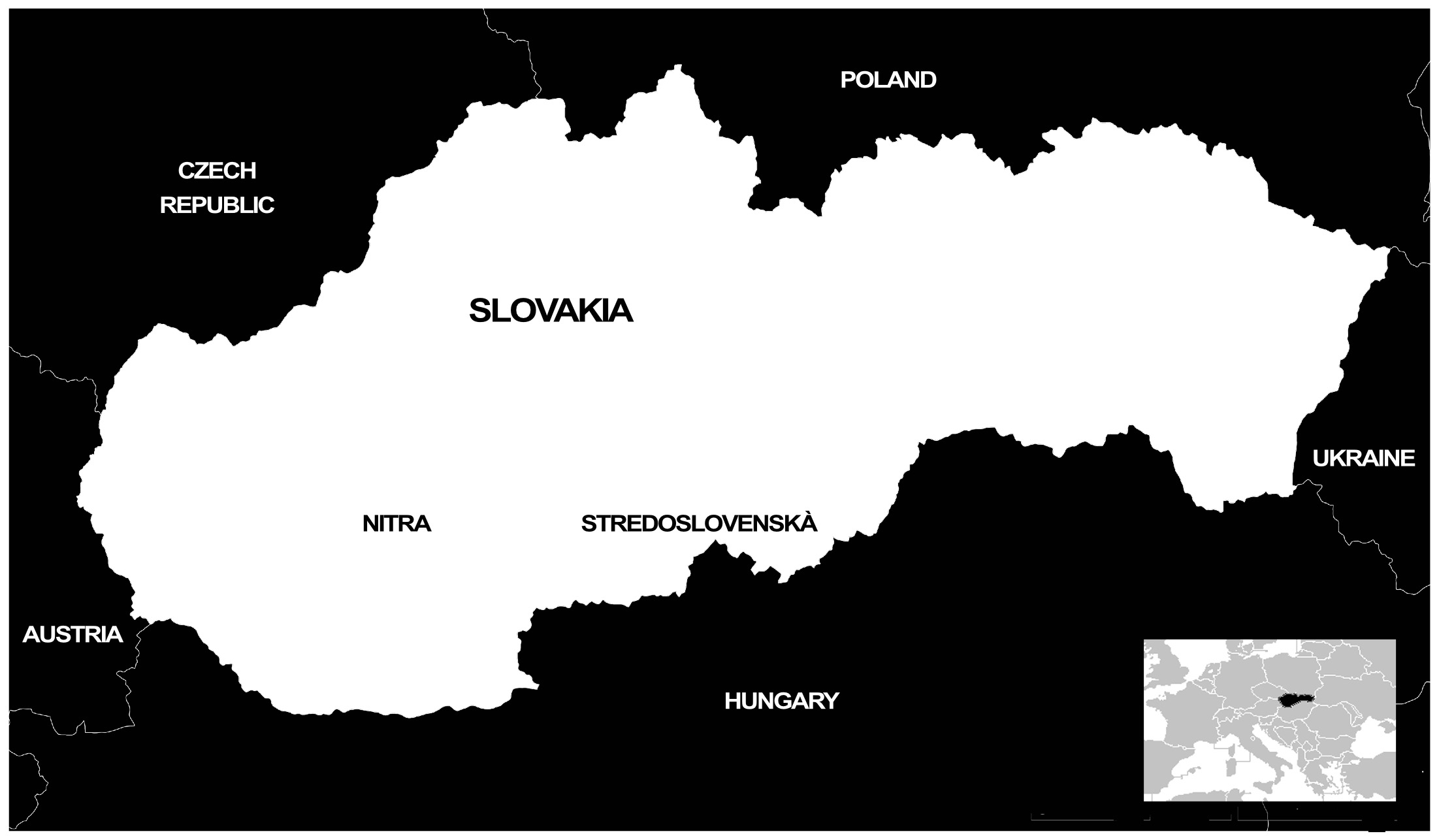
PRODUCERS
PIVNICA ČAJKOV
NITRA
MARVLA TINDO
NITRA
DAVID KUŠICKY
STREDO SLOVENSKAUNITED CELLARS
OF TEKOV
NITRA
REGIONS...
NITRA<TEKOVSKY<SITNO
The volcanic soils of the Tekovsky area in Slovakia are a unique and important part of the region's winemaking history and culture. These soils, formed from ancient volcanic eruptions, are rich in minerals and nutrients that contribute to the distinct character of the grapes grown in the area. The soils' fertility and mineral composition provide a favorable environment for viticulture, shaping the cultural traditions and practices associated with winemaking in the area.
The volcanic soils of Tekovsky are particularly well-suited for growing aromatic white grapes and structured red wine grapes. The soils provide these grapes with the ideal balance of nutrients, drainage, and varied exposures resulting in wines that are diverse in style, full of character and sometimes age-worthy.
The unique combination of climate and soil in the Tekovsky area creates an ideal environment for growing grapes. The continental climate, with hot days and cool nights, allows the grapes to ripen slowly and evenly, developing intense flavors and aromas. The volcanic soils, with their high mineral content, contribute to the wines' structure and complexity.
The wines from the Tekovsky area are known for their elegance, balance, and longevity. They are often described as having a mineral character, with flavors of ripe fruits, spices, and herbs.

PIVNICA ČAJKOV
WINES FROM UNDER THE SITNO VOLCANO. VULCAN WINE. DRINK LONG AND PROSPER.
OWNER AND WINEMAKER: Marek Uhnák
REGION: Slovakia, Region (Nitra), sub region Tekovský, SITNO, Village of Čajkov
The vineyards are located at foothills of southern slopes of Štiavnické Hills
TOTAL HECTARE: 5 ha
ALTITUDE OF VINEYARD(S) - 250 to 400 meters
SOILS: soft tuff - volcanic ash & hard andesite - volcanic lava, region is extremely rich in minerals (apx. 140 mineral varieties)
CULTIVATED: Pesecká Leánka, Fetească Regală, Devin, Pinot Gris, Frankovka, Alibernet
FARMING PRACTICES: Organic
TOTAL ANNUAL PRODUCTION: 20,000 bottles
WINE(S) PRODUCED: sparkling of various techniques, white wines, skin fermented white, flor affected wines and reds. Highly experimental producer.
FIRST COMMERCIAL VINTAGE: 2015
The wines of Pivnica Čajkov are a synthesis of their wildly creative maker, Marek Uhnák, his familial history and the volcanic terroir of Čajkov. They are as inventive as they are classical, as contemplative as they are chuggable, to drink spontaneously or as part of an intricate pairing. The production is based around the old Carpathian variety Pesecká Leánka. While studying wine at Oenology Secondary School in Modra & Mendel University in Brno Marek realized the mistake made in his region where historical grape varieties were replaced with popular international grape sorts. When he returned home to make wine in his familial vineyards his aim became to reverse this trend, not as a matter of taste but because of the unique suitability these localized vines have to their region. “It is not an accident that Pesecká has been so frequent in Čajkov and neighboring villages. Our parents and grandparents understood a long time ago that this wine prospers here; the underlying rock and slopes suit it and it gives good yields even in the worst years. And this is what terroir is about. I have noticed that there are at least four clones of Pesecká only in our Čajkov vineyards and each of them has slightly different characteristics and wines made from them feature different characteristics and qualities in various years. Its flesh is almost liquid with a minimum pectin content, its skin is very thin and fragile and thus it tends to break even upon very careful processing which often shows up as fine tannin in wine. But the fundamental factor is the coexistence with the tuff soil in Čajkov. Pesecká is luxuriant, easily reaches the deeper parts of the underlying rock, draws on its distinctive minerals and blends them into wine. It is able to make use of the ability of tufa to accumulate heat and use it to ripen.”
The soils are the source of the dynamic, mineral aspect all of the wines share. The multitude of volcanic soil types is the result of a large eruption that millions of years ago, reduced a 4,000 meter high mountain to just 400 meters, spreading its interior material across kilometers of land. Greater than a volcano it is a stratovolcano; and one of the largest known volcanic eruptions ever, so large, it influenced climate globally. For millennia the region has been famous for mining of gold and other precious minerals due to its unique geology.
To Merek, nothing is more important than farming. Not only does he care about how he farms, but also his neighbors and their other neighbors. He is strongly opposed to chemical herbicides, pesticides and fungicides. His perspective is that it is necessary for there to be regional movements in the direction of organic if we are to really speak about ecological health. His vineyards are spread over 10 + locations. His ideal locations are completely wild locations surrounded by nature, these he has at higher elevation. Lower vineyards are grown without treatment and he works with neighbors to eliminate chemical treatments from their cultivation practices. Marek farms plots he selects in terms of natural drainage to avoid chemicals and fertilizer runoff entering his vineyards.
“The region is like an organism, you cannot take your wines out of their context, you cannot take the heart from the body and say this is a healthy heart. You can only say this is a healthy body.”
Marek’s wine making is more a response to the variety and harvest rather than a plan to “make” a particular wine. Some of these wines are produced every vintage, others are experiments and one offs. The minerality imparted by the volcanic soils is prominent in all of the wines. It is not a static flavor; it presents itself differently in each wine depending on what the grape variety brings in terms of texture and flavor, and is key to the nuance of all of the wines. In the cellar he is avant garde. Looking into the past and into himself to create modern low intervention wines. Each is made in its own way, sometimes in stainless steel, an assortment of barrels different in size, wood type and age, varying degrees of skin contact, aging under flor. This is not chaos; the wines are vividly individual, faceted, polished and fascinating to pair with international cuisine, the more unexpected the better. The sophisticated cooking Marek does for his family and friends informs the wines he makes.


PIVNICA ČAJKOV
RED GULL #4
SPARKLING DRY RED PET-NAT
WINE MAKER: Marek Uhnák
VINTAGE: 2022
LOCATION: Nitra, Tekovský, Sitno Volcano
VINEYARD: southern part of Stará Hora (Leánka) / Sádovie (Frankovka), both in the village of Čajkov
ASPECT: South
ALTITUDE: 200m-240m
PLANTED: 2009 / 1992
SOIL COMPOSITION: Red rhyolite (crystallized magma), tuff and erosion-born topsoil
PREVAILING CLIMATE & LOCAL
CLIMACTIC: Continental climate - hot days, cold nights
FARMING: Organic
GRAPE COMPOSITION: Pesecká Leánka, Frankovka
HARVEST: by hand into small crates, Leánka was harvested at the end of August 2022, Blaufrankisch on September 2, 2022.
MACERATION: The Leánka grapes are gently destemmed, crushed and then macerated on skins for 3-5 days.
FERMENTATION: The free-run juice is then moved into stainless steel tanks (no press) and spontaneously fermented for ~2 weeks without any manipulation, in order to preserve the freshness and natural slight fizz. Fermenting must of a shortly macerated Blaufrankisch (about 20% of the blend)was added in addition to (about 2%) of Frankovka 2020, to add a bit of acidity, depth and color.
AGING: After 4 months of prise de
mousse, each bottle was gently shaken by hand in order to make the bubbles creamier and better incorporated.
FINING & FILTRATION: none
SULFUR DIOXIDE - 0/0
BOTTLES PRODUCED: 2000
WINE MAKER: Marek Uhnák
VINTAGE: 2022
LOCATION: Nitra, Tekovský, Sitno Volcano
VINEYARD: southern part of Stará Hora (Leánka) / Sádovie (Frankovka), both in the village of Čajkov
ASPECT: South
ALTITUDE: 200m-240m
PLANTED: 2009 / 1992
SOIL COMPOSITION: Red rhyolite (crystallized magma), tuff and erosion-born topsoil
PREVAILING CLIMATE & LOCAL
CLIMACTIC: Continental climate - hot days, cold nights
FARMING: Organic
GRAPE COMPOSITION: Pesecká Leánka, Frankovka
HARVEST: by hand into small crates, Leánka was harvested at the end of August 2022, Blaufrankisch on September 2, 2022.
MACERATION: The Leánka grapes are gently destemmed, crushed and then macerated on skins for 3-5 days.
FERMENTATION: The free-run juice is then moved into stainless steel tanks (no press) and spontaneously fermented for ~2 weeks without any manipulation, in order to preserve the freshness and natural slight fizz. Fermenting must of a shortly macerated Blaufrankisch (about 20% of the blend)was added in addition to (about 2%) of Frankovka 2020, to add a bit of acidity, depth and color.
AGING: After 4 months of prise de
mousse, each bottle was gently shaken by hand in order to make the bubbles creamier and better incorporated.
FINING & FILTRATION: none
SULFUR DIOXIDE - 0/0
BOTTLES PRODUCED: 2000
While Red Gull is the most whimsical of sparkling wine from Čajkov, “shiny, happy, bubbles” has all the gastronomic seriousness of its sparkling siblings. Marek gravitates towards bubbles of longer elevage. This is why most of the sparkling wines he makes are modified examples of Ca Fondo or Traditional Methode wines. It is a matter of maturity and texture. Red Gull is his Pet-Nat. An elevated example of this most primitive of styles. By combining his local Pesecká Leánka with the regal Frankovka along with a splash of barrel aged 2020 Frankovka he finds complexity in the relationship between these two disparate sorts. Not white, not red, a little floral, a little spicy vinous and fermentative but hyper fruity. It begs to be Gull(ped).


PIVNICA ČAJKOV
VULCANICA #6
SPARKLING DRY COL FONDO ROSE
WINE MAKER: Marek Uhnák
VINTAGE: NV
LOCATION: Nitra, Tekovský, Sitno Volcano
VINEYARD: southern part of Stará Hora (Leánka) / Sádovie (Frankovka), both in Čajkov
ASPECT: South
ALTITUDE: 200m-240m
PLANTED: 2009 / 1992
SOIL COMPOSITION: Red rhyolite (crystallized magma), tuff and erosion-born topsoil
PREVAILING CLIMATE & LOCAL CLIMACTIC: Continental climate - hot days, cold nights
FARMING: Organic
GRAPE COMPOSITION: 85% Pesecká Leánka, 15% Pinot Gris
HARVEST: grapes are harvested at various times in September for complexity and freshness.
MACERATION: free run juice, briefly macerated (3 days) Pesecká Leánka. Pinot Gris on skins to 5% abv then racked to barrel
FERMENTATION: Components are fermented separately.
AGING: Pesecká Leánka is a blend of 1 and 2 year old wines, Pinot Gris is aged 2 years.
FINING & FILTRATION: Unfined, unfiltered, disgorged, zero dosage.
BOTTLES PRODUCED: 4000.
WINE MAKER: Marek Uhnák
VINTAGE: NV
LOCATION: Nitra, Tekovský, Sitno Volcano
VINEYARD: southern part of Stará Hora (Leánka) / Sádovie (Frankovka), both in Čajkov
ASPECT: South
ALTITUDE: 200m-240m
PLANTED: 2009 / 1992
SOIL COMPOSITION: Red rhyolite (crystallized magma), tuff and erosion-born topsoil
PREVAILING CLIMATE & LOCAL CLIMACTIC: Continental climate - hot days, cold nights
FARMING: Organic
GRAPE COMPOSITION: 85% Pesecká Leánka, 15% Pinot Gris
HARVEST: grapes are harvested at various times in September for complexity and freshness.
MACERATION: free run juice, briefly macerated (3 days) Pesecká Leánka. Pinot Gris on skins to 5% abv then racked to barrel
FERMENTATION: Components are fermented separately.
AGING: Pesecká Leánka is a blend of 1 and 2 year old wines, Pinot Gris is aged 2 years.
FINING & FILTRATION: Unfined, unfiltered, disgorged, zero dosage.
BOTTLES PRODUCED: 4000.
Vulcanica is a clever, near perfect sparkling wine. A kaleidoscopic sparkling melange of local Pesecká Leánka, and Pinot Gris that Marek endlessly tinkers with. As the multi vintage components would indicate it expresses youth alongside maturity. In terms of acidity and alcohol, Leánka is well suited to sparkling wine, but when it is fresh it is overtly perfumy. Given time in the barrel much of the aroma dissipates. The addition of pinot gris lends structure and body. The long elevage rounds the wines and results in fine bubbles. It is a wine without direct parallel, and the signature of the cellar.


PIVNICA ČAJKOV
2023 PRINCESS
DRY WHITE WINE
WINE MAKER: Marek Uhnák
VINTAGE: 2023
LOCATION: Nitra, Tekovsky, Village Čajkov
VINEYARD: southern part of Stará Hora
ASPECT: South
ALTITUDE: 200m
PLANTED: 2009
SOIL COMPOSITION: Red rhyolite (crystallized magma), tuff and erosion-born topsoil
PREVAILING CLIMATE & LOCAL CLIMACTIC: Continental climate - hot days, cold nights
FARMING: Organic
GRAPE COMPOSITION: Pesecká Leánka
HARVEST: by hand into small crates, 2 picks August 29th, Sept. 3rd
MACERATION: The Leánka grapes are gently destemmed, crushed and then macerated on skins overnight.
FERMENTATION: stainless steel, the 2 harvest were combined at the end of fermentation. free run juice only.
AGING: on lees, never touched, bottled by hand with great care in order to preserve the original CO2 suspended February of 2024. 15ppm So2 at bottling.
FINING & FILTRATION: none
BOTTLES PRODUCED: 5,000.
WINE MAKER: Marek Uhnák
VINTAGE: 2023
LOCATION: Nitra, Tekovsky, Village Čajkov
VINEYARD: southern part of Stará Hora
ASPECT: South
ALTITUDE: 200m
PLANTED: 2009
SOIL COMPOSITION: Red rhyolite (crystallized magma), tuff and erosion-born topsoil
PREVAILING CLIMATE & LOCAL CLIMACTIC: Continental climate - hot days, cold nights
FARMING: Organic
GRAPE COMPOSITION: Pesecká Leánka
HARVEST: by hand into small crates, 2 picks August 29th, Sept. 3rd
MACERATION: The Leánka grapes are gently destemmed, crushed and then macerated on skins overnight.
FERMENTATION: stainless steel, the 2 harvest were combined at the end of fermentation. free run juice only.
AGING: on lees, never touched, bottled by hand with great care in order to preserve the original CO2 suspended February of 2024. 15ppm So2 at bottling.
FINING & FILTRATION: none
BOTTLES PRODUCED: 5,000.
FROM MAREK UHNÁK…
“Alice in Wonderland's breakfast wine. Princess in the glass, Amazon in the vineyard: Pesecká Leánka (aka Fetească regală) is the true spirit animal (grape) of our region, a delicious yet reliable companion ready to make your day brighter come rain or come shine.”

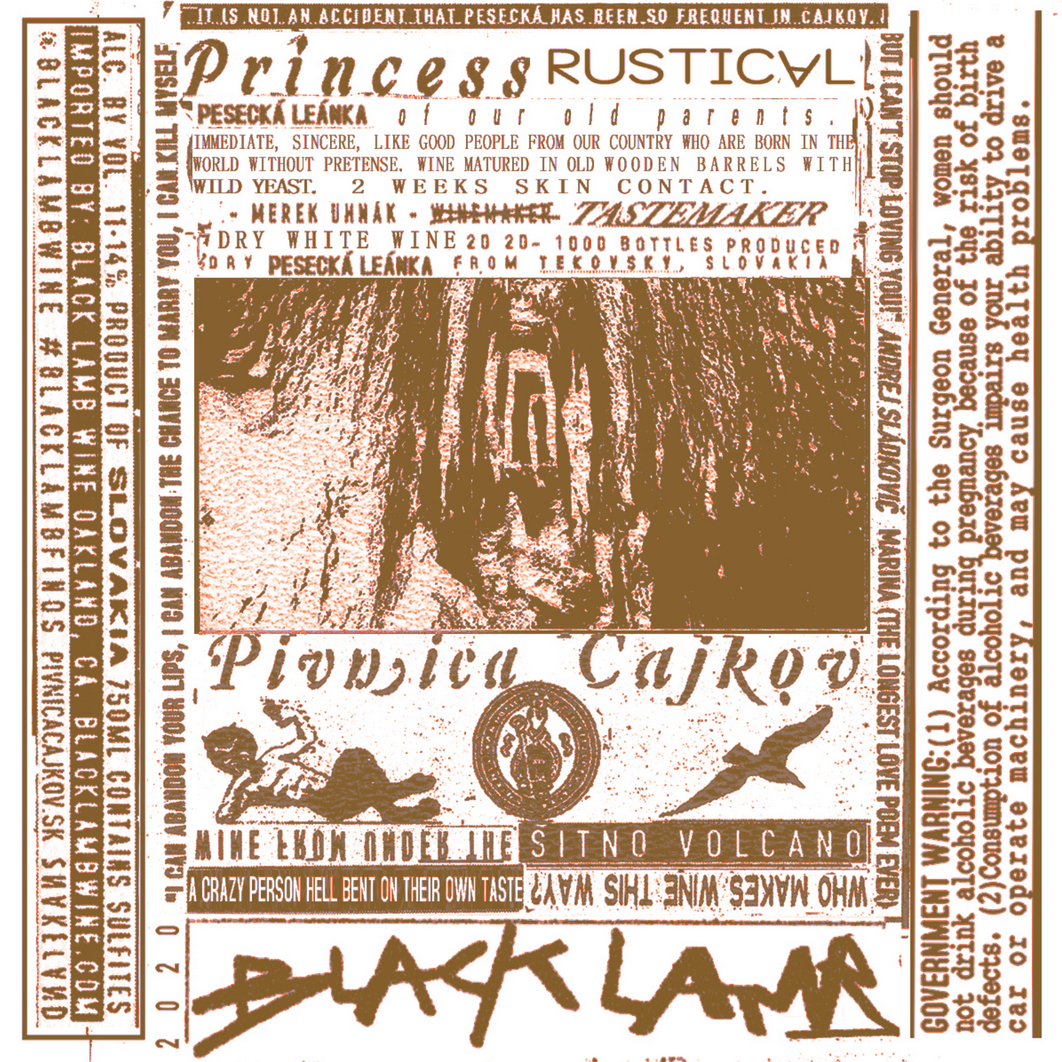
PIVNICA ČAJKOV
Princess
Rustical 2022
DRY WHITE WINE
WINE MAKER: Marek Uhnák
VINTAGE: 2022
LOCATION: Nitra, Tekovsky, SITNO, Village Čajkov
VINEYARD: Sádowie, old clones, Cyril's vineyard
ASPECT: South
ALTITUDE: 200-280m
PLANTED: 1965-1992
SOIL COMPOSITION: pyroclastic tuff with volcanic glass and ashes, very porous and well drained
PREVAILING CLIMATE & LOCAL CLIMACTIC: Continental climate - hot days, cold nights
FARMING: Organic
GRAPE COMPOSITION: Pesecká Leánka, old clones
HARVEST: by hand into small crates, Leánka was harvested at the end of September
MACERATION: 4-10 days
FERMENTATION: in stainless steel until 8% abv, then finished in used oak
AGING: used barrique for 1 year
FINING & FILTRATION: none
BOTTLES PRODUCED: 2,000
Rustical is the wine most typical of my grandparents and our region. It is what we have and will always drink. Meadow in full bloom, nutmeg, honey from forest bees – this wine is like spending a weekend at your grandparents' in the countryside. Elegant, deep, full-bodied yet with zesty stony acidity, finishing on delicate tannins, almonds and apricots. Rustic origins, aristocratic style!.
WINE MAKER: Marek Uhnák
VINTAGE: 2022
LOCATION: Nitra, Tekovsky, SITNO, Village Čajkov
VINEYARD: Sádowie, old clones, Cyril's vineyard
ASPECT: South
ALTITUDE: 200-280m
PLANTED: 1965-1992
SOIL COMPOSITION: pyroclastic tuff with volcanic glass and ashes, very porous and well drained
PREVAILING CLIMATE & LOCAL CLIMACTIC: Continental climate - hot days, cold nights
FARMING: Organic
GRAPE COMPOSITION: Pesecká Leánka, old clones
HARVEST: by hand into small crates, Leánka was harvested at the end of September
MACERATION: 4-10 days
FERMENTATION: in stainless steel until 8% abv, then finished in used oak
AGING: used barrique for 1 year
FINING & FILTRATION: none
BOTTLES PRODUCED: 2,000
Rustical is the wine most typical of my grandparents and our region. It is what we have and will always drink. Meadow in full bloom, nutmeg, honey from forest bees – this wine is like spending a weekend at your grandparents' in the countryside. Elegant, deep, full-bodied yet with zesty stony acidity, finishing on delicate tannins, almonds and apricots. Rustic origins, aristocratic style!.
FROM MAREK UHNÁK…
Rustical is the wine most typical of my grandparents and our region. It is what we have and will always drink. Meadow in full bloom, nutmeg, honey from forest bees – this wine is like spending a weekend at your grandparents' in the countryside. Elegant, deep, full-bodied yet with zesty stony acidity, finishing on delicate tannins, almonds and apricots. Rustic origins, aristocratic style!
Rustical is the wine most typical of my grandparents and our region. It is what we have and will always drink. Meadow in full bloom, nutmeg, honey from forest bees – this wine is like spending a weekend at your grandparents' in the countryside. Elegant, deep, full-bodied yet with zesty stony acidity, finishing on delicate tannins, almonds and apricots. Rustic origins, aristocratic style!


PIVNICA ČAJKOV
QUEEN MOM 2022
DRY ORANGE WINE
WINE MAKER: Marek Uhnák
VINTAGE: 2022
LOCATION: Nitra, Tekovsky, SITNO, Village Čajkov
VINEYARD: Sádowie, Betina 30+ year old vines
ASPECT: South
ALTITUDE: 200m
PLANTED: 1970-1990
SOIL COMPOSITION: pyroclastic tuff with volcanic glass and ashes, very porous and well drained
PREVAILING CLIMATE & LOCAL
CLIMACTIC: Continental climate - hot days, cold nights
FARMING: Organic
GRAPE COMPOSITION: Fetească Regală
HARVEST: by hand into small crates
MACERATION: 14 days, free run juice
FERMENTATION / AGING: 1 year in used barrels
FINING & FILTRATION: none
BOTTLES PRODUCED: 3,000.
WINE MAKER: Marek Uhnák
VINTAGE: 2022
LOCATION: Nitra, Tekovsky, SITNO, Village Čajkov
VINEYARD: Sádowie, Betina 30+ year old vines
ASPECT: South
ALTITUDE: 200m
PLANTED: 1970-1990
SOIL COMPOSITION: pyroclastic tuff with volcanic glass and ashes, very porous and well drained
PREVAILING CLIMATE & LOCAL
CLIMACTIC: Continental climate - hot days, cold nights
FARMING: Organic
GRAPE COMPOSITION: Fetească Regală
HARVEST: by hand into small crates
MACERATION: 14 days, free run juice
FERMENTATION / AGING: 1 year in used barrels
FINING & FILTRATION: none
BOTTLES PRODUCED: 3,000.
Fetească Regală is the mother grape to Pesecká Leánka. She gives a softer, spicier wine with depth where Pesecká shows levity. These are from an old vineyard that has looked after itself for much of its life. The vines are individual in their personalities and conditions and this is part of the character of the wine. The yellowest of tree fruits, pear blossom, ginger it is a wine of loveliness. Creamy and comforting with not so much as an edge. It is the Queen of any cellar.

DAVID KUŠICKÝ
![]()
2021 PET-NAT
2021 SEGGS WITH MY EGGS
2021 WELSHMAN
2022 SEROTONIN
2022 HEY MATE!
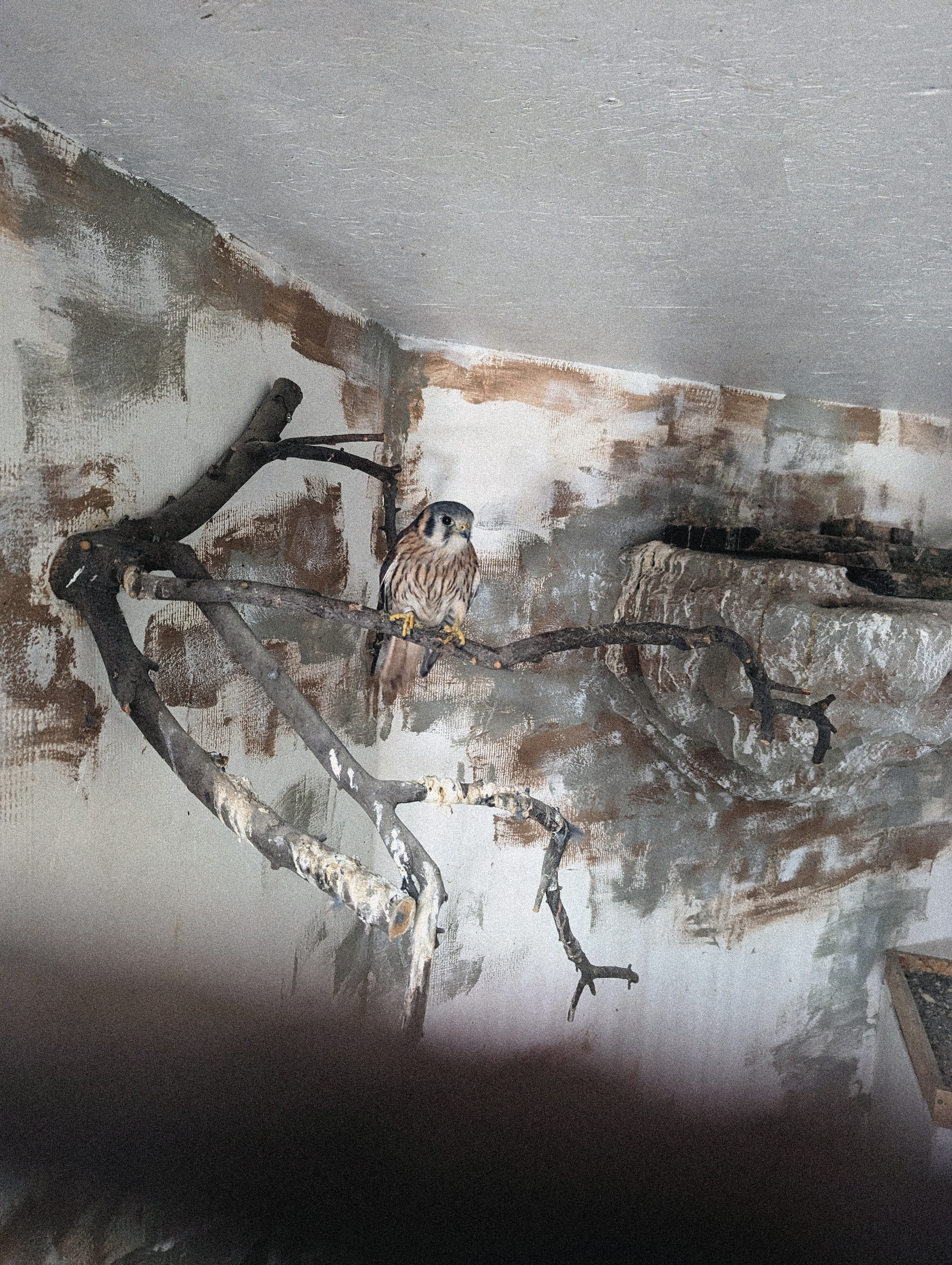
2021 PET-NAT
2021 SEGGS WITH MY EGGS
2021 WELSHMAN
2022 SEROTONIN
2022 HEY MATE!
OWNER AND WINEMAKER:
David
Kušický
REGION: VEL'KÝ KRTÍŠ, MODROKAMENSKÝ, STREDOSLOVENSKÁ, SLOVAKIA.
TOTAL HECTARE: 40ha.
ALTITUDE OF VINEYARD(S): 260m - 340m.
PREVAILING CLIMATE & LOCAL CLIMATIC:
mild climate zone with regular alternation of four seasons,average annual precipitation about 700mm/year
SOIL COMPOSITION: Volcanic Tuffs, Andesite, Basalt, Clay and Loam.
CULTIVATED: Rizling Vlašský, Sauvignon Blanc, Muscat D’Oro, Viognier, Red Traminer, Pinot Noir, Merlot.
FARMING: Organic.
WINE(S) PRODUCED: White wines, orange wines, rose, co-ferment blends, red wines, sparkling pet-nat, verjus.
TOTAL ANNUAL PRODUCTION: 15,000.
REGION: VEL'KÝ KRTÍŠ, MODROKAMENSKÝ, STREDOSLOVENSKÁ, SLOVAKIA.
TOTAL HECTARE: 40ha.
ALTITUDE OF VINEYARD(S): 260m - 340m.
PREVAILING CLIMATE & LOCAL CLIMATIC:
mild climate zone with regular alternation of four seasons,average annual precipitation about 700mm/year
SOIL COMPOSITION: Volcanic Tuffs, Andesite, Basalt, Clay and Loam.
CULTIVATED: Rizling Vlašský, Sauvignon Blanc, Muscat D’Oro, Viognier, Red Traminer, Pinot Noir, Merlot.
FARMING: Organic.
WINE(S) PRODUCED: White wines, orange wines, rose, co-ferment blends, red wines, sparkling pet-nat, verjus.
TOTAL ANNUAL PRODUCTION: 15,000.
Jan Domin, David’s grandfather established the familial estate in 2021. It is continued by Jan’s daughter Diana and her husband Tibor
Kušický, David and his sister Patíria are the new generation. The estate wines of Domin & Kušický
are classical interpretations of local and international grape sorts. David’s production is something of a winery inside of a winery and what he produces are comparatively experimental. Not just in his askewing the use of S02. The styles of production are more divergent, and he does not necessarily make the same wines twice, though certain selections such as Hey Mate!, and Serotonin do reappear.
The family’s 40 hectares of vines are within the controlled appellation of Stredoslovenská (Central Slovak), split between the districts of Vinický and Modrokamenský, The vineyard around the winery/home is Vinický (20ha) in the village of Veľký Krtíš, the other 20ha are in Modrý Kamen (5ha), Dolné Plachtince (10ha) and Vinica (5ha) in the district of Modrokamenský. Wine regions little known today, the area is old wine country and boasts the conditions and soil of much more famous regions such as Hungarian Tokaj, Somlo or even neighboring Slovakian Nitra. The cultivation has been organic since 2001. Only copper and sulfur are used in the vineyards. Weeds are managed mechanically. After cultivating organically for so many years they see that the vines have increased their natural resistances to maladies. A sizable flock of sheep assist in the weed pruning and fertilizing of the vineyards. Additionally, they maintain bee colonies and a veritable zoo’s worth of animals including emu, falcons, goats, rabbits, and more.
After interning with various natural wine makers around the world David settled back home to make wines of his own signature. His travels and immersion in a global range of wines and styles have led him in what will surely be a new direction in winemaking for his family. He also hopes to convert the vineyards completely to biodynamic. David is a talented new winemaker, with access to great resources, working in an overlooked wineland, his wines will continue to get attention and bring attention to the region of Stredoslovenská. Exuberant, fruitful, fermentive wines without the use of So2. Most are vinified in steel or sometimes concrete eggs. Never so much as a whisper of oak can be found. The extractions are decidedly soft even in his extra orange wines, lees are used smartly to protect the wine and bring character. Wild, unpretentious, low alcohol, playful wines.
The family’s 40 hectares of vines are within the controlled appellation of Stredoslovenská (Central Slovak), split between the districts of Vinický and Modrokamenský, The vineyard around the winery/home is Vinický (20ha) in the village of Veľký Krtíš, the other 20ha are in Modrý Kamen (5ha), Dolné Plachtince (10ha) and Vinica (5ha) in the district of Modrokamenský. Wine regions little known today, the area is old wine country and boasts the conditions and soil of much more famous regions such as Hungarian Tokaj, Somlo or even neighboring Slovakian Nitra. The cultivation has been organic since 2001. Only copper and sulfur are used in the vineyards. Weeds are managed mechanically. After cultivating organically for so many years they see that the vines have increased their natural resistances to maladies. A sizable flock of sheep assist in the weed pruning and fertilizing of the vineyards. Additionally, they maintain bee colonies and a veritable zoo’s worth of animals including emu, falcons, goats, rabbits, and more.
After interning with various natural wine makers around the world David settled back home to make wines of his own signature. His travels and immersion in a global range of wines and styles have led him in what will surely be a new direction in winemaking for his family. He also hopes to convert the vineyards completely to biodynamic. David is a talented new winemaker, with access to great resources, working in an overlooked wineland, his wines will continue to get attention and bring attention to the region of Stredoslovenská. Exuberant, fruitful, fermentive wines without the use of So2. Most are vinified in steel or sometimes concrete eggs. Never so much as a whisper of oak can be found. The extractions are decidedly soft even in his extra orange wines, lees are used smartly to protect the wine and bring character. Wild, unpretentious, low alcohol, playful wines.


KUŠICKÝ
2022 HEY MATE!
STYLE: DRY RED WINE
WINE MAKER: David Kušický.
VINTAGE: 2022.
REGION, SUB-REGION & VILLAGE: Stredoslovenská, Veľký Krtíš.
VINEYARD(S): Viničky 2ha.
ALTITUDE: 260-340.
SOIL COMPOSITION: Clay/Loam Andesite Substrate.
PREVAILING CLIMATE & LOCAL CLIMACTIC: mild climate zone with regular alternation of four seasons,average annual precipitation about 700mm/year.
FARMING OF VINEYARD: Organic.
COMPOSITION: Pinot Noir.
HARVEST: 28th of September.
PRESSING: Pneumatic.
MACERATION: Semi carbonic.
FERMENTATION/AGING: INOX.
FINING & FILTRATION METHODS: None.
DATE OF BOTTLING: May 2023.
SULFITES: None added.
BOTTLES PRODUCED: 2000.
WINE MAKER: David Kušický.
VINTAGE: 2022.
REGION, SUB-REGION & VILLAGE: Stredoslovenská, Veľký Krtíš.
VINEYARD(S): Viničky 2ha.
ALTITUDE: 260-340.
SOIL COMPOSITION: Clay/Loam Andesite Substrate.
PREVAILING CLIMATE & LOCAL CLIMACTIC: mild climate zone with regular alternation of four seasons,average annual precipitation about 700mm/year.
FARMING OF VINEYARD: Organic.
COMPOSITION: Pinot Noir.
HARVEST: 28th of September.
PRESSING: Pneumatic.
MACERATION: Semi carbonic.
FERMENTATION/AGING: INOX.
FINING & FILTRATION METHODS: None.
DATE OF BOTTLING: May 2023.
SULFITES: None added.
BOTTLES PRODUCED: 2000.
Hey Mate! is an homage to David's Australian internship at ‘Commune of Buttons’ where he learned the secrets of semi carbonic Pinot Noir. His is rather quintessential in its own right. Bright, grapey, yeasty, but also varietal, it handles a chill and unfurls as it is aired and warmed. What is initially primary and simple, suddenly becomes more, and this continues until the bottle is empty. Bottled with a crown cap it is a still wine that sometimes picks up just a prickle of fizz.


KUŠICKÝ
2022 SEROTONIN
STYLE: DRY ORANGE WINE
WINE MAKER: David Kušický.
VINTAGE: 2022.
REGION, SUB-REGION & VILLAGE: Stredoslovenská, Veľký Krtíš. VINEYARD(S): Viničky 2ha.
ALTITUDE: 260-340.
SOIL COMPOSITION: Volcanic Soil, Tuffs, Andesite, Basalt.
PREVAILING CLIMATE & LOCAL CLIMACTIC: mild climate zone with regular alternation of four seasons,average annual precipitation about 700mm/year.
FARMING OF VINEYARD: Organic.
COMPOSITION: Muscat d’Oro, Golden Muscat.
HARVEST: 28th of September.
PRESSING: Pneumatic.
MACERATION: 20 Days with skins, no stems.
FERMENTATION/AGING: INOX.
FINING & FILTRATION METHODS: None.
DATE OF BOTTLING: May, 2023.
SULFITES: None added.
BOTTLES PRODUCED: 1600.
WINE MAKER: David Kušický.
VINTAGE: 2022.
REGION, SUB-REGION & VILLAGE: Stredoslovenská, Veľký Krtíš. VINEYARD(S): Viničky 2ha.
ALTITUDE: 260-340.
SOIL COMPOSITION: Volcanic Soil, Tuffs, Andesite, Basalt.
PREVAILING CLIMATE & LOCAL CLIMACTIC: mild climate zone with regular alternation of four seasons,average annual precipitation about 700mm/year.
FARMING OF VINEYARD: Organic.
COMPOSITION: Muscat d’Oro, Golden Muscat.
HARVEST: 28th of September.
PRESSING: Pneumatic.
MACERATION: 20 Days with skins, no stems.
FERMENTATION/AGING: INOX.
FINING & FILTRATION METHODS: None.
DATE OF BOTTLING: May, 2023.
SULFITES: None added.
BOTTLES PRODUCED: 1600.
Muscat d’Oro is a cross between Muscat Hamburg and Diamond. It was first cultivated in the US in 1915. Diamond is a vitis labrusca cross and so Golden Muscat is not purely vinifera. It’s a crazy wine made from a crazy grape. Fermented with the skins for 20 days the wine is strongly aromatic and bright orange in color, but because the skin of the grapes are so thin, it is not tannic. Instead it feels gently pulpy, the flavors are pure citrus and flowers, light and dry it is salty on the finish. From David, “If you taste it, your happiness hormones will be the highest on the happiness scale for at least 1 year.” Bottled with a crown cap it is a still wine that sometimes picks up just a prickle of fizz.

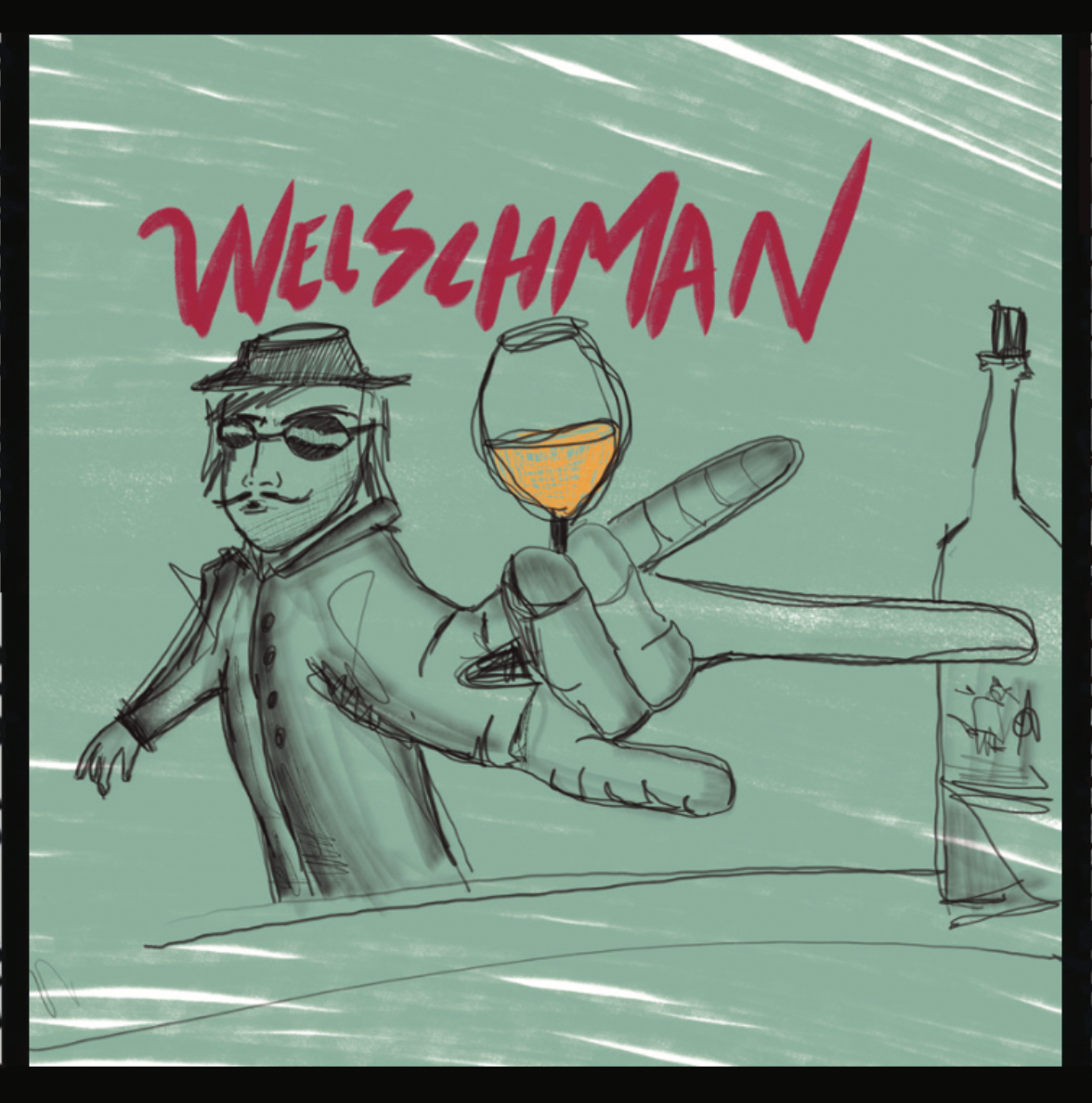
KUŠICKÝ
2021 WELSHMAN
STYLE: DRY WHITE WINE
VINTAGE: 2021.
REGION, SUB-REGION & VILLAGE: Stredoslovenská, Veľký Krtíš.
VINEYARD(S): Viničky 1ha.
ALTITUDE: 300.
SOIL COMPOSITION: Volcanic Soil, Andesite, Basalt.
PREVAILING CLIMATE & LOCAL CLIMACTIC: Mild climate zone with regular alternation of four seasons,average annual precipitation about 700mm/year.
FARMING OF VINEYARD: Organic.
COMPOSITION: Rizling Vlašský (welschriesling).
HARVEST: September 27th.
MACERATION: destemmed, 3 days on the skins, press, put to the inox.
FERMENTATION/AGING: 1 year in inox on the lees.
FINING & FILTRATION METHODS: none.
DATE OF BOTTLING: June, 2022.
SULFITES: none added.
BOTTLES PRODUCED: 2300.
VINTAGE: 2021.
REGION, SUB-REGION & VILLAGE: Stredoslovenská, Veľký Krtíš.
VINEYARD(S): Viničky 1ha.
ALTITUDE: 300.
SOIL COMPOSITION: Volcanic Soil, Andesite, Basalt.
PREVAILING CLIMATE & LOCAL CLIMACTIC: Mild climate zone with regular alternation of four seasons,average annual precipitation about 700mm/year.
FARMING OF VINEYARD: Organic.
COMPOSITION: Rizling Vlašský (welschriesling).
HARVEST: September 27th.
MACERATION: destemmed, 3 days on the skins, press, put to the inox.
FERMENTATION/AGING: 1 year in inox on the lees.
FINING & FILTRATION METHODS: none.
DATE OF BOTTLING: June, 2022.
SULFITES: none added.
BOTTLES PRODUCED: 2300.
Rizling Vlašský (Welschriesling) is more at home in volcanic soil than anywhere else. Its inherently neutral character allows the face of the land to dominate. David’s is a wine of similar function to French Muscadet. Saline, more mineral than fruit but with a lemony spine and low strength that lends this landlocked wine to seafood (we try to avoid landlocked wine with seafood unless it is completely necessary, as it is here). It is the least exciting of David’s wines and we love it for that. Unadorned, uninterpreted it is simply what it is and perfect for it. Bottled with a crown cap it is a still wine that sometimes picks up just a prickle of fizz.

UNITED CELLARS OF TEKOV
- CULTURE - COMMUNITY - ENVIRONMENTAL STEWARDSHIP
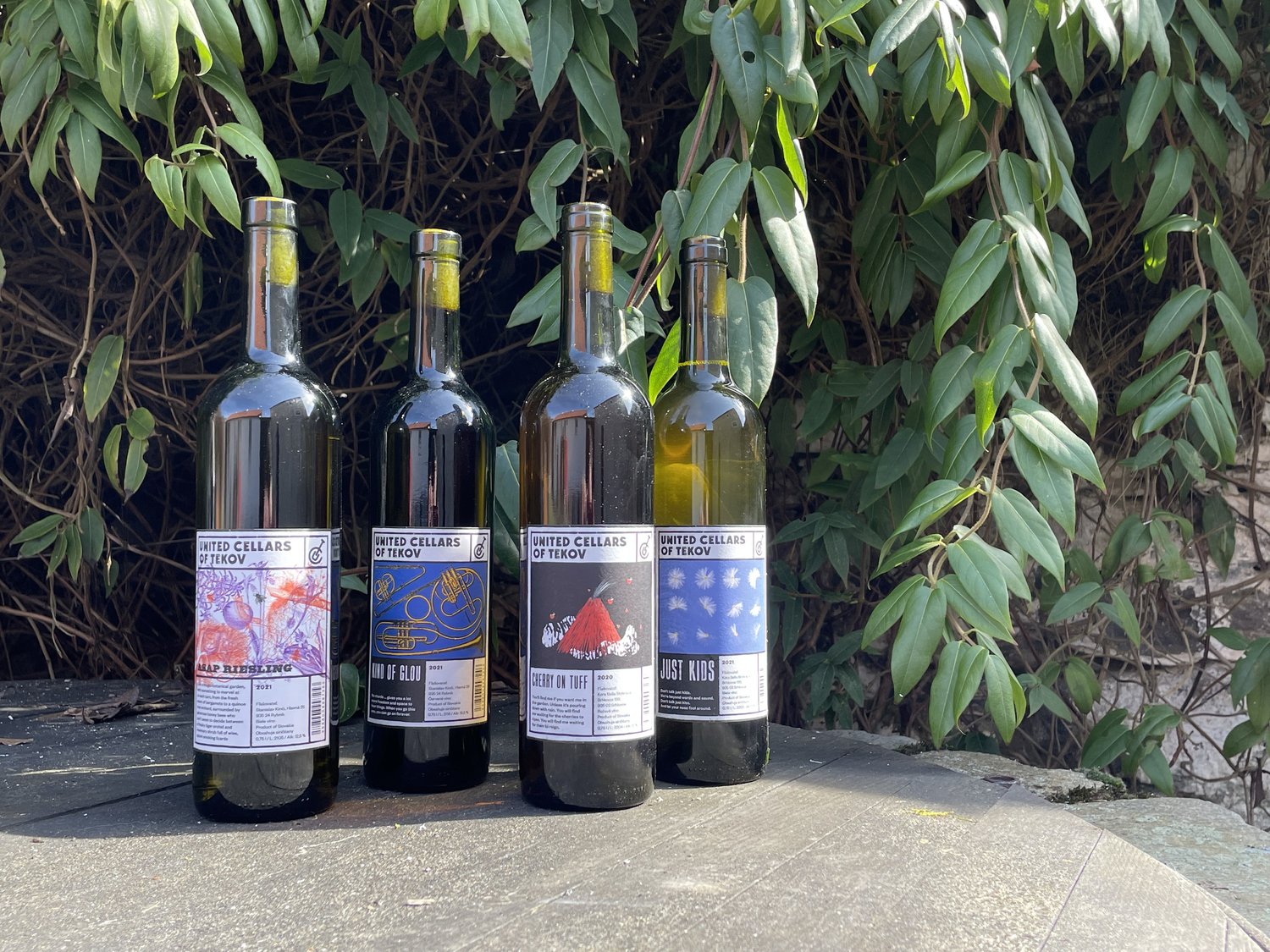
ASAP RIESLING
JUST FOR KIDS
CHERRY ON TUFF
KIND OF GLOU
--------------------------------------------
OWNERS / WINEMAKERS: Marek Uhnák (Pivnica Cajkov) and Ján Záborský (Pivnica Brhlovce)
REGION: Slovakia, Region (Nitra), sub region Tekovský, Village of Čajkov
VINEYARDS: The vineyards are located on the southern slopes of Štiavnické foothills
ALTITUDE OF VINEYARD(S) - 250 to 400 meters
SOILS: Mixed Volcanic soils including but not limited to...soft tuff - volcanic ash & hard andesite, entire region is extremely rich in minerals (apx. 140 mineral varieties)
FARMING PRACTICES: Organic
WINES PRODUCED: Dry table wines, skin macerated whites, rose and reds.
FIRST COMMERCIAL VINTAGE: 2021
-------------------------------------------
UNITED CELLARS OF TEKOV is a collaborative enterprise between local TEKOV vine growers and life long TEKOVSKY vulcans and wine makers Marek Uhnák (Pivnica Cajkov) and Ján Záborský (Pivnica Brhlovce). Those involved share a common perspective, that what somebody does on their soil has an impact on the neighboring soil, either positive or negative. The goal of UNITED CELLARS OF TEKOV is to bring the vineyards across the TEKOV region into positive harmony with nature. This is the beginning…
“The region is like an organism, you cannot take your wines out of their context, you cannot take the heart from the body and say this is a healthy heart. You can only say this is a healthy body.” – Marek Uhnák, Pivnica Čajkov + UNITED CELLARS OF TEKOV
Vineyard ownership in TEKOV is highly parcelated due to the post socialist re-privatization of vineyards to local families and all entitled family members. Naturally, some recipients cherish their land, some ignore it, and some farm as they have been taught, dependent on synthetic treatments. This reality does not sit well with Marek and Ján as their own vineyards are small parcels. Recognizing that they cannot control their neighbors' farming practices they had an idea. “What if we can convince our neighbors to convert to organic by offering them support and serving as the outlet for the wines?” UNITED CELLARS OF TEKOV is the fruit of this idea.
Each UNITED CELLARS OF TEKOV wine is its own expression of land, varieties and people. What grape varieties a grower tends are not of concern to Marek and Ján. What is important is the quality of the ingredients. The requirement is organic farming, certified, or in conversion. If the grower has space to make the wine then their cellar is utilized. If space is does not allow, there is a local cellar Marek and Ján can utilize. In both situations they conceive their recipes as the grapes are harvested. These wines are produced to be enjoyed, while some may mature handsomely, the hope is to encourage even more growers to join UNITED CELLARS OF TEKOV so drink, share, repeat!


UNITED CELLARS OF TEKOV
ASAP RIESLING
DRY WHITE WINE
GROWER: Stano Kinči, Rybník
WINE MAKER: Marek Uhnák
VINTAGE: 2022
LOCATION: Nitra, Tekovsky, Village Čajkov
VINEYARD: Vineyard Stará Hora, 2 ha Rhyolite and tuff
ASPECT: South East
ALTITUDE: 200M
SOIL COMPOSITION: Red rhyolite (crystallized magma), tuff and erosion-born topsoil
PREVAILING CLIMATE & LOCAL CLIMACTIC: Continental climate - hot days, cold nights
FARMING: Organic, awaiting certification
GRAPE COMPOSITION: Riesling / Noria
HARVEST: Manual harvest in 20kg crates
MACERATION: Destemmed and crushed, 3 days of skin-maceration.
FERMENTATION: Stainless steel, spontaneous fermentation, racked and rested on fine lees for 7 months with several batonnage.
BOTTLED: MAY, 2023
FINING & FILTRATION: none
BOTTLES PRODUCED: 3,000
ALCOHOL: 12.5%

FROM MAREK UHNÁK…
Skin-contact white Like a magic botanical garden with something to marvel at at each turn, from the fresh scent of bergamots to a quince tree orchard, surrounded by generous honey bees who can‘t seem to decide between a freaky tiger orchid and rosemary shrub full of wise, opium smoking lizards. Table herbs, yellow fruit and smoke. Enticingly aromatic skin-contact white with lovely acidity and salty finish. Almost too easy to drink. Herb-crusted chicken. White fish with beurre blanc. Ceviche. Asian cuisine with mild to moderately spicy profile. Lightly smoked cheese. Hell, this wine works with everything! Label art: Klára Zápotocká, Deset Deka Design, Prague

UNITED CELLARS OF TEKOV
JUST KIDS
DRY WHITE WINE
GROWER: PD Žemberovce & Stano Kinči
WINE MAKER: Marek Uhnák
VINTAGE: 2022
LOCATION: Nitra, Tekovsky, SITNO, Village Čajkov
VINEYARD: Vineyard Brhlovce, Nad Kulhánim 1.5 ha Tuff Stará Hora, Rybník 2 ha
ASPECT: South East
ALTITUDE: 250m
SOIL COMPOSITION: Red rhyolite (crystallized magma), tuff and erosion-born topsoil
PREVAILING CLIMATE & LOCAL CLIMACTIC: Continental climate - hot days, cold nights
FARMING: Organic, awaiting certification
GRAPE COMPOSITION: Muscat Ottonel / Yellow Muscat
HARVEST: first week of September, Manual harvest in 20kg crates. Table sorted.
MACERATION: The two parts were vinified separately. Both destemmed and crushed, 3–4 days of skin-maceration.
FERMENTATION: Spontaneous
AGING: racked and rested in stainless steel.
BOTTLED: blended & bottled in summer 2023
FINING & FILTRATION: none
BOTTLES PRODUCED: 3,000
ALCOHOL: 12%
FROM MAREK UHNÁK…
“We were walking toward the fountain, the epicenter of activity, when an older couple stopped and openly observed us. Robert enjoyed being noticed, and he affectionately squeezed my hand. "Oh, take their picture," said the woman to her bemused husband, "I think they're artists." "Oh, go on," he shrugged. "They're just kids.” - Patti Smith,
Skin maceration tames the fragrant Ottonel beast and reveals its surprisingly delicate deeper structure and cheeky playfulness, especially when complemented by Yellow Muscat's brisk acidity. Aromatic (exotic fruit, acacia and lemongrass), yet wonderfully light and easy to drink. Asian dishes, not too spicy. A colorful cheese platter. Lemon-basil chicken. White fish with light citrusy sauces. Mint, zucchini, lemon and chili pasta. Notes and Label art: Katarína Rybnická, Katkat, Košice

UNITED CELLARS OF TEKOV
CHERRY ON TUFF
DRY ROSE WINE
GROWER: Stano Kinči
WINE MAKER: Marek Uhnák
VINTAGE: 2022
LOCATION: Nitra, Tekovsky, SITNO Village Čajkov
VINEYARD: Vineyard Stará Hora, 2 ha
ASPECT: South East
ALTITUDE: 250m
SOIL COMPOSITION: Red rhyolite (crystallized magma), tuff and erosion-born topsoil
PREVAILING CLIMATE & LOCAL CLIMACTIC: Continental climate - hot days, cold nights
FARMING: Organic, awaiting certification
GRAPE COMPOSITION: Cabernet Sauvignon
HARVEST: Manual harvest in 20kg crates, table sorted
MACERATION: Destemmed and crushed, 3 days of skin-maceration.
FERMENTATION: Stainless steel, spontaneous fermentation
AGING: Racked and rested on fine lees until MAY
FINING & FILTRATION: none
BOTTLED: May 2023
BOTTLES PRODUCED: 3,000
ALCOHOL: 12%
You’ll find me if you want me in the garden. Unless it’s pouring down with rain. You will find me waiting for the cherries to ripen. You will find me waiting for them to reign. beginning of September 2022 Destemmed and crushed, 3 days of skin-maceration. Spontaneous fermentation in stainless steel, on lees until January, racked and rested until bottling in May 2023. Table Short, gentle maceration captures the energy and tanginess of the volcanic soil it grew on. Lush, playful rosé with plenty of grapefruit & forest fruit notes, refreshing, crowd pleasing and smooth with its “strawberries & cream” mouthfeel. Aperitivo. Mediterranean dishes of all sorts– cold Minestrone soup, mezze starters, grilled prawns, chicken or vegetable skewers. Fresh colorful salads and veg dishes, light fruity desserts (not too sweet). Notes, Label art: Katarína Rybnická, Katkat, Košice

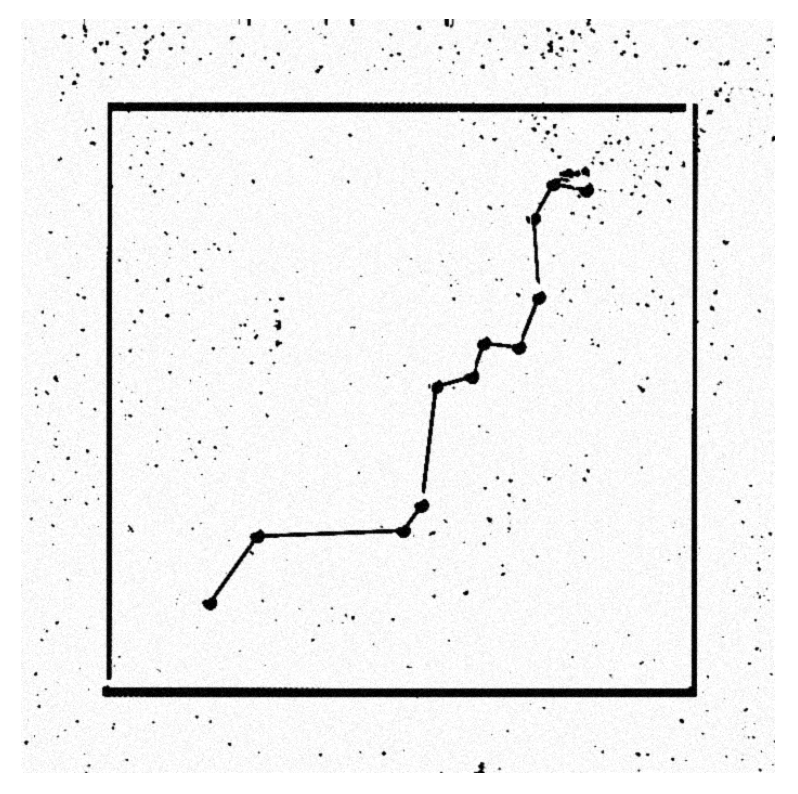
KABAJ
2021 HYDRA
sparkling orange pet-nat.
VINTAGE: 2021
REGION: Slovenia, Goriška Brda, Šlovrenc.
VINEYARD(S): Pod Hiso, Dobrovo, Ravan.
ALTITUDE: 300 -700m.
SOIL COMPOSITION: Argile, Marl, Flysh.
PREVAILING CLIMATE & LOCAL
CLIMACTIC: Converging Mediterranean and Alpine climate.
FARMING OF VINEYARD: Low/no till, ecological treatments, manure.
COMPOSITION: Malvazija 34%, Rebula 33%, Zeleni Sauvignon 33%.
HARVEST: Mid September.
MACERATION: Co-fermentation of sorts, each variety added as it is harvested, first Zeleni Sauvignon, Malvazija and then Rebula.
FERMENTATION/AGING: Spontaneous fermentation in stainless steel.
FINING & FILTRATION METHODS: none.
DATE OF BOTTLING: Oct. 15th.
So2: None.
BOTTLES PRODUCED: 6,000.
REGION: Slovenia, Goriška Brda, Šlovrenc.
VINEYARD(S): Pod Hiso, Dobrovo, Ravan.
ALTITUDE: 300 -700m.
SOIL COMPOSITION: Argile, Marl, Flysh.
PREVAILING CLIMATE & LOCAL
CLIMACTIC: Converging Mediterranean and Alpine climate.
FARMING OF VINEYARD: Low/no till, ecological treatments, manure.
COMPOSITION: Malvazija 34%, Rebula 33%, Zeleni Sauvignon 33%.
HARVEST: Mid September.
MACERATION: Co-fermentation of sorts, each variety added as it is harvested, first Zeleni Sauvignon, Malvazija and then Rebula.
FERMENTATION/AGING: Spontaneous fermentation in stainless steel.
FINING & FILTRATION METHODS: none.
DATE OF BOTTLING: Oct. 15th.
So2: None.
BOTTLES PRODUCED: 6,000.
It is fantastic to have the pet-nats among the KABAJ selection. They are a window onto the harvest, the unadorned fermented juice of their vineyards, proof of the deliciousness of their grapes at harvest. For years Jean Michel Morel would try any pet-nat that he encountered. Despite not finding many he liked he kept trying them. During a winter visit he unexpectedly presented us with a pet-nat of his own. It was delicious and not at all like an experiment. Hydra is a skin fermented petillant nature made predominantly of Malvazija with smaller proportions of Sauvignonasse and Pinot Blanc. The fruit comes from the vineyard that normally goes into Amfora, KABAJ Kvevri fermented amber wine. FROM THE PRODUCER: Most white grapes in our region are processed into “Fresh Wine”. Light, pale wine that is fruity and uniform. This type of winemaking is dependent on refrigeration and additives to protect against oxidation. This is not our style of wine or wine making. Pet-nat is a style of production that allows us to make a fresh wine without the fresh wine technology. Not all grapes can be Pet-Nat. Pet-Nat must be made from one fermentation and must finish fermentation in the bottle and be sold with the lees. Otherwise it is not pet-nat it is something else. Made without sulfur or filtration the lees and Co2 protect the wine from oxidation. Decision for the blend was made at harvest. Malvazija and Zeleni go well together and Rebula gives acidity. Acidity is important to pet nat, giving balance and stability.

VINTAGE: 2021
REGION: Slovenia, Goriška Brda, Šlovrenc.
VINEYARD(S): Pod Brce.
ALTITUDE: 300m.
SOIL COMPOSITION: Argile, Marl, Flysh.
PREVAILING CLIMATE & LOCAL CLIMACTIC: Converging Mediterranean and Alpine climate.
FARMING OF VINEYARD: Low/no till, ecological treatments, manure.
COMPOSITION: Pinot Noir.
HARVEST: End of September.
MACERATION: 2 days on the skins destemmed fruit.
FERMENTATION/AGING: Spontaneous fermentation in stainless steel.
FINING & FILTRATION METHODS: None.
So2: None.
DATE OF BOTTLING: Oct. 15th.
BOTTLES PRODUCED: 6,000.
REGION: Slovenia, Goriška Brda, Šlovrenc.
VINEYARD(S): Pod Brce.
ALTITUDE: 300m.
SOIL COMPOSITION: Argile, Marl, Flysh.
PREVAILING CLIMATE & LOCAL CLIMACTIC: Converging Mediterranean and Alpine climate.
FARMING OF VINEYARD: Low/no till, ecological treatments, manure.
COMPOSITION: Pinot Noir.
HARVEST: End of September.
MACERATION: 2 days on the skins destemmed fruit.
FERMENTATION/AGING: Spontaneous fermentation in stainless steel.
FINING & FILTRATION METHODS: None.
So2: None.
DATE OF BOTTLING: Oct. 15th.
BOTTLES PRODUCED: 6,000.
An elite example of sparkling wine that finds its greatest function during the day. Corvus is a rose petillant nature or pet-nat. The fruit comes from a vineyard walking distance from the cellar, the family leases it from an artist friend and farms it. Fresh and fruity, cherry dominant, with a vinous pithy bite that gives it a depth uncommon of the style. Frothy and long on the pallet. An excellent sparkling wine for savory brunch dishes, creamy cheeses, not too sweet desserts or as an aperitif. FROM THE PRODUCER: Pinot Noir is a perfect variety for sparkling wine. The grapes must be perfect, because you don't have many choices to respond to the wine once it starts. In 2021 we pressed the grapes the day after they were destemmed. The pet nat is technical wine. It's a lot of work. Because you are bottling live wine you must find some way to clean the juice. We do this by racking. It's a crazy amount of work when everything else in the cellar is fermenting. Everything is planned on the fly when the grapes arrive at the cellar. We have to be ready with everything well before the harvest. We have to be prepared to make the wine at our busiest moment of harvest when everything is fermenting and needing punching down. Bottles and space have to be available the moment the wine is ready. You have to decide when the grapes come in what you will do with them. Harvest is magic, sometimes maybe I have ten tons of some grape and I don't have anything big enough to put it all in. I must do something. To do whatever I want I would need a system 3 times bigger. You don't control pet nat, pet-nat control you.

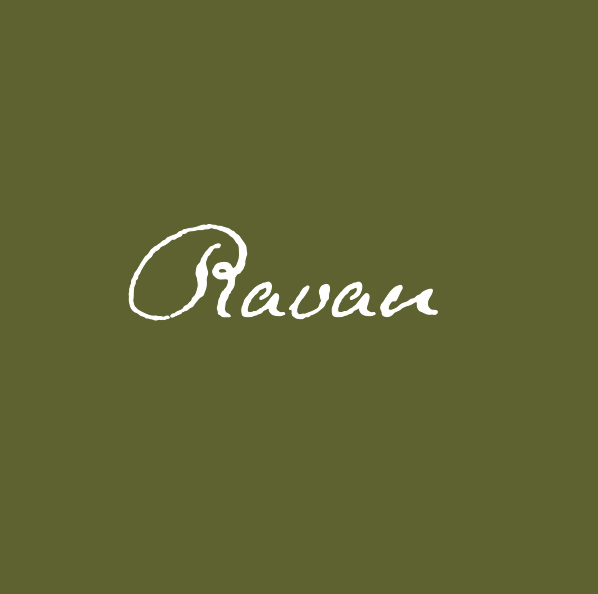
KABAJ
2018 RAVAN
dry orange wine.VINTAGE: 2018
REGION, SUB-REGION & VILLAGE: Goriška Brda, Šlovrenc - Slovenia.
VINEYARD(S): Ravan, Jez, Corno.
ALTITUDE: 200m - 400m
SOIL COMPOSITION: Marl, Flysh.
PREVAILING CLIMATE & LOCAL CLIMACTIC: Converging Mediterranean and Alpine climate.
FARMING OF VINEYARD: Low/no till, ecological treatments, manure.
COMPOSITION: Zeleni Sauvignon.
HARVEST: Early September.
MACERATION: 10 days on the skins, destemmed fruit.
FERMENTATION: Spontaneous fermentation is stainless steel.
AGING: 2 years on the fine lees in used French barrique.
FINING & FILTRATION METHODS: None.
DATE OF BOTTLING: Oct. 15th.
BOTTLES PRODUCED: 8,000.
REGION, SUB-REGION & VILLAGE: Goriška Brda, Šlovrenc - Slovenia.
VINEYARD(S): Ravan, Jez, Corno.
ALTITUDE: 200m - 400m
SOIL COMPOSITION: Marl, Flysh.
PREVAILING CLIMATE & LOCAL CLIMACTIC: Converging Mediterranean and Alpine climate.
FARMING OF VINEYARD: Low/no till, ecological treatments, manure.
COMPOSITION: Zeleni Sauvignon.
HARVEST: Early September.
MACERATION: 10 days on the skins, destemmed fruit.
FERMENTATION: Spontaneous fermentation is stainless steel.
AGING: 2 years on the fine lees in used French barrique.
FINING & FILTRATION METHODS: None.
DATE OF BOTTLING: Oct. 15th.
BOTTLES PRODUCED: 8,000.
This is the only wine that KABAJ makes that includes fruit from a plot of 50 year old vines planted in Italy that give the wine its depth."Sexy skin" is what Jean-Michel calls Zeleni Sauvignon due to its especially soft skins. The grape is prone to botrytis. Some amount which often makes its way into the wine. The easiest of the Kabaj wines Ravan is often mistook as a white wine despite fermenting with the skins for more than a week. At harvest the grape is green and it retains a bit of this color even through bottling. The flavor are herbal, citric, a bit spicy. The texture is almost glossy. As with all the Kabaj wines (except the sparkling wines) it is better to drink it at room temperature, yes room temperature, than refrigerated. It is a perfect wine with Spring and Summer flavors.
FROM THE WINEMAKER: First we harvest Jez, then Ravan, these ferment together. Corno is kept separate and is the source of depth and power for the wine. While often we do not press grapes, we press Zeleni because we want whatever tannins we can get. The grape is old and has almost as much importance to our region and home as Rebula . It is in the same family as Sauvignon, Most probably it came from what is today Italy. In Slovenia there is a lot of Zeleni. It gives a lot of quantity. When you pay someone 50 cents per kilo regardless of quality what will they grow? When high yields are restricted the fruit is more expressive. It grows well in flat places because it does not need so much exposure, this allows us to still make something special even from our lowing lying positions. It is a delicate variety and often develops a little botrytis.
FROM THE WINEMAKER: First we harvest Jez, then Ravan, these ferment together. Corno is kept separate and is the source of depth and power for the wine. While often we do not press grapes, we press Zeleni because we want whatever tannins we can get. The grape is old and has almost as much importance to our region and home as Rebula . It is in the same family as Sauvignon, Most probably it came from what is today Italy. In Slovenia there is a lot of Zeleni. It gives a lot of quantity. When you pay someone 50 cents per kilo regardless of quality what will they grow? When high yields are restricted the fruit is more expressive. It grows well in flat places because it does not need so much exposure, this allows us to still make something special even from our lowing lying positions. It is a delicate variety and often develops a little botrytis.


KABAJ
2018 BELI PINOT
DRY ORANGE WINE.VINTAGE: 2018
REGION: Slovenia, Goriška Brda, Šlovrenc.
VINEYARD(S): Belo Vhr, Ravan
ALTITUDE: 200m - 400m
SOIL COMPOSITION: Marl, Flysh, Argile.
PREVAILING CLIMATE & LOCAL CLIMACTIC: Converging Mediterranean and Alpine climate.
FARMING OF VINEYARD: Low/no till, ecological treatments, manure.
COMPOSITION: Beli Pinot (Pinot Blanc).
HARVEST: Early September.
MACERATION: 1 week 100% of the skins, 3 months 30% of the skins, destemmed fruit.
FERMENTATION: Spontaneous fermentation in stainless steel.
AGING: 2 years on the fine lees in used French barrique.
FINING & FILTRATION METHODS: None.
DATE OF BOTTLING: March, 2022.
BOTTLES PRODUCED: 4,000.
REGION: Slovenia, Goriška Brda, Šlovrenc.
VINEYARD(S): Belo Vhr, Ravan
ALTITUDE: 200m - 400m
SOIL COMPOSITION: Marl, Flysh, Argile.
PREVAILING CLIMATE & LOCAL CLIMACTIC: Converging Mediterranean and Alpine climate.
FARMING OF VINEYARD: Low/no till, ecological treatments, manure.
COMPOSITION: Beli Pinot (Pinot Blanc).
HARVEST: Early September.
MACERATION: 1 week 100% of the skins, 3 months 30% of the skins, destemmed fruit.
FERMENTATION: Spontaneous fermentation in stainless steel.
AGING: 2 years on the fine lees in used French barrique.
FINING & FILTRATION METHODS: None.
DATE OF BOTTLING: March, 2022.
BOTTLES PRODUCED: 4,000.
Beli Pinot is our house Chardonnay. Perhaps not actually Chardonnay it does for us what we would expect from fine Burgundy. Soil forward with notes of fresh baked bread, the flint of careful lees management and long creamy crescendo. Along with many other French Cultivars Pinot Blanc found its way to Slovenia during the Napoleonic era. It is the least aromatic of the KABAJ wines and consequently the soils are what shines most along with the grapes potential for extract. Though it is macerated for the same amount of time as other wines it tends to possess a greater tannic grip. Perfectly suited to dishes with brown butter, wildfowl and mushrooms or anything that would be tasty with Chardonnay. As with all the Kabaj wines (except the sparkling wines) it is better to drink it at room temperature, yes room temperature, than refrigerated.


KABAJ
2019 SIVI PINOT
DRY ORANGE WINE.VINTAGE: 2019
REGION: Slovenia, Goriška Brda, Šlovrenc.
VINEYARD(S): Dobrovo, Belo Konec, Jez.
ALTITUDE: 300m - 400m.
SOIL COMPOSITION: Marl, Flysh, Argile.
PREVAILING CLIMATE & LOCAL CLIMACTIC: Converging Mediterranean and Alpine climate.
FARMING OF VINEYARD: Low/no till, ecological treatments, manure.
COMPOSITION: Sivi Pinot (Pinot Gris).
HARVEST: End of September.
MACERATION: 1 week 100% of the skins, 3 months 30% of the skins, destemmed fruit.
FERMENTATION: Spontaneous fermentation in stainless steel.
AGING: 2 years on the fine lees in used French barrique.
FINING & FILTRATION METHODS: None.
DATE OF BOTTLING: March, 2022.
BOTTLES PRODUCED: 10,000.
REGION: Slovenia, Goriška Brda, Šlovrenc.
VINEYARD(S): Dobrovo, Belo Konec, Jez.
ALTITUDE: 300m - 400m.
SOIL COMPOSITION: Marl, Flysh, Argile.
PREVAILING CLIMATE & LOCAL CLIMACTIC: Converging Mediterranean and Alpine climate.
FARMING OF VINEYARD: Low/no till, ecological treatments, manure.
COMPOSITION: Sivi Pinot (Pinot Gris).
HARVEST: End of September.
MACERATION: 1 week 100% of the skins, 3 months 30% of the skins, destemmed fruit.
FERMENTATION: Spontaneous fermentation in stainless steel.
AGING: 2 years on the fine lees in used French barrique.
FINING & FILTRATION METHODS: None.
DATE OF BOTTLING: March, 2022.
BOTTLES PRODUCED: 10,000.
A quintessential example of skin contact Pinot Gris, known as Romato in Italy, the style in an old one and originates in Slavic households. We describe it as orange wine but in reality it is not white, orange, rose or red. It has a little character of all making it a wine with tons of function and appeal. It is wine to keep by the case as it would be no problem to host an evening pouring it alone. As with all the Kabaj wines (except the sparkling wines) it is better to drink it at room temperature, yes room temperature, than refrigerated. FROM THE WINEMAKER: Kabaj was the first in Brda to plant Sivi Pinot, Zvonko decided to plant it after seeing the success of the variety in Italy. Today you have lots of Pinot Gris in the region. It is the only grape that does not lose the market. It's soft, easy to drink, easy to understand, easy to grow. The clone is very important. We grow 3 different clones. The differences are in maturation and proportion of sugar to acidity. Also resistant to disease. Where there is stony soil we use rootstock Kober. We planted German clones and they were too acidic. Pinot Gris is "juice" even with heavy alcohol it is easy to drink. I don't understand why people like it so much but they like it.

KABAJ
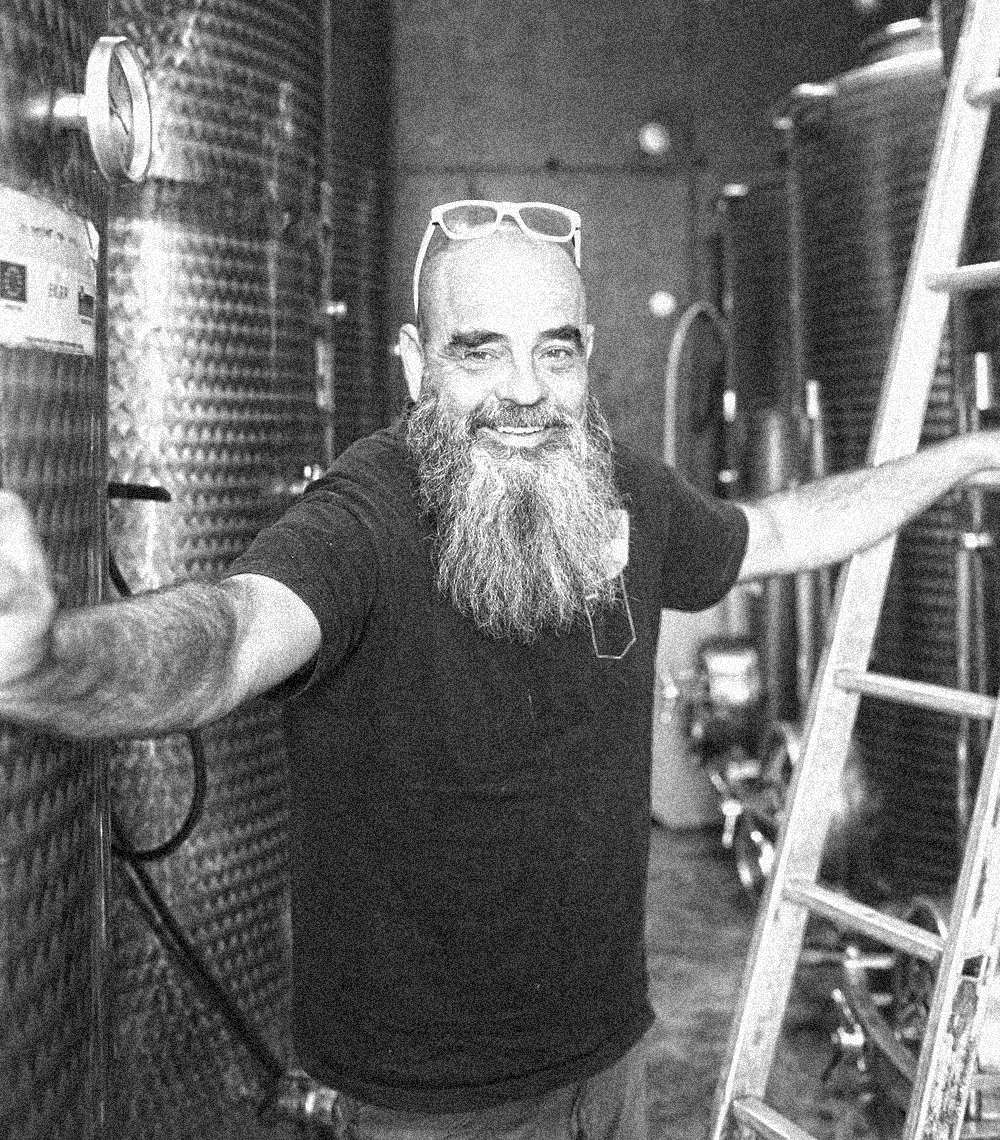
OWNER: Katja Kabaj
WINEMAKER: Jean Michel Morel
REGION, VILLAGE: Slovenia Goriška Brda, Šlovrenc
TOTAL HA OF VINEYARDS: 10ha producing, 4 additional under cultivation
SOIL: Argile, Marl, Flysch, Aluvial, Clay
ALTITUDE OF VINEYARDS: 200 - 600 meters
CLIMATE: Mediterranean /Alpic
CULTIVATED: Rebula, Zeleni Sauvignon, Sivi Pinot, Malvazija, Sauvignon Blanc, Pinot Blanc, Verduzzo, Merlot, Cabernet Franc, Pinot Noir, Cabernet Sauvignon, Moscato Rosa, Olives, vegetables
FARMING: Low/no till, ecological treatments, manure for fertilizer
ANNUAL PRODUCTION: 70,000 bottles
FIRST COMMERCIAL VINTAGE: 1993
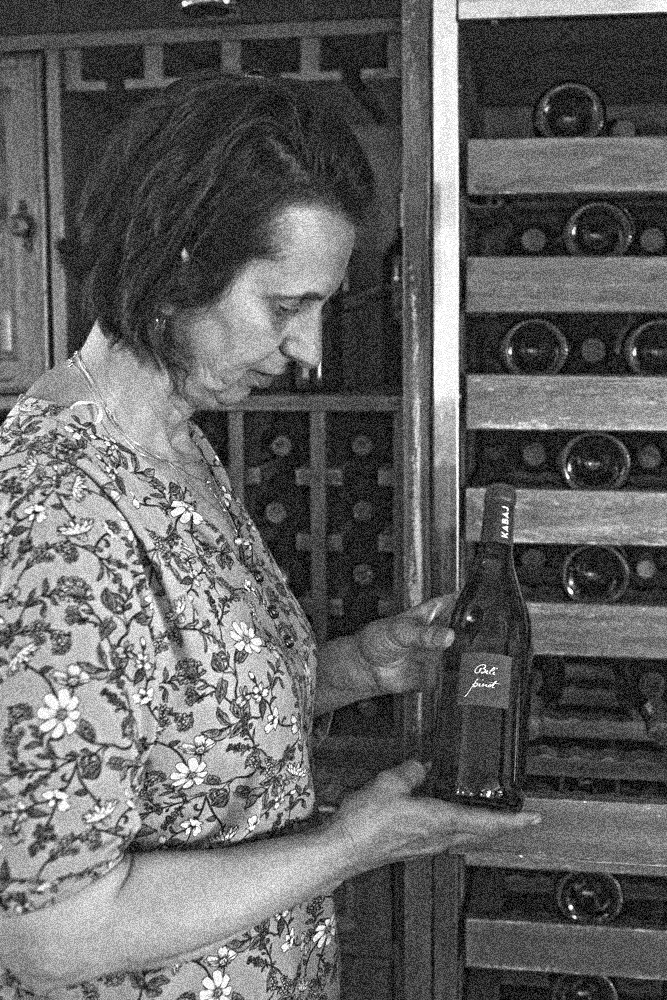
Generations of the KABAJ family have grown grapes in hilly, verdant Goriška Brda in Western Slovenia close to the Italian border. The family emigrated to the area during the Hapsburg Empire, first to the village of St. Peter, which today is in Italy soon after they settled in the village of Slovrenc where they remain. Today the Kabaj homestead consists of a winery, kitchen, guesthouse and the family home. It is overseen by Katja KABAJ and her husband Jean Michel Morel, who tend the vineyards and the cellar. They make wine only from grapes that they grow and farm about 10 HA give or take (some vineyards are under renovation). 70% of their production is made from white grapes. All wines are made with some amount of skin contact. This encourages spontaneous fermentation and gives healthier wines.

During the Yugoslav period the grapes they grew went to the local cooperative. Even after Slovenia was established in the early 90’s they continued to sell the grapes to the same cooperative. The price the cooperative paid to the farmers, if the cooperative paid at all, was so low that it was better to grow cherries and peaches to sell on the street than grapes for wine. But Zvonko KABAJ, Katja’s father, loved the vine and making wine and always had in his heart the desire to make wine commercially. “If the wine of Colio (Italian side of Brda) is world famous then certainly we have this same opportunity”. Zvonko was the first to plant Sivi Pinot in Brda in the 70’s. The clones had to be smuggled to Yugoslavia from Italy.
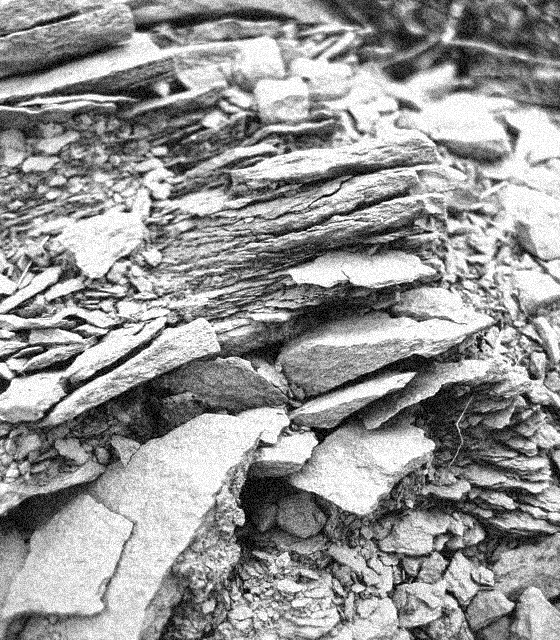
The first commercial vintage was 93’, the wines were made by Zvonko and Jean Michel, who worked together until Zvonko died in 97’. Before this though they planted new vineyards, renovated the home cellar and began to collect the necessary equipment. Starting up in the early 90's was almost a joke in the young country of Slovenia. The first tanks they bought for fermentation were made for holding milk. The first press was an old basket press. It was a very difficult time to buy anything, even if just across the border you could buy the best equipment in the world. The government regulated purchases, the economy was quite closed. This made each piece of equipment acquired all the more special. In 2004 after returning from Georgia where Jean Michel studied wine making in Qvevri they built the Marani during a second renovation and converted the prior cellar into the restaurant that Katja oversees.
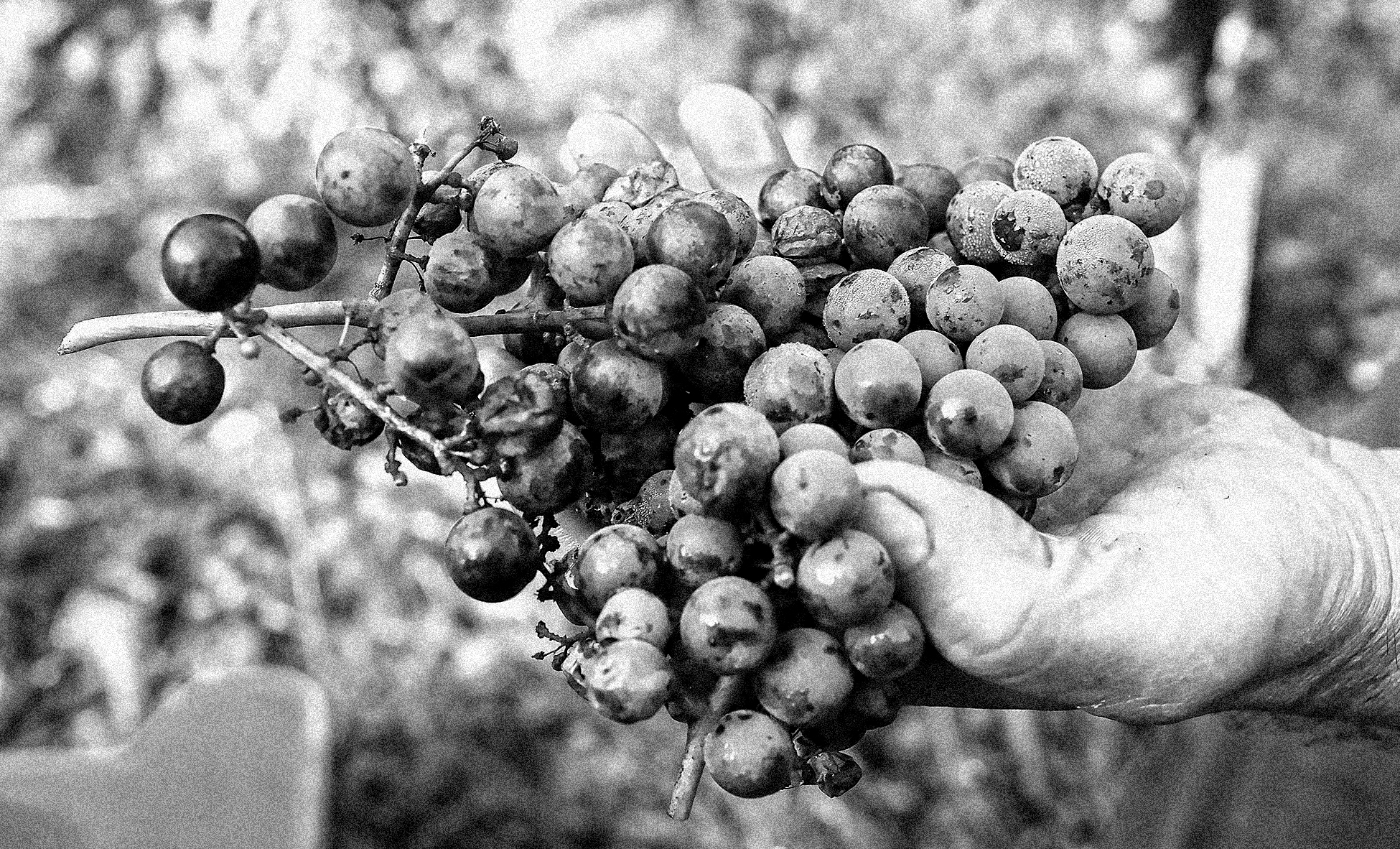
Goriška Brda is Slovenia’s best known wine appellation. This is due to the cross border status it shares with the more famous Italian Collio. Both Brda and Collio mean hillside. It is a vast land of verdant church topped hills spilling with vineyards, fruit orchards and groves of olives. Uniquely positioned between the Alps and the Adriatic, the climate is influenced by both. Interspersed with rivers and forests the environment is clean and rich in biodiversity. Rebula and Savignonasse (Tokaj) are the premiere local varieties. Additionally many French varieties brought to the region during the Napoleonic period have found themselves at home. The cuisine is mixed; not Balkan, Austro-Hungarian or Italian but some combination of all three. Brda is a place one would hope to find special wines to justify returning.
Many of the most iconic Collio producers have Slavic surnames. These were some of the wineries who first introduced skin contact white wines to the international market. It would be inaccurate to identify these wines as culturally Italian. They were modeled after Slovene homemade wines. Collio is one of the world’s fresh wine capitals. Fresh wine is wine made in temperature controlled stainless steel so as to preserve the fresh fruity character of a wine in a way that was not possible before the technology existed. Those wines made without this are certainly closer in character to the pre-industrial wines of the area. Kabaj makes no fresh wine.
KABAJ is a model for what could be. Rather than taking advantage of the predictability of market tested conventional wines, they chose to champion the old ways. The first vintage was in 93’. They were drinking skin contact wines and started experimenting themselves in 97’. By 2005 they were macerating all white varieties for at least a few days. Having consistently produced a range of exemplary original wines like this for about 15 years now they prove it is not necessary to make the modern fruity style of wines so ubiquitous today. They make 60,000 to 100,000 bottles annually. 30% of the production is classical renditions of Bordeaux varieties, 70% is white grapes fermented with the skins.
Depending on the harvest they make 7-10 wines each vintage. Instead of singling out the best lots for the premium wines, all wines are composites of different vineyard locations, each contributing and supporting the ultimate wine in different ways. Millions of years ago the area was a shallow sea shore and delta. The soils are a complex mix of sedimentary flysch and marl interspersed with sandstone and limestone. The flysch and marl soils locally known as “Ponka” are most prized. They farm 12 hectares spread across 7 different positions throughout the appellation. Most vineyards are terraced marl planted to mature (older than 25 years), single guyot trained vines.
Farming is low and no till with an emphasis on soil biodiversity. To create an environment for the vine that is in harmony with the natural flora and fauna. Pheasants once common in the vineyard who had all but disappeared have begun returning to their vineyards. Systemic treatments, herbicides and pesticides are not used. What is sprayed is biological. The primary fertilizer is horse manure. Elemental sulfur and copper is sprayed but copper they try to avoid as much as possible.
All wine is fermented with native yeast and moved according to lunar cycles. Each undergoes some amount of skin contact, whites and reds alike. The length of skin contact varies based on variety and vintage. For the skin fermented white wines the goal is not to make extreme wine. Jean’s opinion is that if you take a bottle of wine in the vineyard, you should be able to taste the grape and then taste the wine and find the same flavors. The most significant vinification difference between Ravan (Sauvignonasse), Sauvignon Blanc, Beli Pinot (Pinot Blanc), Sivi Pinot (Pinot Gris) and Rebula is length of skin contact. Yet they all look, smell and taste completely different from each other.
After being racked off of the skins and finishing fermentation the wines spend a minimum of 1 year in used exclusively French barrique and complete malolactic fermentation. The process of macerating is evolving; starting in 2017 they are leaving 30 percent of the skins in tank for 5 months post malolactic because the grape skins naturally settle at the bottom and cover the lees to allow the cleaner wine at the top to be removed without disturbing the lees.
The style Jean brings to the KABAJ reds is reminiscent of late 80s Bordeaux, where he grew up. Brda is cool for Bordeaux varieties and Merlot is the grape that is best suited to the conditions. It is the dominant component in both Merlot and Cuvee Morel. Grapes are destemmed and fermented in stainless steel and macerated for approximately 6 weeks. Cuvee Morel is co-fermented. The wines are aged in barrique, some new for 24 to 36 months. Aristocratic in style they harken back to a time when Bordeaux was Claret. Nuanced, perfumed and enduring.
Jean Michel’s interest in skin contact white wine eventually led him to Georgia, the other location where this style of winemaking has historic precedent. There he studied wine making at a monastery. He brought this knowledge and 9 of the 3,000 liter clay qvevri that Georgian wine has traditionally been vinified in. Amfora is made according to Georgian traditions. The qvevri are filled with grapes after fermentation; they are sealed and left with the skins for as long as 2 years. This is the most eccentric, grand and personal wine of KABAJ.
![]()
KABAJ is a model for what could be. Rather than taking advantage of the predictability of market tested conventional wines, they chose to champion the old ways. The first vintage was in 93’. They were drinking skin contact wines and started experimenting themselves in 97’. By 2005 they were macerating all white varieties for at least a few days. Having consistently produced a range of exemplary original wines like this for about 15 years now they prove it is not necessary to make the modern fruity style of wines so ubiquitous today. They make 60,000 to 100,000 bottles annually. 30% of the production is classical renditions of Bordeaux varieties, 70% is white grapes fermented with the skins.
Depending on the harvest they make 7-10 wines each vintage. Instead of singling out the best lots for the premium wines, all wines are composites of different vineyard locations, each contributing and supporting the ultimate wine in different ways. Millions of years ago the area was a shallow sea shore and delta. The soils are a complex mix of sedimentary flysch and marl interspersed with sandstone and limestone. The flysch and marl soils locally known as “Ponka” are most prized. They farm 12 hectares spread across 7 different positions throughout the appellation. Most vineyards are terraced marl planted to mature (older than 25 years), single guyot trained vines.
Farming is low and no till with an emphasis on soil biodiversity. To create an environment for the vine that is in harmony with the natural flora and fauna. Pheasants once common in the vineyard who had all but disappeared have begun returning to their vineyards. Systemic treatments, herbicides and pesticides are not used. What is sprayed is biological. The primary fertilizer is horse manure. Elemental sulfur and copper is sprayed but copper they try to avoid as much as possible.
All wine is fermented with native yeast and moved according to lunar cycles. Each undergoes some amount of skin contact, whites and reds alike. The length of skin contact varies based on variety and vintage. For the skin fermented white wines the goal is not to make extreme wine. Jean’s opinion is that if you take a bottle of wine in the vineyard, you should be able to taste the grape and then taste the wine and find the same flavors. The most significant vinification difference between Ravan (Sauvignonasse), Sauvignon Blanc, Beli Pinot (Pinot Blanc), Sivi Pinot (Pinot Gris) and Rebula is length of skin contact. Yet they all look, smell and taste completely different from each other.
After being racked off of the skins and finishing fermentation the wines spend a minimum of 1 year in used exclusively French barrique and complete malolactic fermentation. The process of macerating is evolving; starting in 2017 they are leaving 30 percent of the skins in tank for 5 months post malolactic because the grape skins naturally settle at the bottom and cover the lees to allow the cleaner wine at the top to be removed without disturbing the lees.
The style Jean brings to the KABAJ reds is reminiscent of late 80s Bordeaux, where he grew up. Brda is cool for Bordeaux varieties and Merlot is the grape that is best suited to the conditions. It is the dominant component in both Merlot and Cuvee Morel. Grapes are destemmed and fermented in stainless steel and macerated for approximately 6 weeks. Cuvee Morel is co-fermented. The wines are aged in barrique, some new for 24 to 36 months. Aristocratic in style they harken back to a time when Bordeaux was Claret. Nuanced, perfumed and enduring.
Jean Michel’s interest in skin contact white wine eventually led him to Georgia, the other location where this style of winemaking has historic precedent. There he studied wine making at a monastery. He brought this knowledge and 9 of the 3,000 liter clay qvevri that Georgian wine has traditionally been vinified in. Amfora is made according to Georgian traditions. The qvevri are filled with grapes after fermentation; they are sealed and left with the skins for as long as 2 years. This is the most eccentric, grand and personal wine of KABAJ.
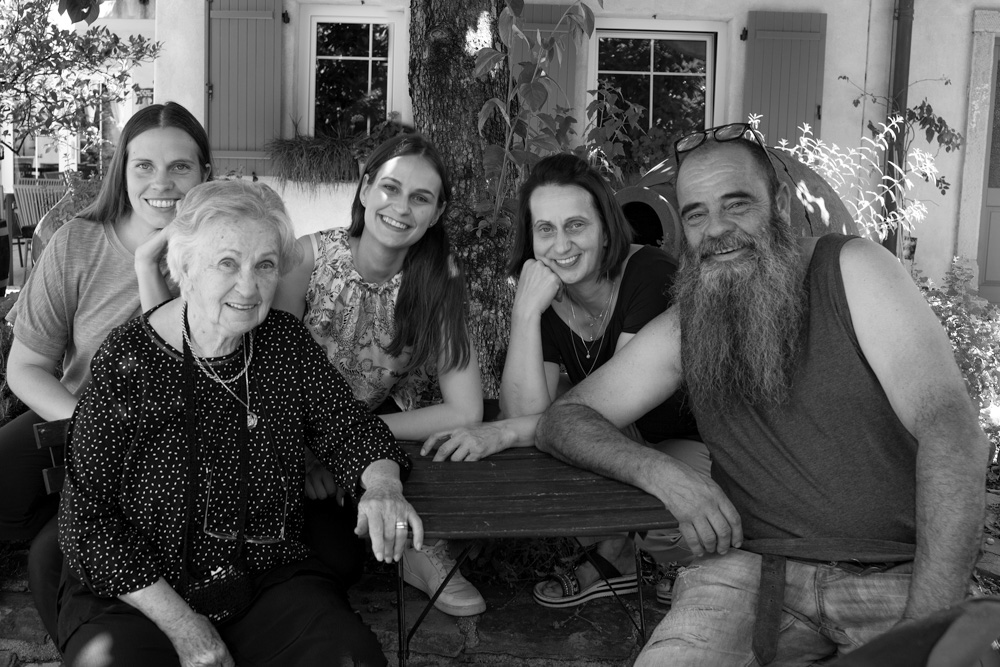

WINE PRODUCERS IN THE POLITICALLY DEMARCATED ZONE OF...
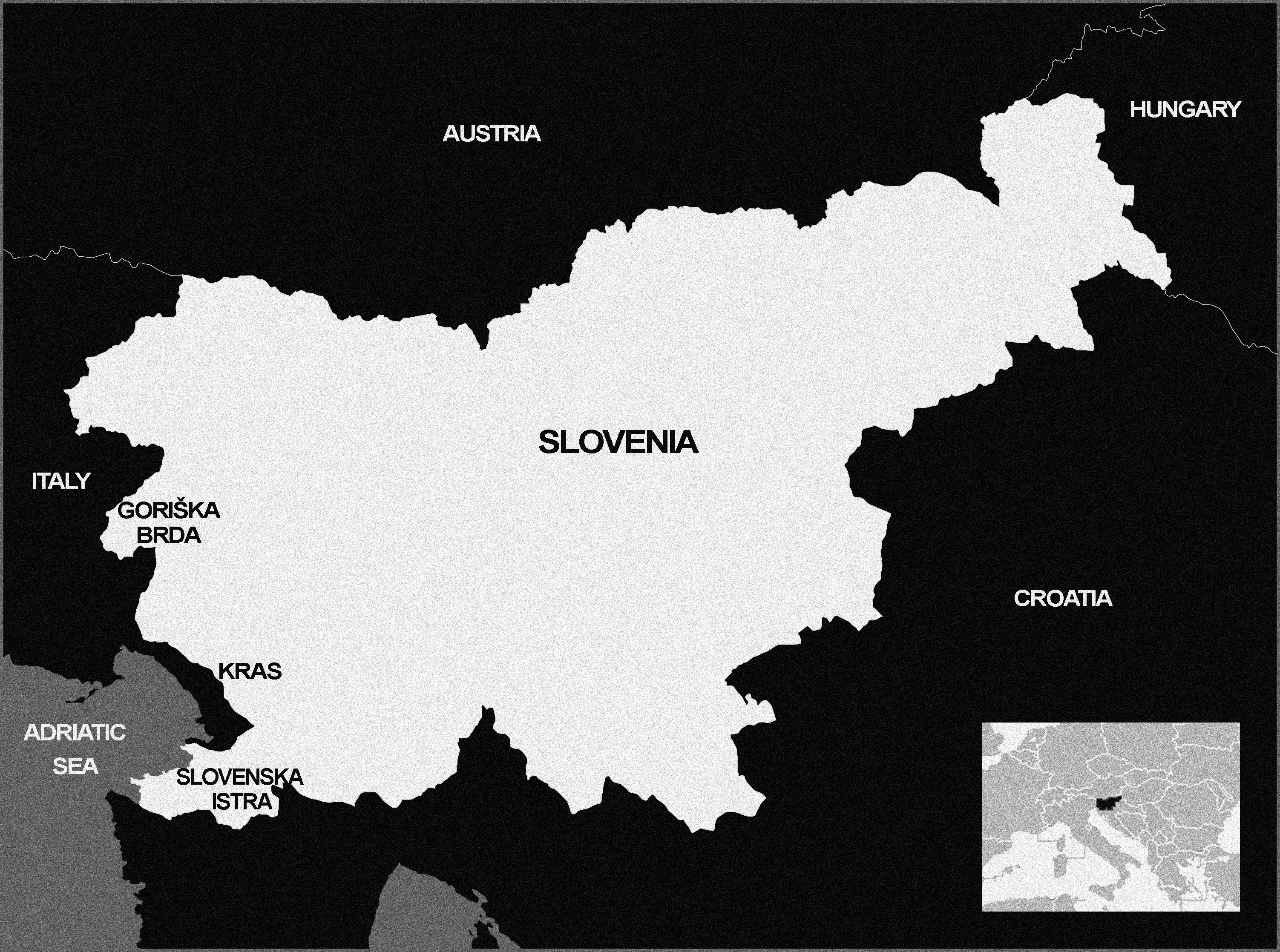
PRODUCERS
KABAJ
GORIŠKA BRDA
KORENIKA AND MOŠKON
SLOVENSKA ISTRA
ŠTEMBERGER
KRAS
ZARO
IZOLA
COLLABS
THE RIDERS
GORIŠKA BRDA
EAZY
SLOVENSKA ISTRA


KORENIKA & MOŠKON

2021 MALVAZIJA
2021 REFOSK
Matej Korenika is one of the first producers in Slovenia to establish a fully Demeter certified Biodynamic vineyard. The soils are flysch composed primarily of marine sediments. The production is predominantly the local white Malvazija and red Refosk. The wines are made from biodynamically farmed grapes and vinified in unadorned style, vinified in stainless steel tanks from biodynamically farmed vines is the majority of the production. The vineyards are planted near the winery across a variety of aspects.


KORENIKA & MOSKON
2021 Refosk.
Style: dry red wine
Vineyard: Pod Kortinca
Soil Composition of Vineyard(s): Flysch, Marl, marine sediment
Prevailing Climate & Local Climactic: Mediterranean - hot days
Farming of Vineyard: Demeter certified Biodynamic
Composition: 100% Refošk
Harvest: by hand
Maceration: 1 week
Fermentation/Aging: indigenous yeasts, 4 days of cold maceration and 7 days of fermentative maceration, 20 months on yeasts in tank.
Fining & Filtration Methods: none
Sulfur dioxide: 30ppm total
Bottles Produced: 10,000.
Good with meats from land and sea. A heady red from the sea! Grapey, peppery, and full flavored.

KORENIKA & MOSKON
2021 Malvazija.
Style: Dry white wine
Vineyards: Kalcinar (1998), Bankina (2010), Pod Vuki (2011)
Soil Composition of Vineyard(s): Flysch, Marl, marine sediment
Prevailing Climate & Local Climactic: Mediterranean - hot days
Farming of Vineyard: Demeter certified Biodynamic
Composition: 100% Malvazija
Harvest: by hand
Maceration: 3 days on the skins
Fermentation/Aging: destemmed grapes, native yeast, stainless steel, one year on the lees
Fining & Filtration Methods: none
Sulfur dioxide: 50ppm total
Bottles Produced: 15,000.
Sunny, discreetly floral, briny and fresh.

ŠTEMBERGER
2020 MALVAZIJA
DRY ORANGE WINE.
WINE MAKER: Sebastijan Štemberger.
VINTAGE: 2020.
LOCATION: Kras.
VINEYARD: Štanjelo.
ASPECT: South west, South east.
ALTITUDE: 360 meters.
SOIL COMPOSITION: Flysch and Terra Rosa.
PREVAILING CLIMATE & LOCAL CLIMACTIC: Mediterranean, windy.
FARMING: Organic, Biodynamic.
GRAPE COMPOSITION: Malvazija.
HARVEST: Early October.
MACERATION: 3 months, destemmed berries
FERMENTATION: spontaneous fermentation in concrete egg
PRESS: no pressing, free run.
AGING: 18 months concrete eggs
sO2: none added.
FINING & FILTRATION: none.
BOTTLED: Spring 2021
BOTTLES PRODUCED: 2000
VINTAGE: 2020.
LOCATION: Kras.
VINEYARD: Štanjelo.
ASPECT: South west, South east.
ALTITUDE: 360 meters.
SOIL COMPOSITION: Flysch and Terra Rosa.
PREVAILING CLIMATE & LOCAL CLIMACTIC: Mediterranean, windy.
FARMING: Organic, Biodynamic.
GRAPE COMPOSITION: Malvazija.
HARVEST: Early October.
MACERATION: 3 months, destemmed berries
FERMENTATION: spontaneous fermentation in concrete egg
PRESS: no pressing, free run.
AGING: 18 months concrete eggs
sO2: none added.
FINING & FILTRATION: none.
BOTTLED: Spring 2021
BOTTLES PRODUCED: 2000
This is the quintessential expression of Slovenian Malvazija Istriana from one of the best locations for the grape. Oolong, Mandarin blossom, pineapple and gunpowder, it has a good bite of tannin bolstered by salty minerality. The perfect companion to buttery grilled seafood, cured pork, vegetables cooked over wood.


ŠTEMBERGER
2020 TERRA NATURA
DRY ORANGE WINE.
WINE MAKER: Sebastijan Štemberger.
VINTAGE: 2020.
LOCATION: Kras.
VINEYARD: Štanjelo.
ASPECT: South west, South east.
ALTITUDE: 360 meters.
SOIL COMPOSITION: Flysch and Terra Rosa.
PREVAILING CLIMATE & LOCAL CLIMACTIC: Mediterranean, windy.
FARMING: Organic, Biodynamic.
GRAPE COMPOSITION: Malvazija.
HARVEST: Early October.
MACERATION: 3 months, destemmed berries
FERMENTATION: spontaneous fermentation in concrete egg
PRESS: no pressing, free run.
AGING: 18 months concrete eggs
sO2: none added.
FINING & FILTRATION: none.
BOTTLED: Spring 2021
BOTTLES PRODUCED: 2000
VINTAGE: 2020.
LOCATION: Kras.
VINEYARD: Štanjelo.
ASPECT: South west, South east.
ALTITUDE: 360 meters.
SOIL COMPOSITION: Flysch and Terra Rosa.
PREVAILING CLIMATE & LOCAL CLIMACTIC: Mediterranean, windy.
FARMING: Organic, Biodynamic.
GRAPE COMPOSITION: Malvazija.
HARVEST: Early October.
MACERATION: 3 months, destemmed berries
FERMENTATION: spontaneous fermentation in concrete egg
PRESS: no pressing, free run.
AGING: 18 months concrete eggs
sO2: none added.
FINING & FILTRATION: none.
BOTTLED: Spring 2021
BOTTLES PRODUCED: 2000
This is the quintessential expression of Slovenian Malvazija Istriana from one of the best locations for the grape. Oolong, Mandarin blossom, pineapple and gunpowder, it has a good bite of tannin bolstered by salty minerality. The perfect companion to buttery grilled seafood, cured pork, vegetables cooked over wood.



ŠTEMBERGER
2020 ZELEN
DRY ORANGE WINE.
WINE MAKER: Sebastijan Štemberger.
VINTAGE: 2020.
LOCATION: Kras.
VINEYARD: Štanjelo.
ASPECT: South west, South east.
ALTITUDE: 360 meters.
SOIL COMPOSITION: Flysch and Terra Rosa.
PREVAILING CLIMATE & LOCAL CLIMACTIC: Mediterranean, windy.
FARMING: Organic, Biodynamic.
GRAPE COMPOSITION: Zelen.
HARVEST: Late September, younger vines 70%, 3 days before older vines 30%.
MACERATION: 3 days with 100%, 11 months 30%.
FERMENTATION: spontaneous fermentation.
PRESS: no pressing, free run.
AGING: 18 months vertical oak tanks
sO2: none added.
FINING & FILTRATION: none.
BOTTLED: Spring 2021
BOTTLES PRODUCED: 2000
VINTAGE: 2020.
LOCATION: Kras.
VINEYARD: Štanjelo.
ASPECT: South west, South east.
ALTITUDE: 360 meters.
SOIL COMPOSITION: Flysch and Terra Rosa.
PREVAILING CLIMATE & LOCAL CLIMACTIC: Mediterranean, windy.
FARMING: Organic, Biodynamic.
GRAPE COMPOSITION: Zelen.
HARVEST: Late September, younger vines 70%, 3 days before older vines 30%.
MACERATION: 3 days with 100%, 11 months 30%.
FERMENTATION: spontaneous fermentation.
PRESS: no pressing, free run.
AGING: 18 months vertical oak tanks
sO2: none added.
FINING & FILTRATION: none.
BOTTLED: Spring 2021
BOTTLES PRODUCED: 2000
This is the only example of Zelen that we have encountered outside of Vipava where the grape is native. Only because the vineyard straddles Kras and Vipava is Štemberger allowed to label it as Zelen. Sebastijan’s versions dismisses any idea that Zelen is for aroma and little else. Low alcohol, silky, scented with gardenia, spruce and spiced pear it is a wine without parallel. Something original deserving of imitation. The vineyard is rocky and entirely surrounded by wild forest. The wine spends 11 months on 30 percent of the skins. Categorically it is orange wine but the Zelen’s delicate skins of and lack of pressing give the wine body but not tannin. So smooth it is almost oily.

ŠTEMBERGER
OWNER AND WINEMAKER: Sebastijan Štemberger.
REGION: Kras, Slovenia.
TOTAL HECTARE: 8ha.
ALTITUDE OF VINEYARD(S): 280m - 360m.
PREVAILING CLIMATE & LOCAL CLIMATIC: Mediterranean, windy.
SOIL COMPOSITION: limestone, terra rosa, flysch.
VINES PLANTED: 1790’s, 2005, 2011.
CULTIVATED: Zelen, Malvazija Istriana, Vitovska, Teran.
FARMING: Organic, Biodynamic.
WINE(S) PRODUCED: Orange wine, red wine and sparkling pet-nats.
FIRST COMMERCIAL VINTAGE: 2005.
TOTAL ANNUAL PRODUCTION: 20,000 bottles.
REGION: Kras, Slovenia.
TOTAL HECTARE: 8ha.
ALTITUDE OF VINEYARD(S): 280m - 360m.
PREVAILING CLIMATE & LOCAL CLIMATIC: Mediterranean, windy.
SOIL COMPOSITION: limestone, terra rosa, flysch.
VINES PLANTED: 1790’s, 2005, 2011.
CULTIVATED: Zelen, Malvazija Istriana, Vitovska, Teran.
FARMING: Organic, Biodynamic.
WINE(S) PRODUCED: Orange wine, red wine and sparkling pet-nats.
FIRST COMMERCIAL VINTAGE: 2005.
TOTAL ANNUAL PRODUCTION: 20,000 bottles.

Vina Štemberger is located in Kras, Slovenia. Kras is located a bit east of Prosecco, Italy. It is an appellation uniquely shared by two nations. Carso to the Italians, Kras to the Slovenians. The pilings that support Venice were made from Kras oak. The term Karst topography was coined here and references limestone soils that dissolve into caves, which there are many of in Kras. It is an area that has seen a great deal of conflict throughout history. The impassable Alps to the north, the Adriatic Sea to the south, its location is something of an East/West gateway. These geological conditions are responsible for the region’s constant, often harsh winds, ideal for grape cultivation. Due to the high iron content of the soils, Kras wines have historically been prized for their medicinal value, most of all the red Teran (Terano to the Italians). Health aside, the white wines are at least as compelling and offer the same depth and intellectual charm as the reds.
Sebastijan and his wife Loredana and their three sons live and make wine in a large historically Turkish farm in the village of Šepulje. This is a hilltop village and could be considered a premier cru due to the reputation of the wines. Designed in a square with a large central courtyard the building was designed to protect workers and animals from the winds, Sebastijan is restoring the old building by hand with local rock and wood in traditional style. Trellised as an arbor on the outside of the farm house are two 300 year old Teran vines that he cares for and produces clones for the vineyards from. The farm is the familial home of two elderly sisters who also live there, the Štembergers maintain the farm and in exchange are able to produce their wines in the farm house and its cellar. In 2022 they completed work on an additional separate cellar adjacent to the vineyards behind the farm house.
The vineyards are located in two locations. In the village of Šepulje surrounding the farm house and in the forest of Štanjelo overlooking the Vipava Valley. They are certified organic but also cultivated according to biodynamic principles where possible. The forest vineyard is too remote to correctly administer all of the necessary preparations. The Šepulje vineyard is rich in terra rosa and where the majority of the red Teran and white Vitovska is grown. The Štanjelo vineyard is dominated by flysch and divided equally between Malvazija and Zelen. He raises pigs next to his forest vineyard. They eat a half wild diet and are the source for the exquisite ham Sebastijan cures above the wine barrels and serves alongside his wines to lucky visitors. The greatest Pršut (prosciutto) anywhere.
The Štembergers came from Alto Adige long enough ago for their Germanic name to acquire its Slavic punctuation. Sebastijan studied winemaking during Slovenia’s Socialist period, technical winemaking on an industrial scale. It was not the style of winemaking he had in his heart. His Father was a winemaker but passed away when Sebastijan was a child. Sebastijan wanted to make the wines of his childhood memories. Through trial and error he searched out his own taste and style of winemaking. For ten years, he sold his production to local restaurants to be served on tap as ‘open wine’. Slowly as he gained experience and acquired vineyards he began to bottle. It is probably this period of self education that give Sebastijan’s wines their very personal feel.
Kras wines tend to be salty and Mediterranean in character. The whites, often skin macerated, are lower in acid and discreetly floral while the reds, mostly Refošk, are tangy and ferrous. Distinctive in their own right, they acquire additional distinction in Vina Štemberger. Sebastijan’s wines are different. Always aromatic, expressive of fruit at the moment it should be consumed. The length of skin maceration and control of extract seem to emulsify the wines. Giving richness without weight, extract without tannin. This is complemented by his intelligent management of yeast and lees contact. Elegance of texture, expression of fruit and a signature gaminess give the wines dimension. Once open they react to the air and temperature, each bottle a display for many faces. Energetic and positive, Sebastijan is frenetic but his wines are calm. Gentle, suave, buoyant rather than tannic. Restrained in alcohol, deep and thoughtful, equal parts animal and intellect. We drink these wines with foods cooked over fire often from the sea, or cured, preferably outdoors with our fingers.










PIVOL MALVAZIJA
DRY WHITE WINE
WINE MAKER: Matej Zaro
VINTAGE: 2020
LOCATION: Slovenia, Slovenska Istra, Pivol
VINEYARD (HA): Santa Camela
ASPECT: terraced South East facing, varied exposures
ALTITUDE: 100-150m
YEAR(S) PLANTED: 2005, 1990
SOIL COMPOSITION: Flysch
PREVAILING CLIMATE & LOCAL CLIMACTIC: Warm Mediterranean
FARMING: Organic
GRAPE COMPOSITION: Malvazija
HARVEST: Mid September
MACERATION: destemmed fruit, 30 days
FERMENTATION: Spontaneous, vertical oak tank
AGING: 1 year used Slovanian barrique
FINING & FILTRATION: none
BOTTLED: April, 2023
BOTTLES PRODUCED: 3,000
The majority of Zaro’s vineyards are located within the special Cru of Pivol. The micro appellation is centered in an amphitheater that overlooks the village of Izola and the Adriatic. The stony flysch soils combined with the windy, dry well exposed position are so conducive to organic cultivation that certifying the vineyards was more a matter of paperwork than adjusting farming practices. Zaro Pivol Malvazija is the style of Istrian Malvazija that most defines the variety. It is a heady ambrosial dry wine. Sunny and saline. Suited most of all for simple preparations of shellfish doused in olive oil or salt cured ham. Grapes are typically harvested the first half of September. After a strict selection in the vineyard the grapes are destemmed and combined in 2 2000l Slovenian oak tonne. Fermentation is spontaneous without temperature control on the skins. After 30 days wine is racked through the press back into a combination of tonne and used barriques. All wine was with lees for 12 months and finished malolactic fermentation. Unfined, unfiltered.
ZARO
 Matej Zaro in front of Izola
Matej Zaro in front of Izola2020 MALVAZIJA PIVOL
2019
REFOŠK
PIVOL
OWNER AND WINEMAKER: Matej Zaro
REGION: Izola, Slovenska Istra, Slovenia
TOTAL HECTARE: 20ha
ALTITUDE OF VINEYARD(S): 100m - 400m
PREVAILING CLIMATE & LOCAL CLIMATIC: Warm Mediterranean
SOIL COMPOSITION: Flysch and Clay
CULTIVATED: Refošk, Cabernet Sauvignon, Merlot, Negratenera, Malvazija, Chardonnay, Pinot Blanc, Muscat
FARMING: Certified Organic
WINE(S) PRODUCED: Dry red, white skins and no skins, Rose, Sparkling
FIRST COMMERCIAL VINTAGE: 1348
TOTAL ANNUAL PRODUCTION: 80,000 bottles
LABEL ART: snakeland
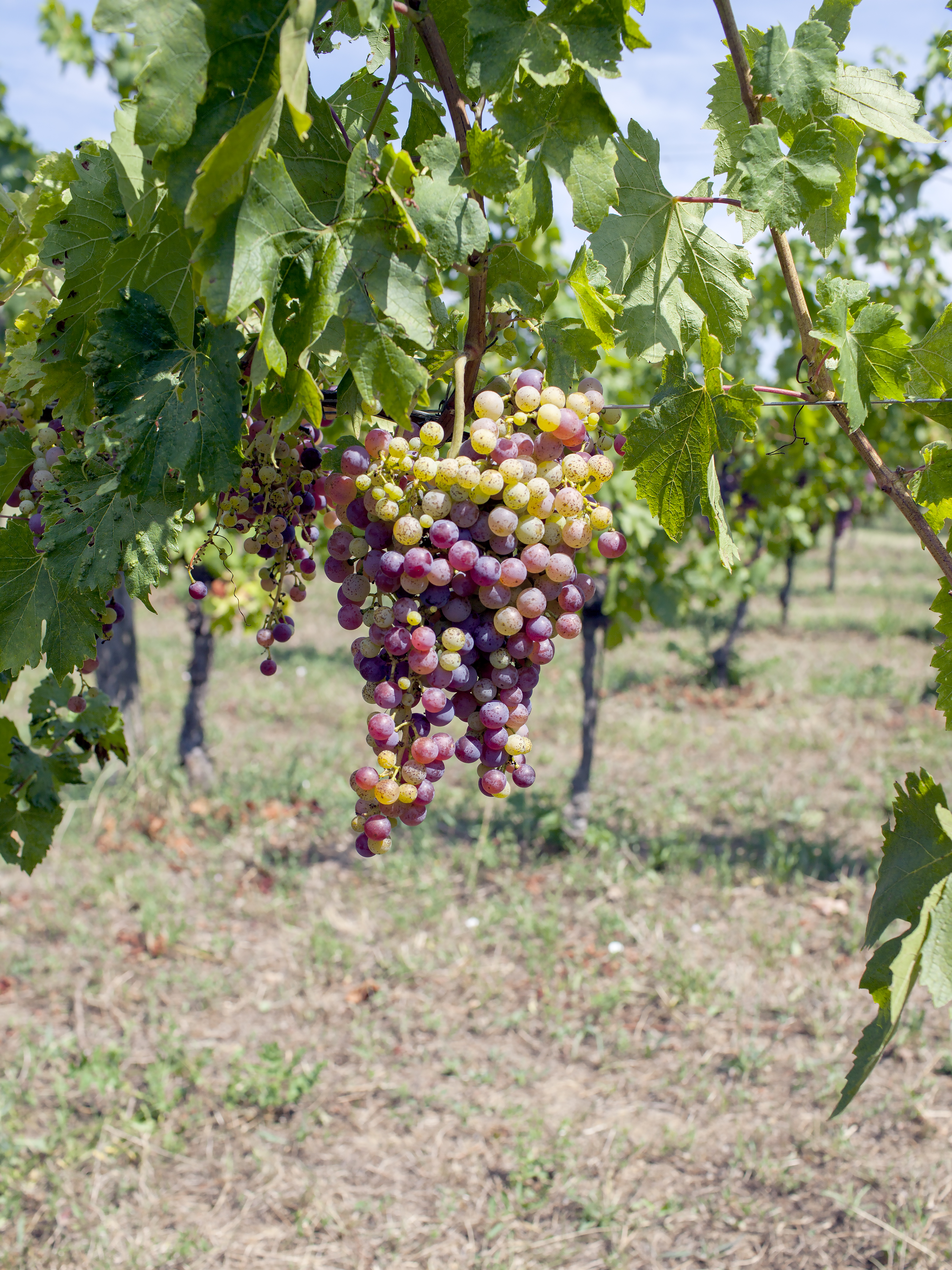
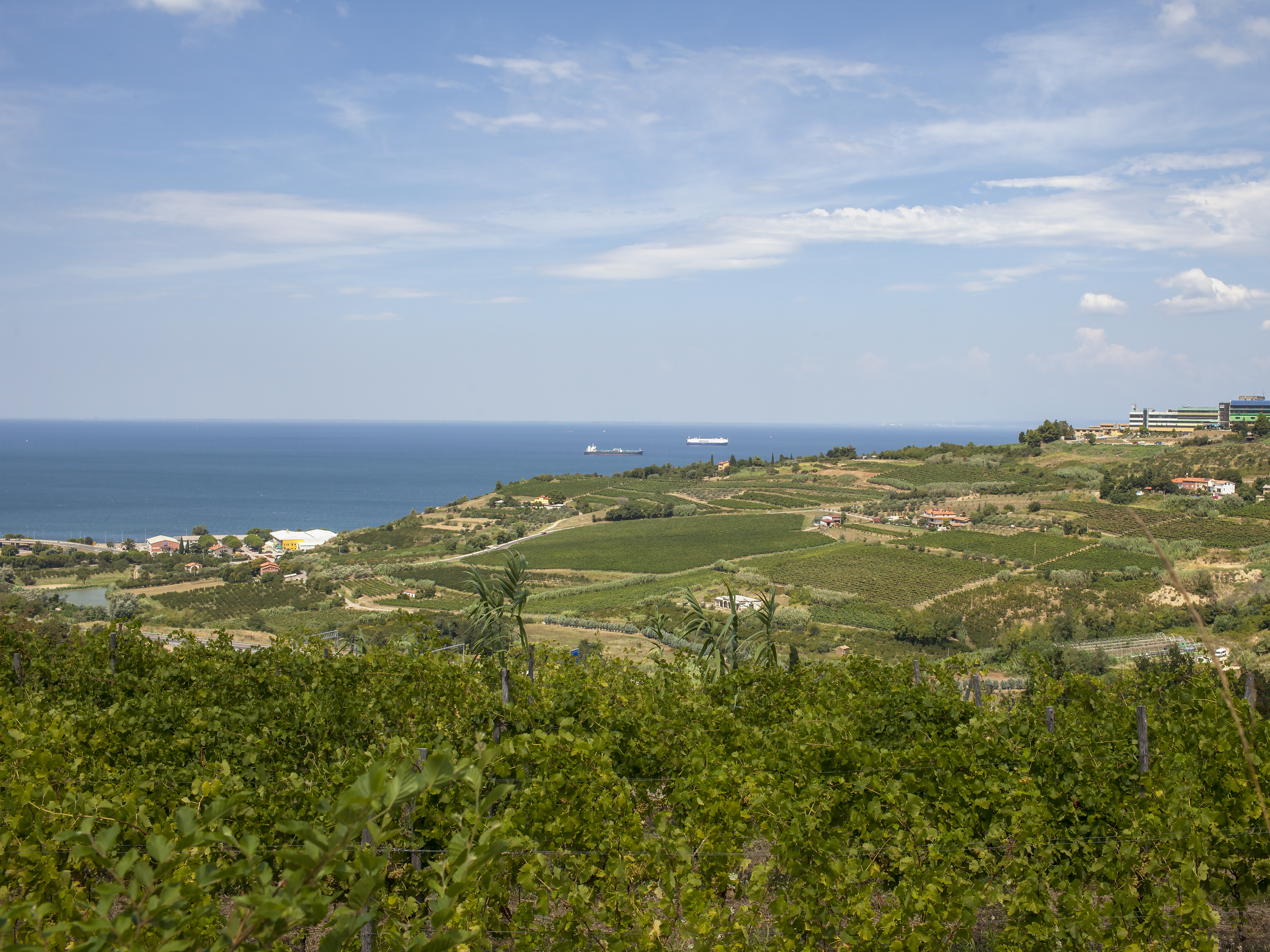


“We are a family that produces wine and olive oil. Our ancestors settled in Izola in 1348, which is why we are fully committed to our homeland and the sea. It is like a golden thread woven into our life and work. Our vines and olive trees grow on beautiful fertile slopes above Izola, offering breathtaking views of the Adriatic. From the Gulf of Trieste to the majestic peaks of the Slovenian Alps and on sunny days the Italian Dolomites. The local traditions unite us closely with fishing as well, which is why wine, olive oil and fish are the most complete portrait of our family. To this end, we have arranged a boat, which sails on the sea. While looking at our vineyards and olive groves from the boat we offer you freshly caught fish and vintage wines. We live at the mercy of the weather, so when nature decides to show her less friendly face, we can eat and drink together in our Wine bar Manzioli in Manzioli Palace, in Izola.” Matej Zaro

Grande Refošk
photo credit: Holley Robbins
Slovenia’s tiny slice of the Adriatic, “Slovenska Istra”, dotted with seaside villages and vineyards is idyllic. The vineyards are full of the ancient red Refošk, the grape variety par excellence of Slovenska Istra, where it is most common. Zaro is located in the village of Izola “Island”, (today it is a peninsula) and one of the villages best known for Refošk. Izola, Insula, was founded by the Romans in 1 AD. During the Middle Ages its port was vital for trading and ship building. The Republic of Venice ruled Izola for 500 years (Zaro is a Venetian surname). It was part of the Austrian Empire from 1797 until WWI when it became part of Italy, annexed by Yugoslavia after WWII, it has been part of independent Slovenia since 1991. Considering this dynamic past, Izola is particularly rich in history and culture, a benefit to the atmosphere and cuisine experienced there today.
The Zaro family farms 20 ha of organically cultivated vineyards planted in the region’s characteristic stony flysch terraces. The vines blanket an amphitheater of rocky flysch. Historically it is regarded as a cru for Refošk. In Italy Refošk is called Refosco dal Peduncolo Rosso, but the variety and its kin are much more important in Slovenia/Croatia than in Italy, and generally produce more interesting wines. Considering it was praised in Pliny’s Natural History, 1 AD, it is one of the longest continuously cultivated varieties in Europe.
Izola's combination of wine and sea is idyllic. It is a little culinary microcosm that Zaro is at the center of. In addition to their vineyards they tend a number of small organic olive groves. Izola’s vineyards benefit from the seasonal wind called Maestral. It blows daily from 10am to sunset, from May to October from the sea to the land. Constant natural ventilation. Those vines closest to the water are influenced the most. These Maestral winds are a component of what has historically made Izola so well suited to cultivation of Mediterranean crops like grapes and olives. The soil if the area is ubiquitously Flysch, a type of sedimentary rock that is formed from the deposition of alternating layers of sandstone and shale. Flysch is well draining, erosion resistant and a good source of minerals and nutrients, essential for plant growth. It is typically found in mountainous regions. Flysch is a relatively young rock, and it is often found in association with other sedimentary rocks such as limestone.
The abundant sunshine, typically windy conditions and nutritious soils require little additional input in the vineyard. Sulfur and copper are sprayed only through July and typically no more than 4-5 times a season. Like his grandfather, Matej is motivated to make wine because of the gifts of the land. While some vintages are better than others Matej is consistently impressed by what the vines can do. Whatever surprises they deliver to the cellar the surprises lean positive and indicative of new possibilities for the Zaro wines. If the winery were to be reduced to a single wine it would be their Pivol Refosk. Second to that would be the Pivol Malvazija. These are both benchmark examples of their types. Though one a white variety and one a red the vinification of them is similar to each other. From the less exposed positions Matej makes EAZY ORANŽNA and EAZY REFOŠK, simpler more everyday Izolan wines.
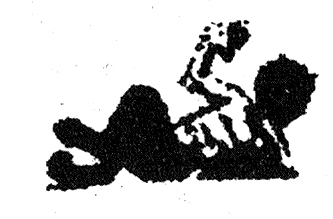

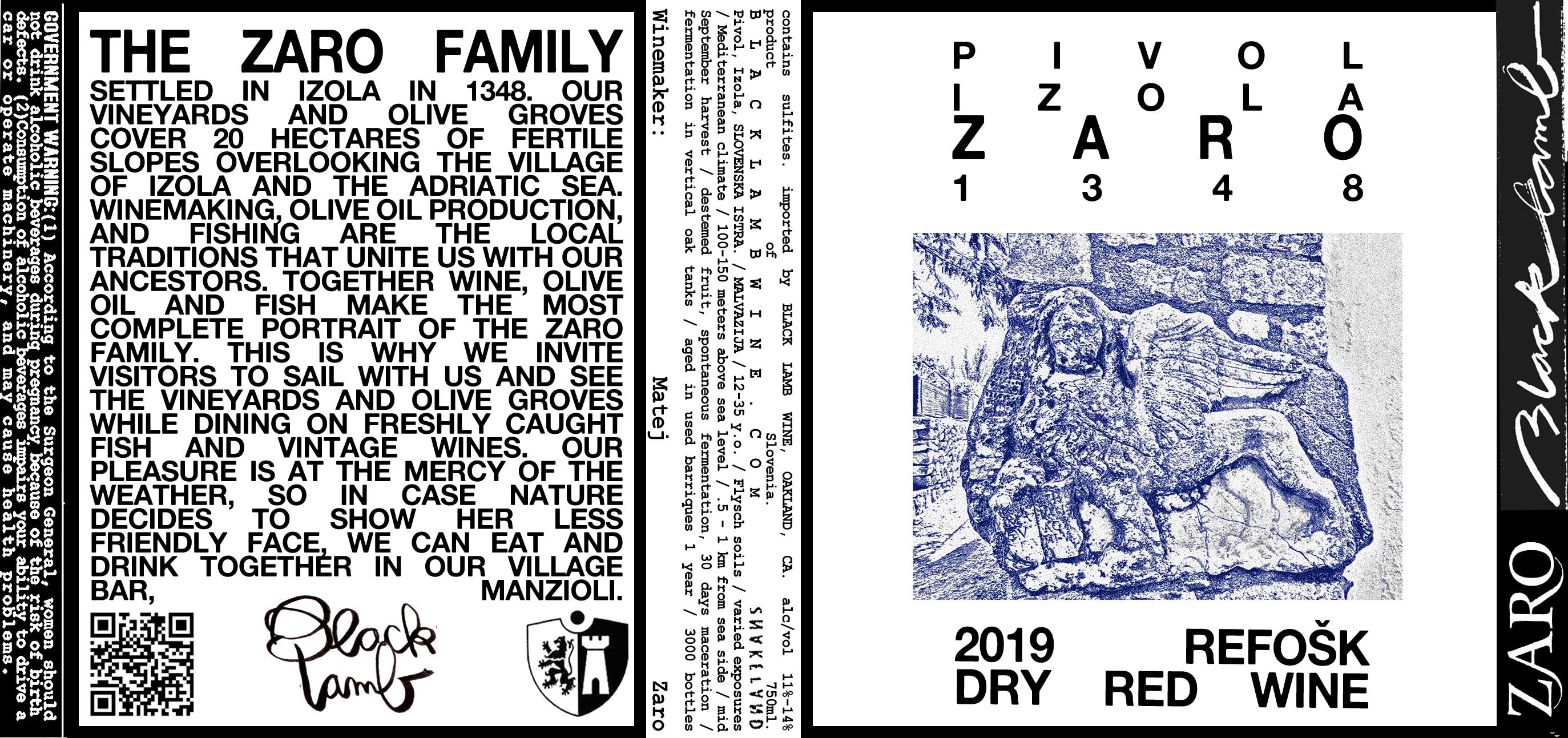
PIVOL REFOŠK
DRY RED WINE
WINE MAKER: Matej Zaro
VINTAGE: 2019
LOCATION: Pivol
VINEYARD (HA): Santa Camela
ASPECT: terraced South East facing, varied exposures
ALTITUDE: 100-150m
YEAR(S) PLANTED: 2012, 1990
SOIL COMPOSITION: Flysch
PREVAILING CLIMATE & LOCAL CLIMACTIC: Warm Mediterranean
FARMING: Organic
GRAPE COMPOSITION: Refošk
HARVEST: Mid September
MACERATION: destemmed fruit, 23 days
FERMENTATION: Spontaneous, vertical oak tank
AGING: 1 year used Slovanian barrique
FINING & FILTRATION: none
BOTTLED: April, 2023
BOTTLES PRODUCED: 4,000
The majority of Zaro’s vineyards are located within the special Cru of Pivol. The micro appellation is centered in an amphitheater that overlooks the village of Izola and the Adriatic. The stony flysch soils combined with the windy, dry well exposed position are so conducive to organic cultivation that certifying the vineyards was more a matter of paperwork than adjusting farming practices. Zaro Pivol Refošk is the key stone of their production. It has the characteristic dark color and bright acidity of the variety but in a sunnier, more sumptuous form due to its prominent exposure. The vineyards are a half mile from the Adriatic and bear a salty, sapiness for it. There are few full bodied red wines so well suited to seafood. It is in fact what the wines shine most of all with. Especially strong seafood like mussels and mackerel. Refošk is quite reactive to the conditions under which it is grown and this translates into the wines. It can be fashioned as a light, tart and gupable quaff, as a powerful deep late harvest wines with astonishing structure and bracing acidity or anything in between. The exceptional location of Zaro’s vineyards on Pivol has been prized, at least as long as Venice has stood. Zaro Refošk smells of fresh mountain berries, camphor, pepper, violets, charcuterie and pulverized rocks. It is simultaneously structured and refreshing. The fermentation was spontaneous without temperature control in 2000l Slovenian oak. Maceration was 20ish days after which wine was racked back into the 2000l tonne and aged for 1 year. Bottled unfined and unfiltered. Serving Refošk with salt cured ham is almost automatic in Slovenia, but we will open it for iron forward meats like lamb, dry aged beef, venison or even tuna.
SPECIAL PROJECTS
NV THUNDER EGG
Cultural exchange is the essence of Black Lamb, more than alcohol, culture is what we deal in. This makes the ‘laundromat shakedown’ style tariffs an especially hot pile of shit; and then there is how they spend our extorted monies. We can take some small relief in that history is on the side of wine. Nations are young, wine culture is old. Any border where there is viticultural history establishes that the culture of wine came before the border. The adaptive abilities of those who tend the vine are the source of wine’s persistence. So, we too can adapt.
In November of 24’, we visited Dan Rinke and his partner Kim Hamblin at Art + Science to drink a little cider, and such, and to see the many foraged fruits collected in their cooler that would soon be crushed. Dan shared some wines that were not part of their production. He explained they were made from unsold fruit destined to be sold to a distillery to recoup some of the vineyard costs. We tasted Pinot Noir, Grüner Veltliner, and Zweigelt. Each wine was a feather, super light and gentle, as light wine is better for distillation. We liked the lot so much that we made plans to bottle a mixed barrel for our own drinking. During a subsequent visit we were playing around with the various components and Ryšák appeared. Combine this with our fear of unpredictable tariff costs and the 1 barrel became 8 barrels.Tomorrow we bottle and quickly it will be available.
Born of angst, a fledgling love of North West wine, and a compulsion towards cultural play, meet THUNDER EGG! This is the first bottling from SPECIAL PROJECTS; a collaboration between Oregon’s finest fruit, Black Lamb, and Dan Rinke (Art + Science). A thunderegg (or thunder egg) is a nodule-like rock, similar to a filled geode, that is formed within rhyolitic volcanic ash layers. It is the state rock of Oregon, representative of the region’s volcanic geology and now the inaugural SPECIAL PROJECT.
In addition to sourcing grapes from them, A university trained viticulturalist and expert in conscientious farming, Dan works with both vineyards as an organic/biodynamic viticultural consultant. This puts him in contact with growers who may have fruit for us to utilize for future SPECIAL PROJECTS.
We are grateful to be working with Dan and Kim on this project. We hope to continue as long as we can serve as an outlet to such high quality underutilized fruit. Perhaps in time the circumstances we are collectively suffering under will change and we will be a more diverse enterprise for it. We hope…
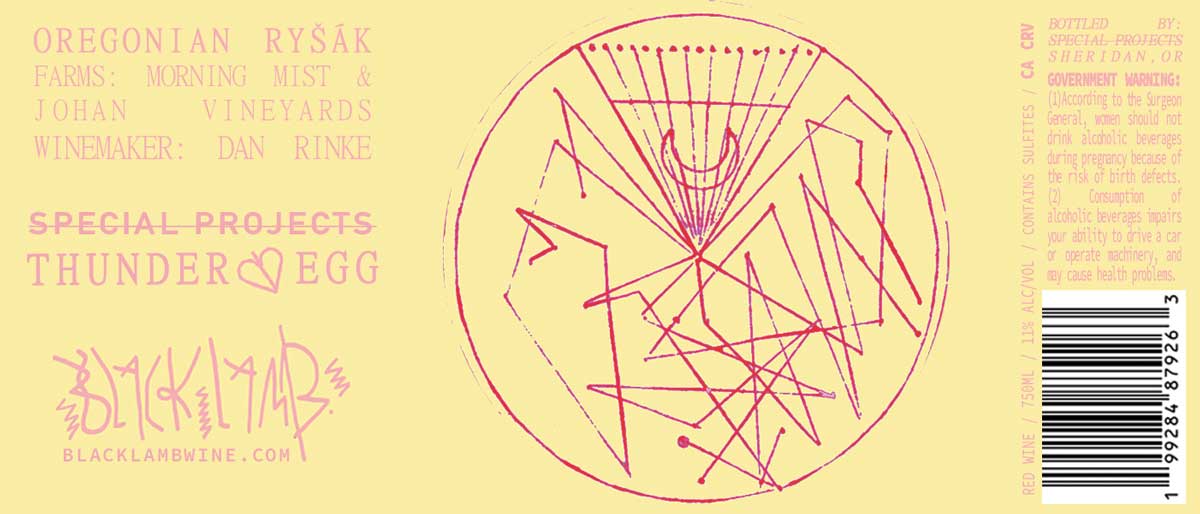
SPECIAL PROJECTS
NV THUNDER
EGG
REDISH WINE
RED/WHITE wine
WINE MAKER: Dan Rinke
VINTAGE: 2024
LOCATION: Willamette, Willamette Valley
VINEYARDS: 85% Morning Mist Vineyard West Yamhill - 5 acres, 15% Johan Vineyard - 87 acres
ASPECT: gentle hills
ALTITUDE: Morning Mist 750’ above sea level, Johan 200’ above sea level
VINE AGE: Planted 2007-2015
SOIL COMPOSITION: Morning Mist is mixed volcanic soils, Johan Missoula granitic marine sediment
PREVAILING CLIMATE & LOCAL CLIMACTIC: Mediterranean, cold winters
FARMING: Organic/biodynamic
GRAPE COMPOSITION: Pinot Noir, Grüner Veltliner, Zweigelt, Monduse
HARVEST: by hand, beginning of September
MACERATION: Pinot Noir, Grüner Veltliner, Zweigelt, Whole cluster, direct pressed. Monduse and a small percentage of Pinot Noir macerated for 3 weeks, whole cluster.
FERMENTATION: Pinot Noir, Grüner Veltliner fermentation separately in IBC totes, Zweigelt, Monduse and a small portion of Pinot Noir in used barrique.
FINING & FILTRATION: None
So2: 15 ppm
ALC: 11%
BOTTLED: 6/24/2024
BOTTLES PRODUCED: 2400
WINE MAKER: Dan Rinke
VINTAGE: 2024
LOCATION: Willamette, Willamette Valley
VINEYARDS: 85% Morning Mist Vineyard West Yamhill - 5 acres, 15% Johan Vineyard - 87 acres
ASPECT: gentle hills
ALTITUDE: Morning Mist 750’ above sea level, Johan 200’ above sea level
VINE AGE: Planted 2007-2015
SOIL COMPOSITION: Morning Mist is mixed volcanic soils, Johan Missoula granitic marine sediment
PREVAILING CLIMATE & LOCAL CLIMACTIC: Mediterranean, cold winters
FARMING: Organic/biodynamic
GRAPE COMPOSITION: Pinot Noir, Grüner Veltliner, Zweigelt, Monduse
HARVEST: by hand, beginning of September
MACERATION: Pinot Noir, Grüner Veltliner, Zweigelt, Whole cluster, direct pressed. Monduse and a small percentage of Pinot Noir macerated for 3 weeks, whole cluster.
FERMENTATION: Pinot Noir, Grüner Veltliner fermentation separately in IBC totes, Zweigelt, Monduse and a small portion of Pinot Noir in used barrique.
FINING & FILTRATION: None
So2: 15 ppm
ALC: 11%
BOTTLED: 6/24/2024
BOTTLES PRODUCED: 2400
Ryšák is the Czech word for “redhead” and the most typical style of wine from South Moravia (not Oregon). The only production requirement is that it be a blend of red and white varieties, otherwise the winemaker is free to interpret. Ryšák are wildly inconsistent in composition and vinification; some are more white grapes, some more red, free run, whole cluster, macerated or not, some fresh, some aged, varietal bottlings, field blends, single vineyard, co-ferments, nv cuvees, anything goes. What is shared among Ryšák is their common function. Ryšák should reddish, convivial; serviceable as an aperitif or the main course. Temperature flexible. To be drunk year round. Fruity, savory and modest in alcohol. If you are like us, the sort of wine you can never have too much of.
Thunder Egg is a juicy, 11% abv., dry, barely red blend, primarily composed of direct press 2024 Pinot Noir, Gruner Veltliner and Zweigelt from Morning Mist Vineyard. Direct press juice into IBC totes, the Zweigelt into used barrique. A bright base of the 3 wines was blended and then seasoned with barrel aged Monduse and Pinot Noir from Johan Vineyard. Morning Mist is mixed volcanic soils, Johan Missoula flood marine sediment, both vineyards are farmed organic/biodynamic.
Thunder Egg is a juicy, 11% abv., dry, barely red blend, primarily composed of direct press 2024 Pinot Noir, Gruner Veltliner and Zweigelt from Morning Mist Vineyard. Direct press juice into IBC totes, the Zweigelt into used barrique. A bright base of the 3 wines was blended and then seasoned with barrel aged Monduse and Pinot Noir from Johan Vineyard. Morning Mist is mixed volcanic soils, Johan Missoula flood marine sediment, both vineyards are farmed organic/biodynamic.
